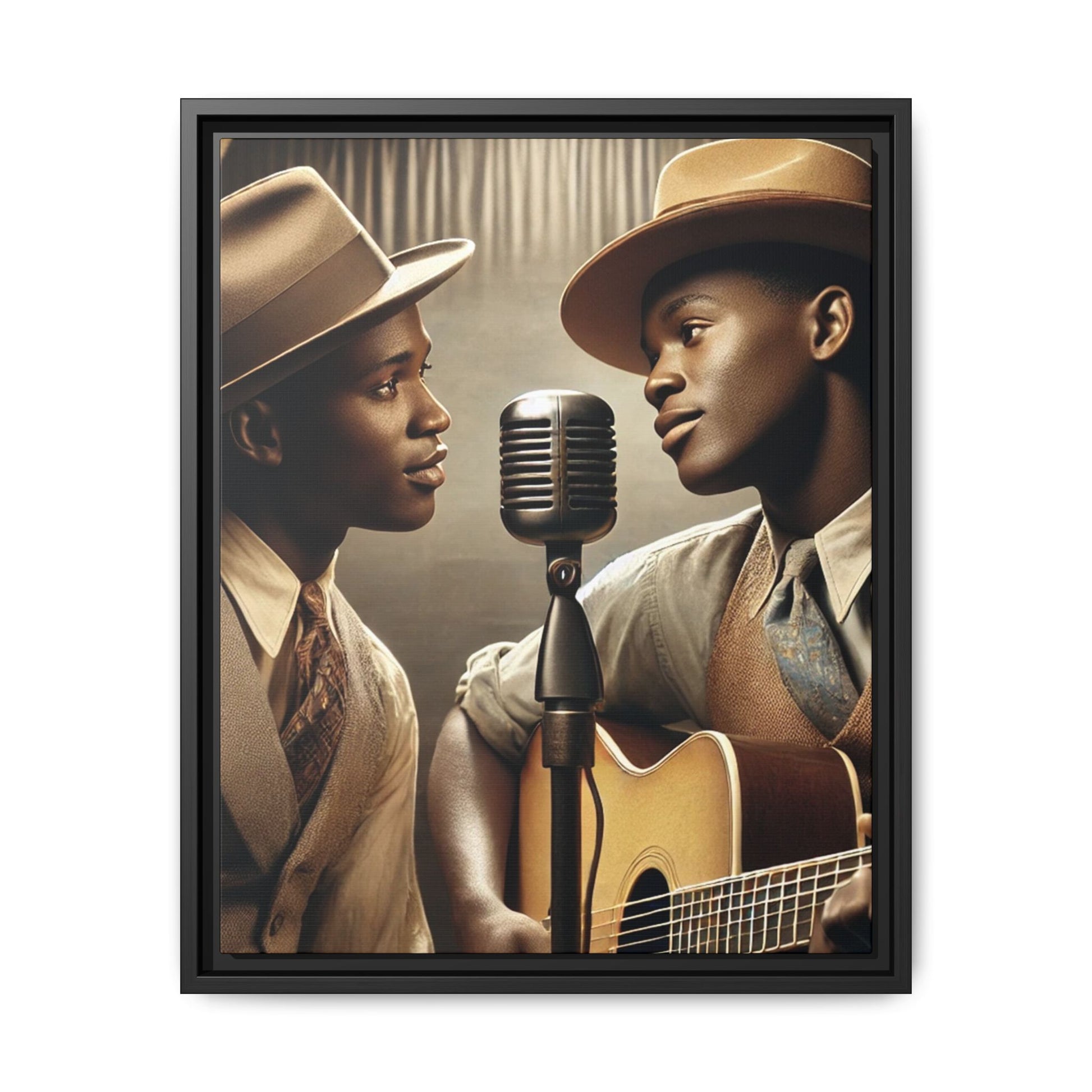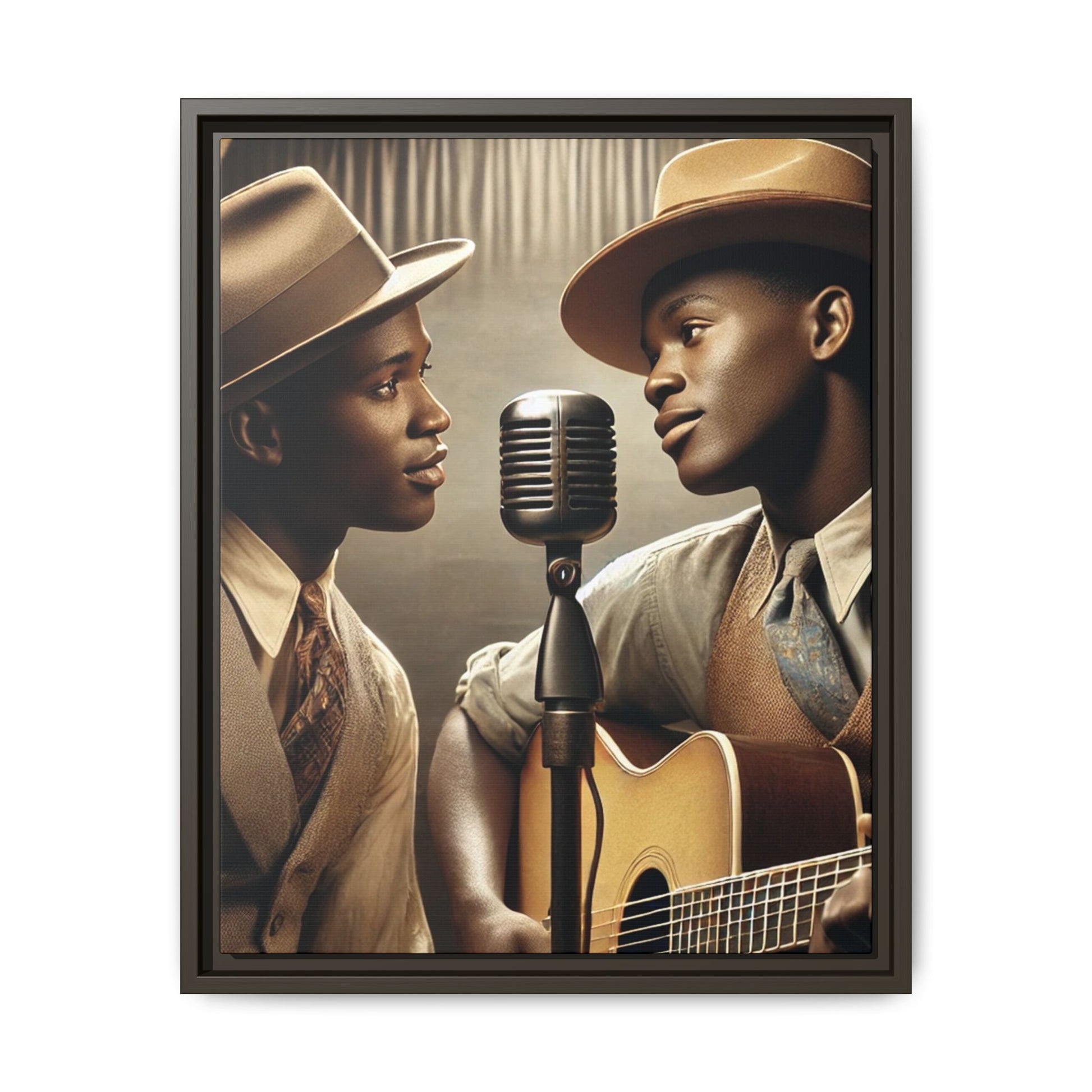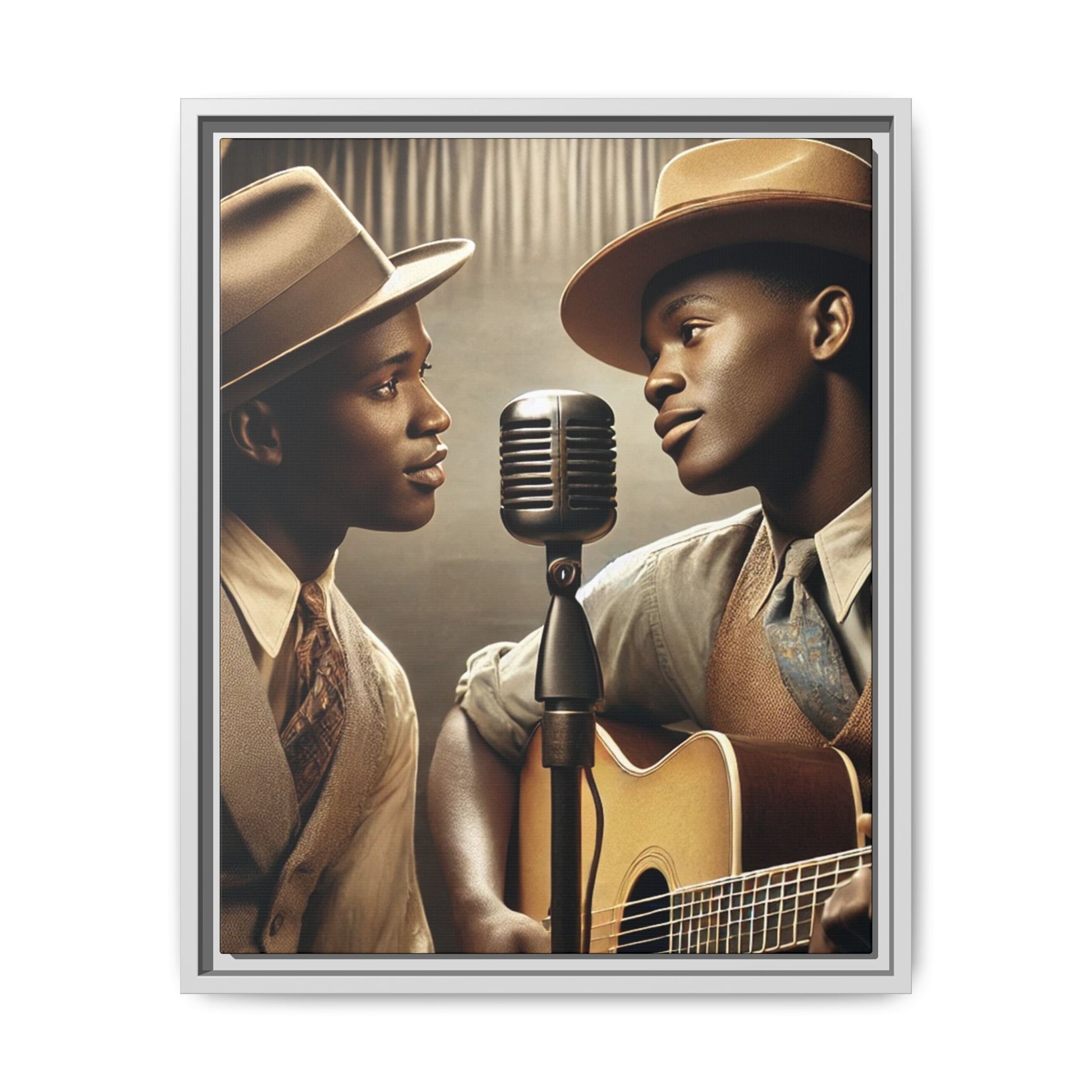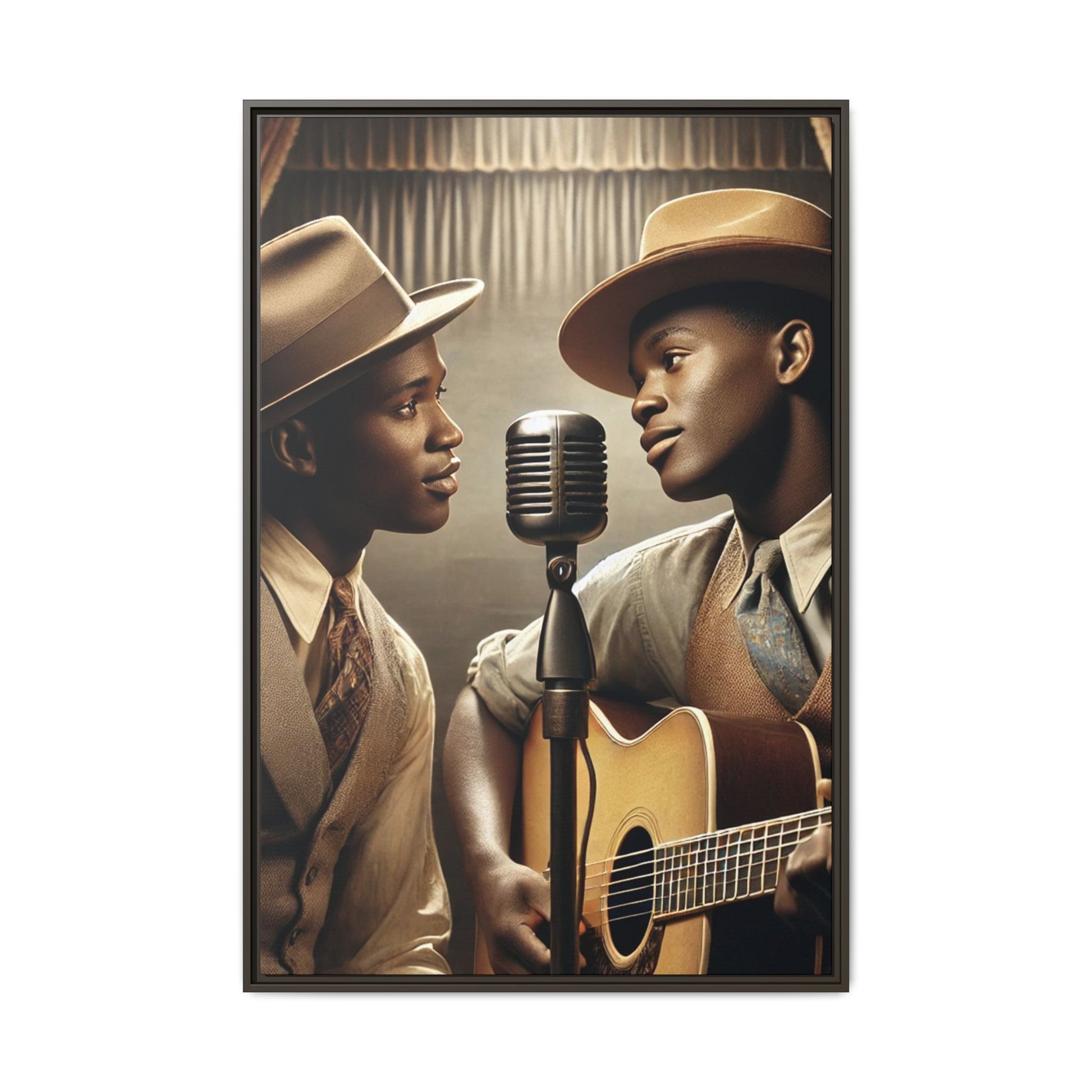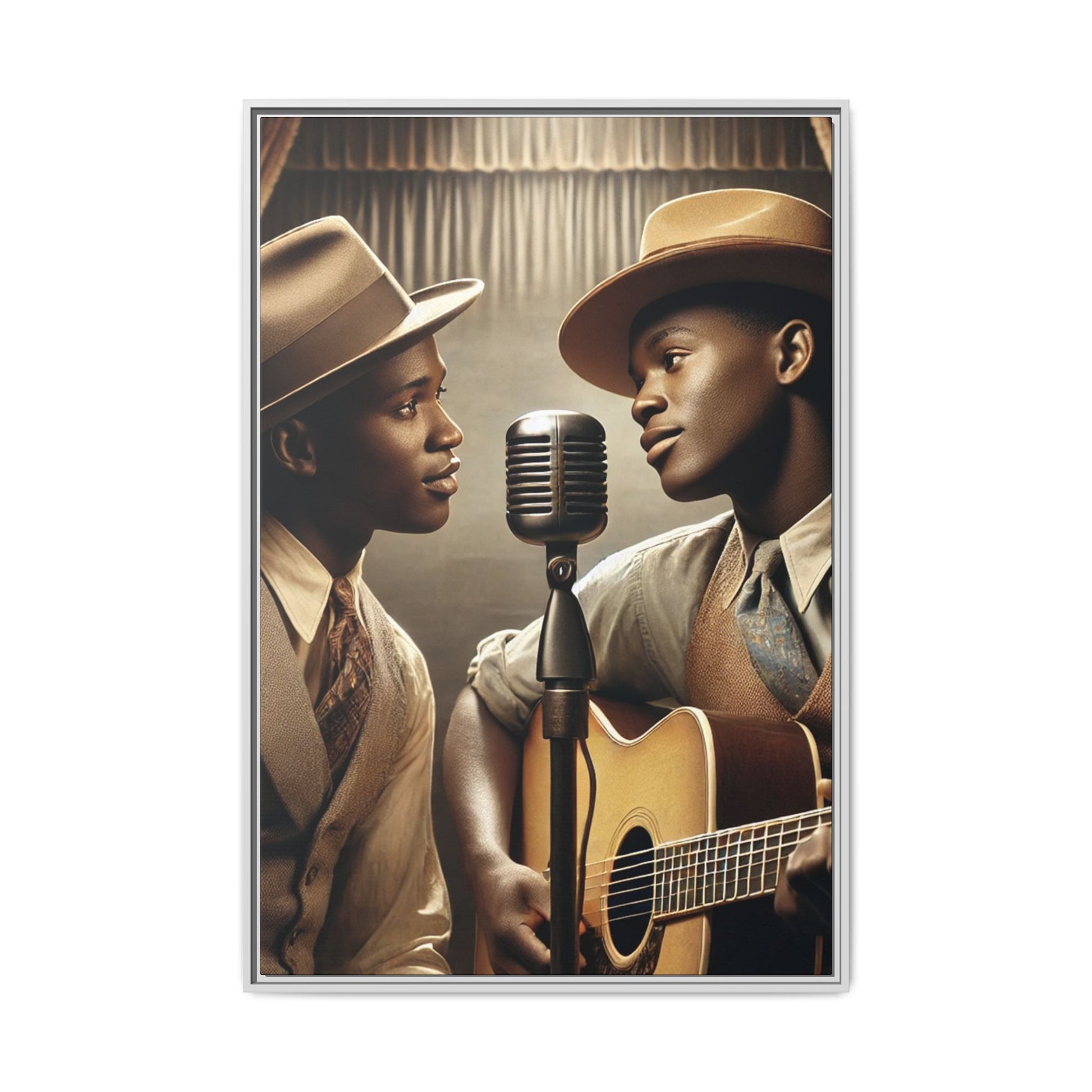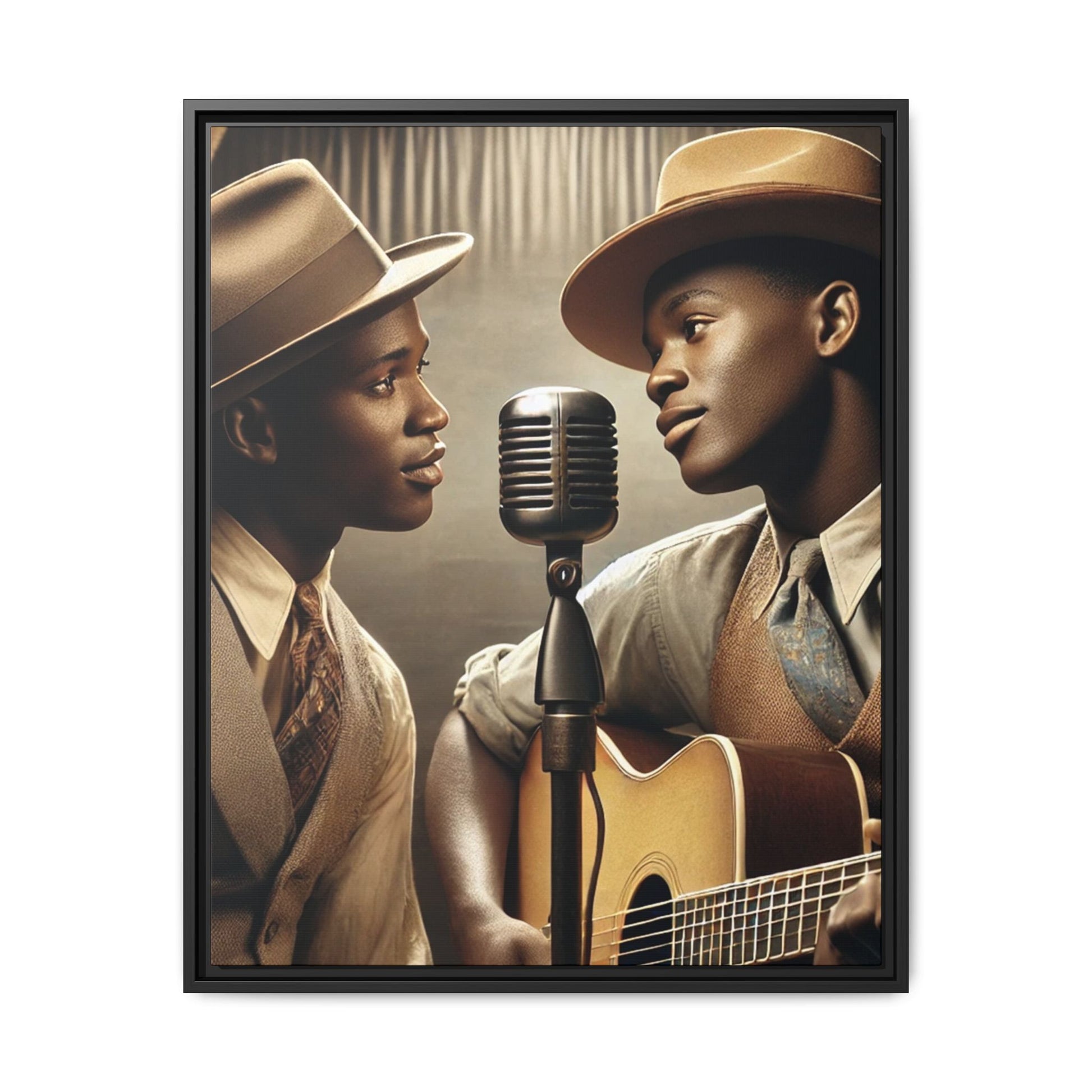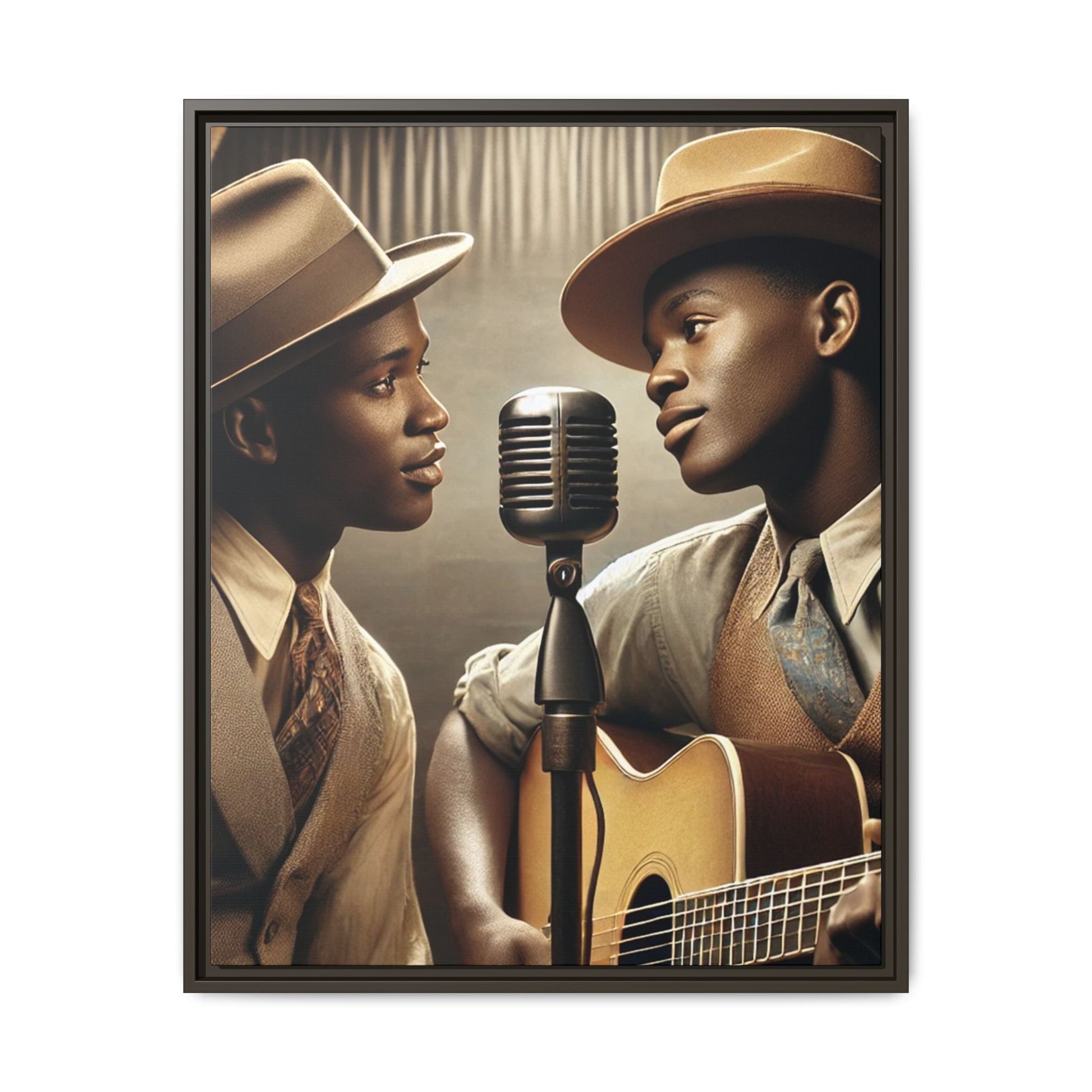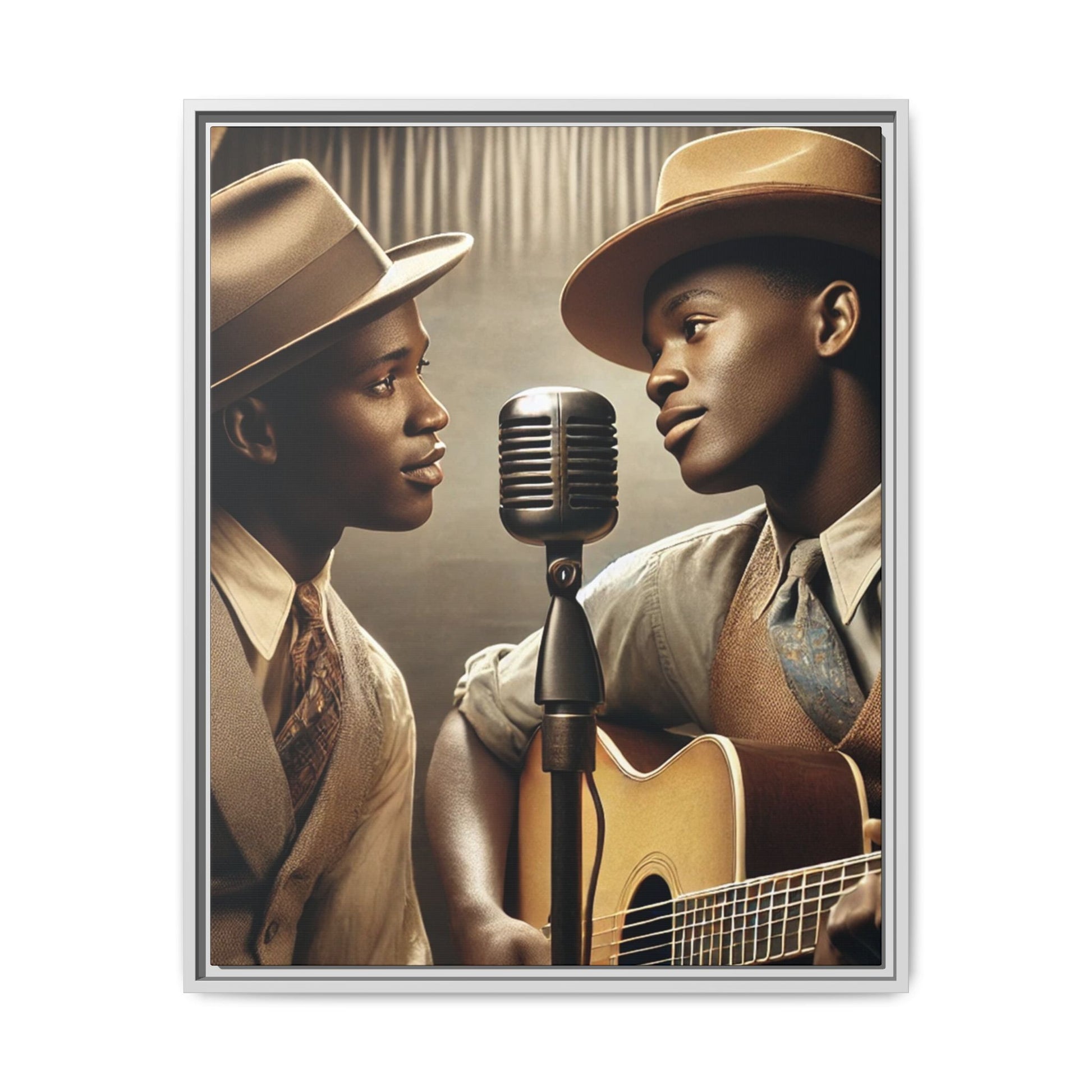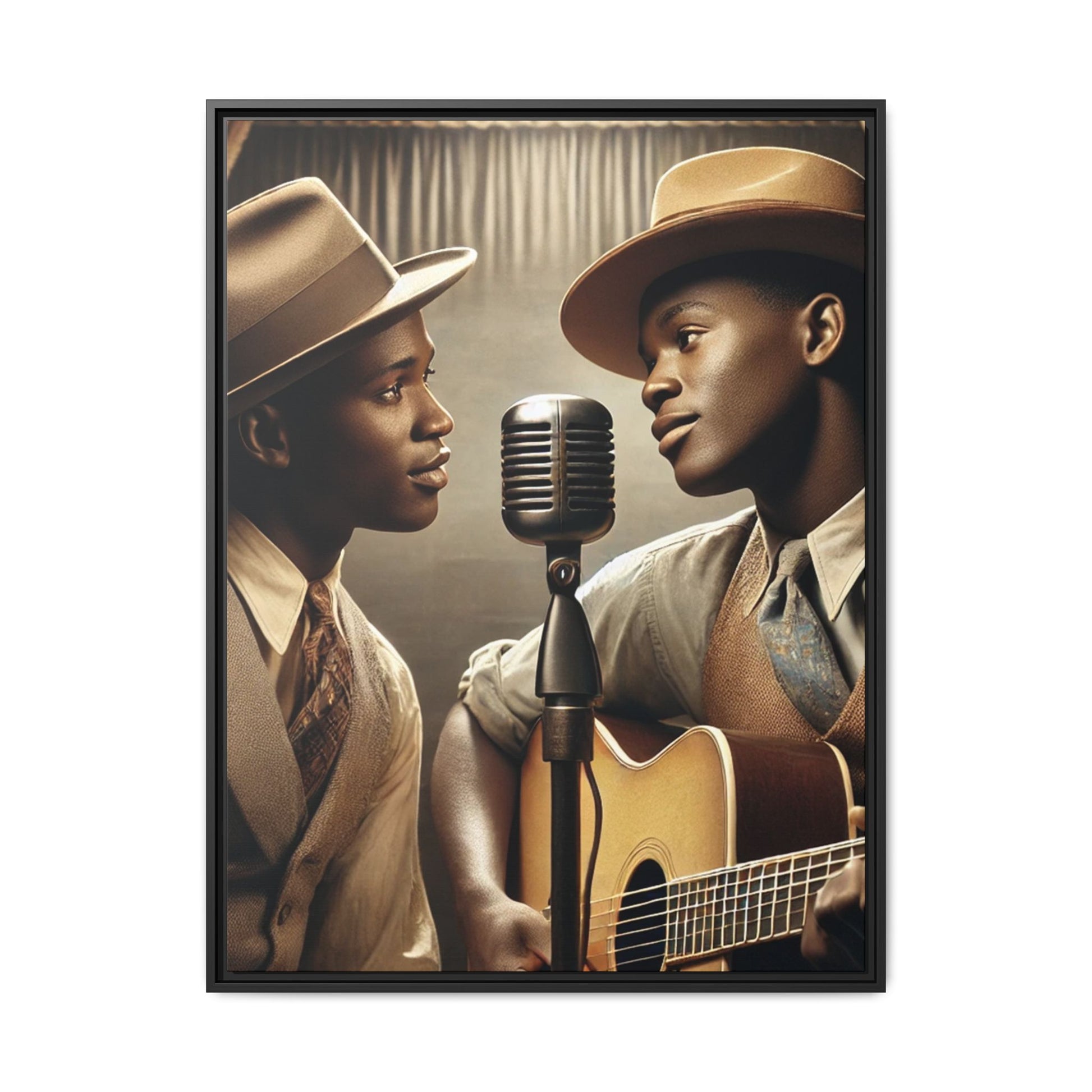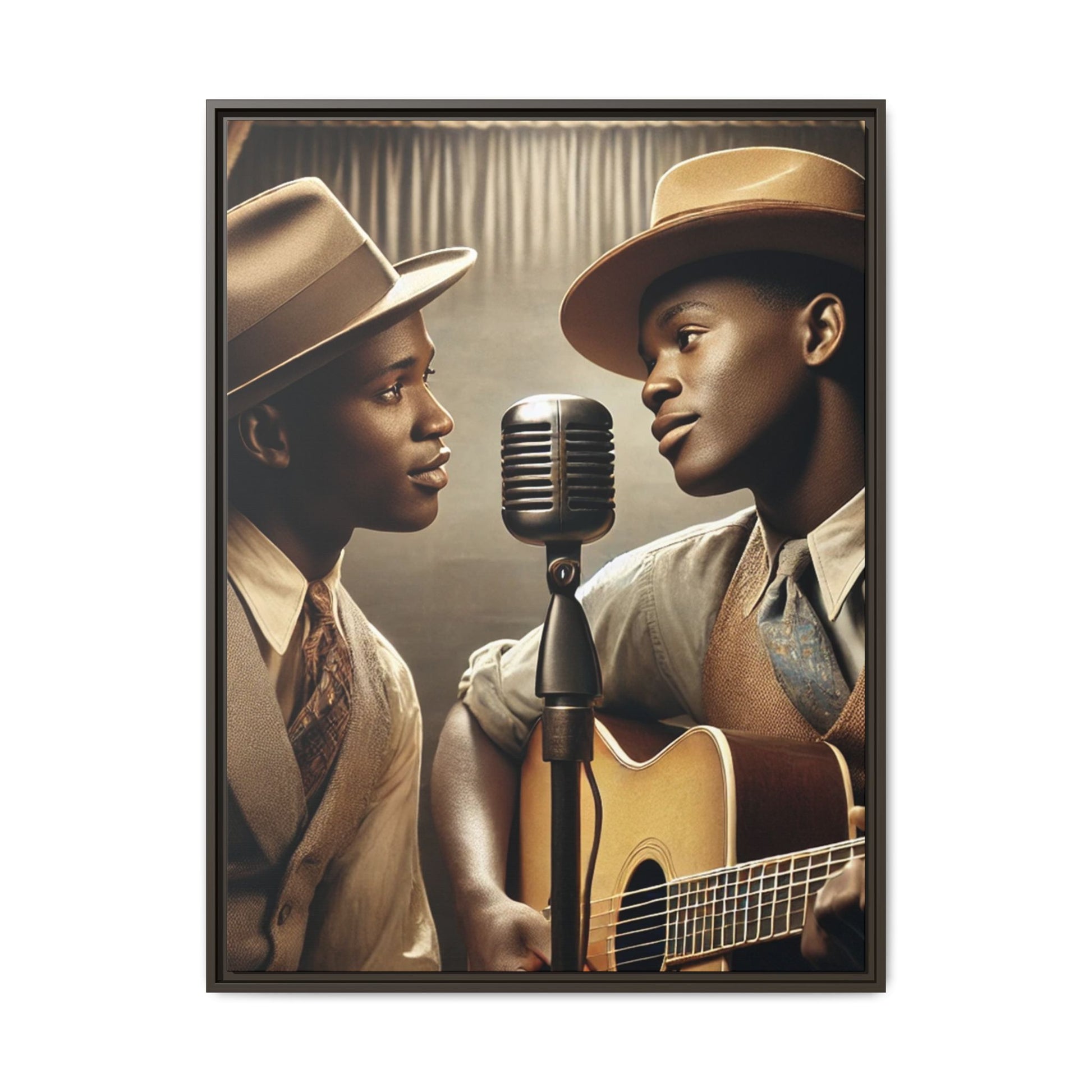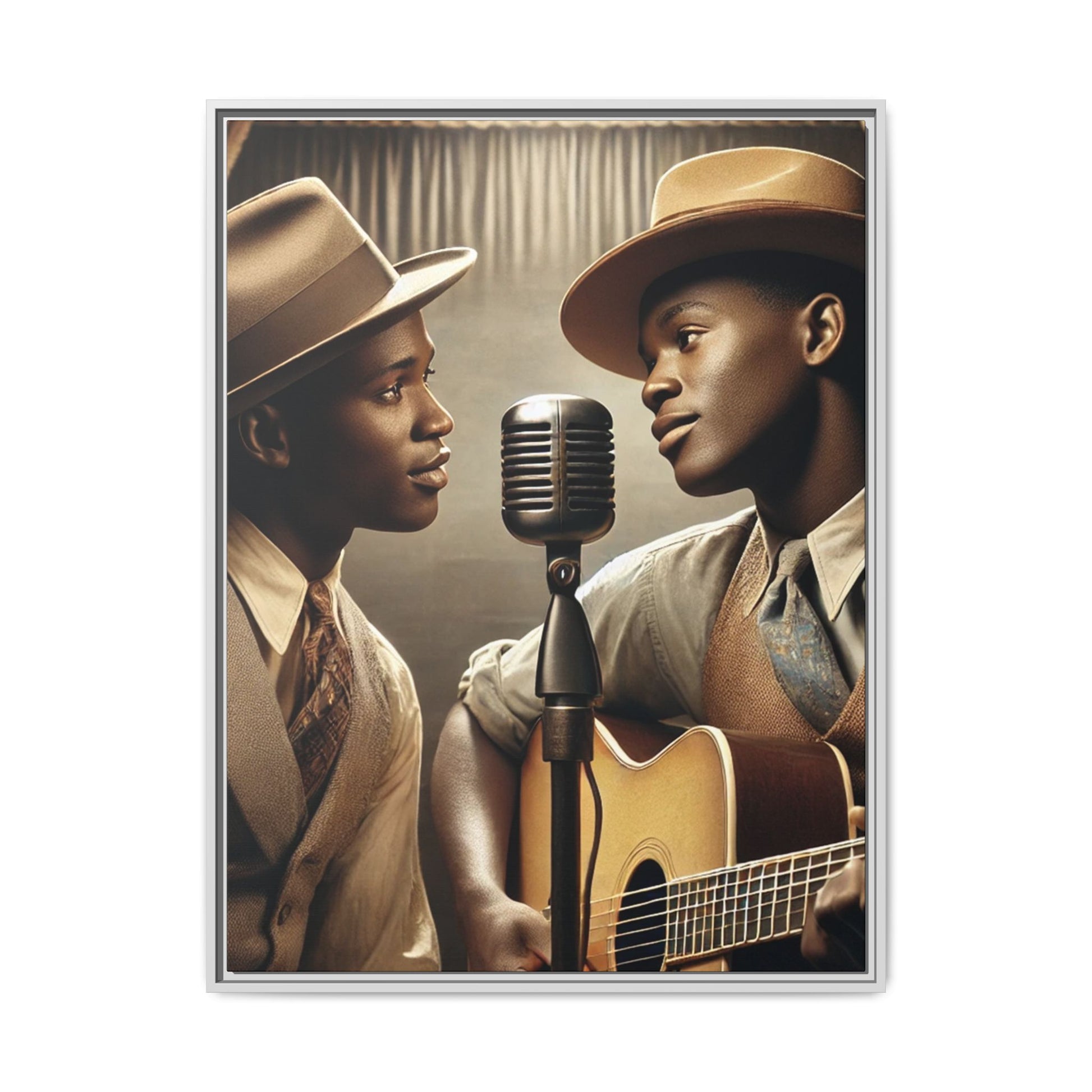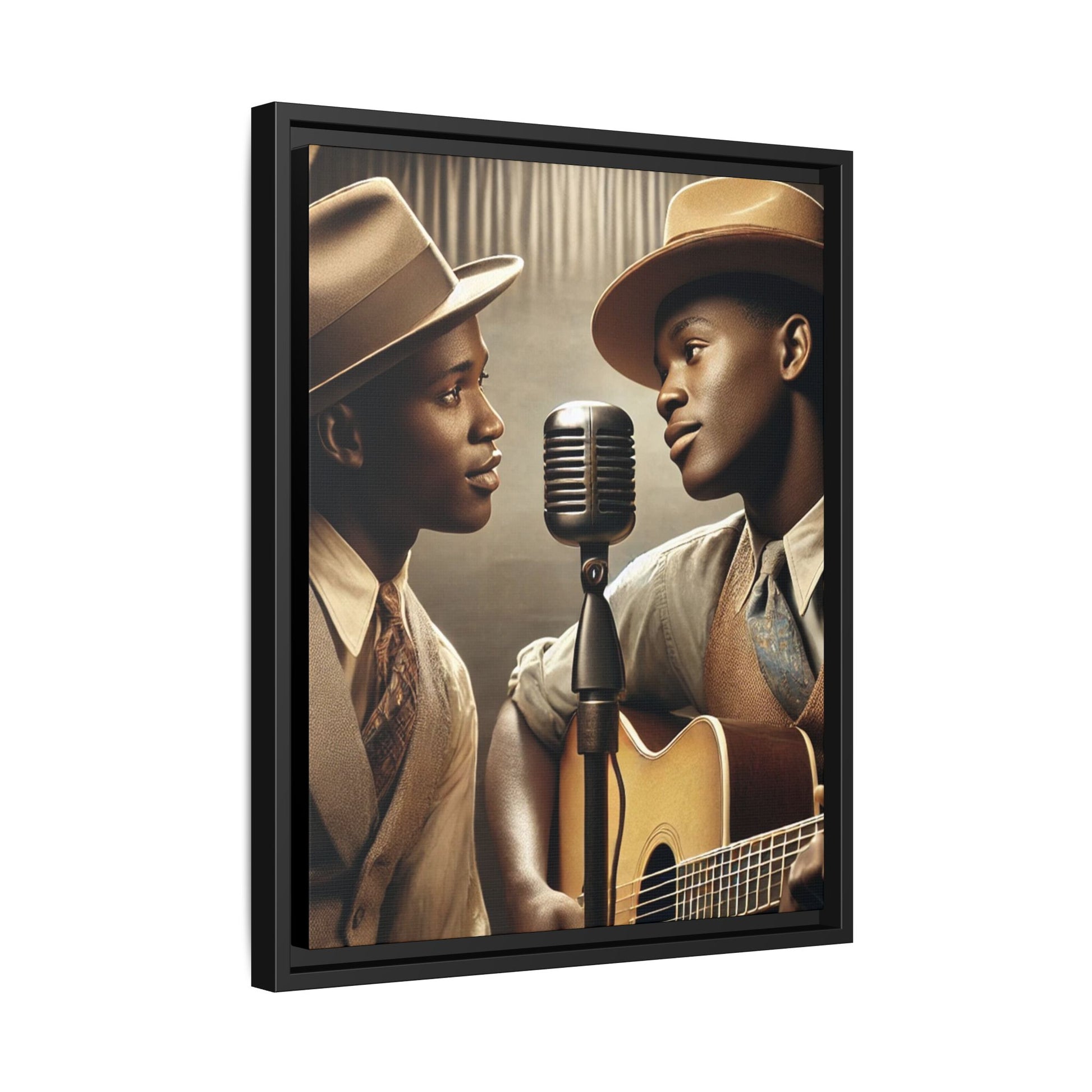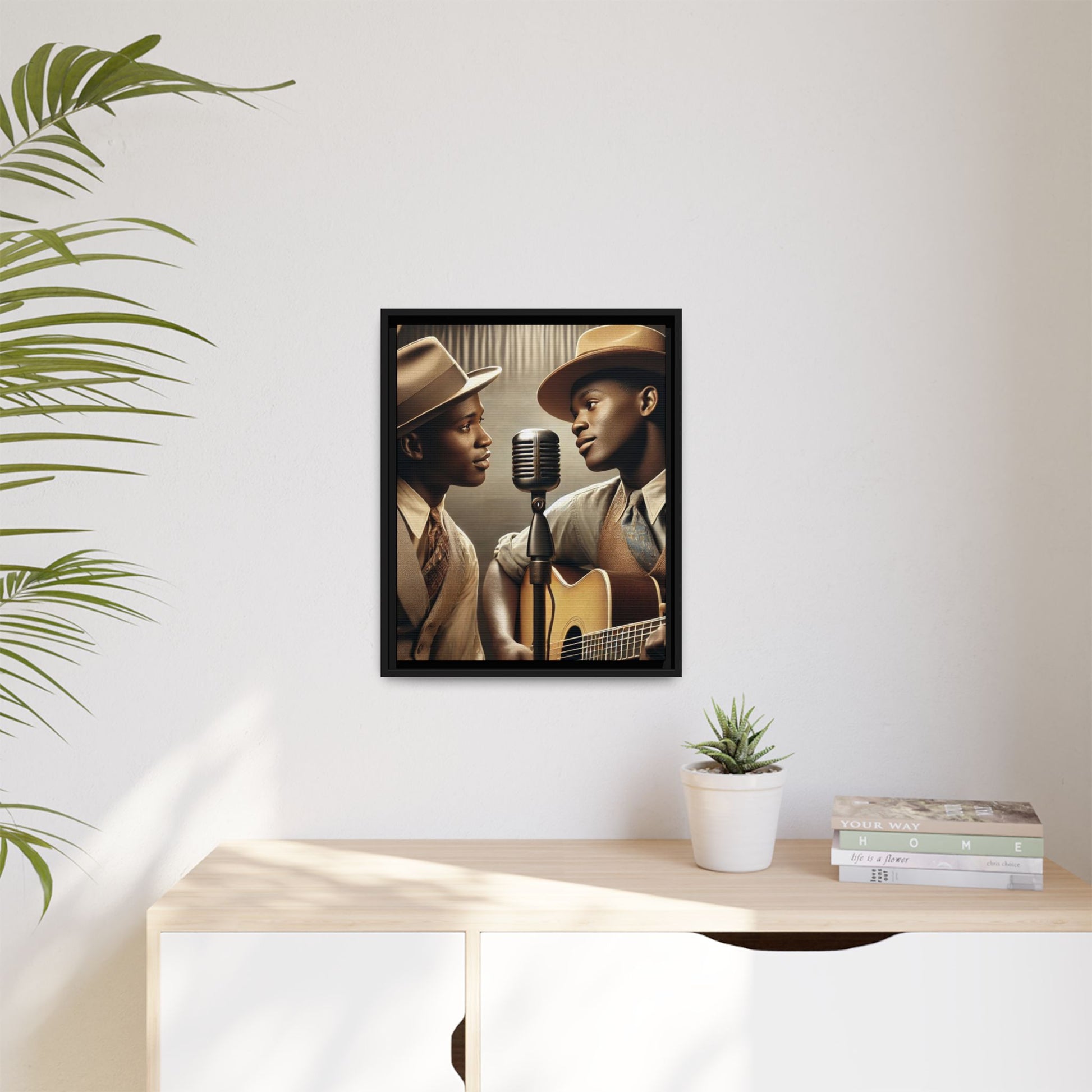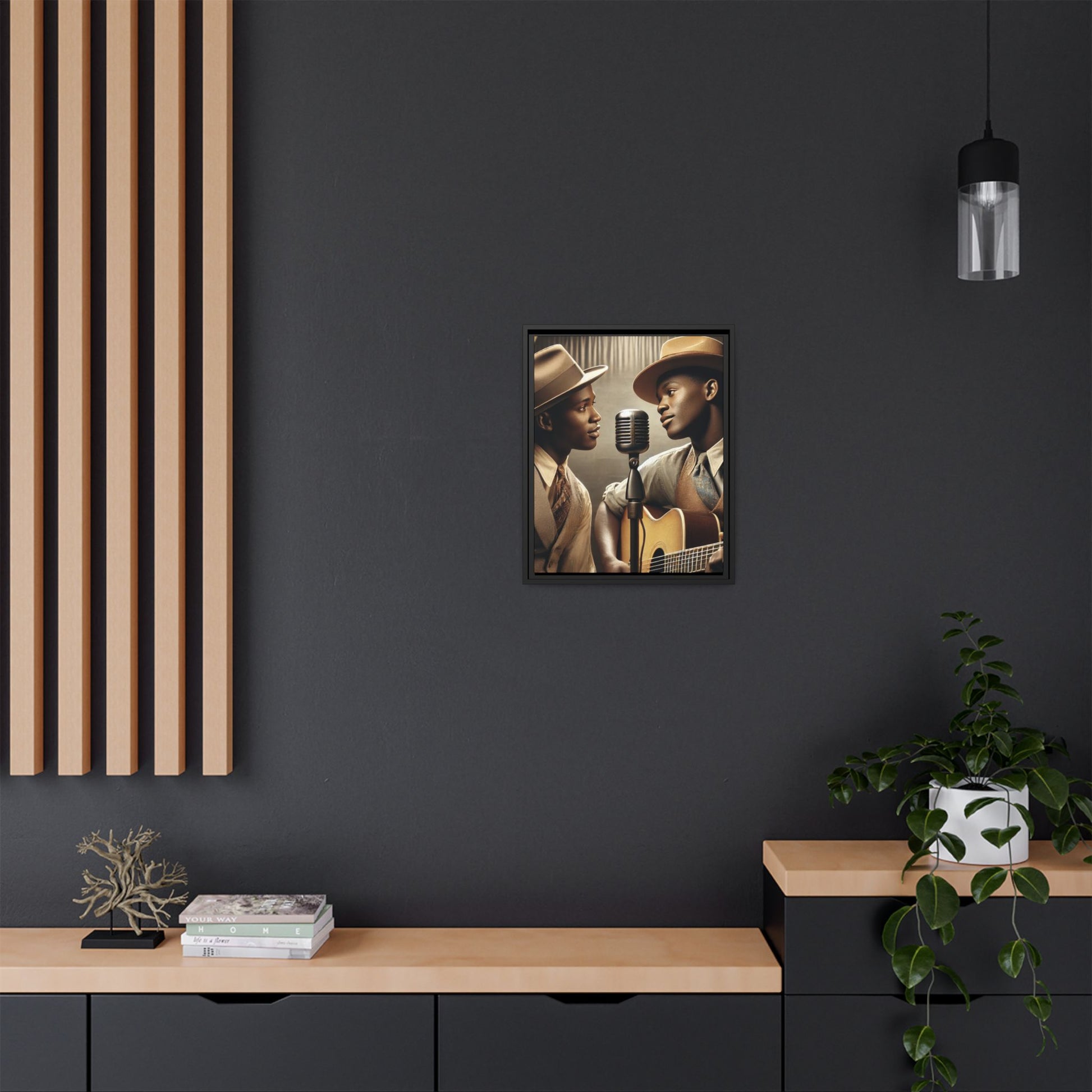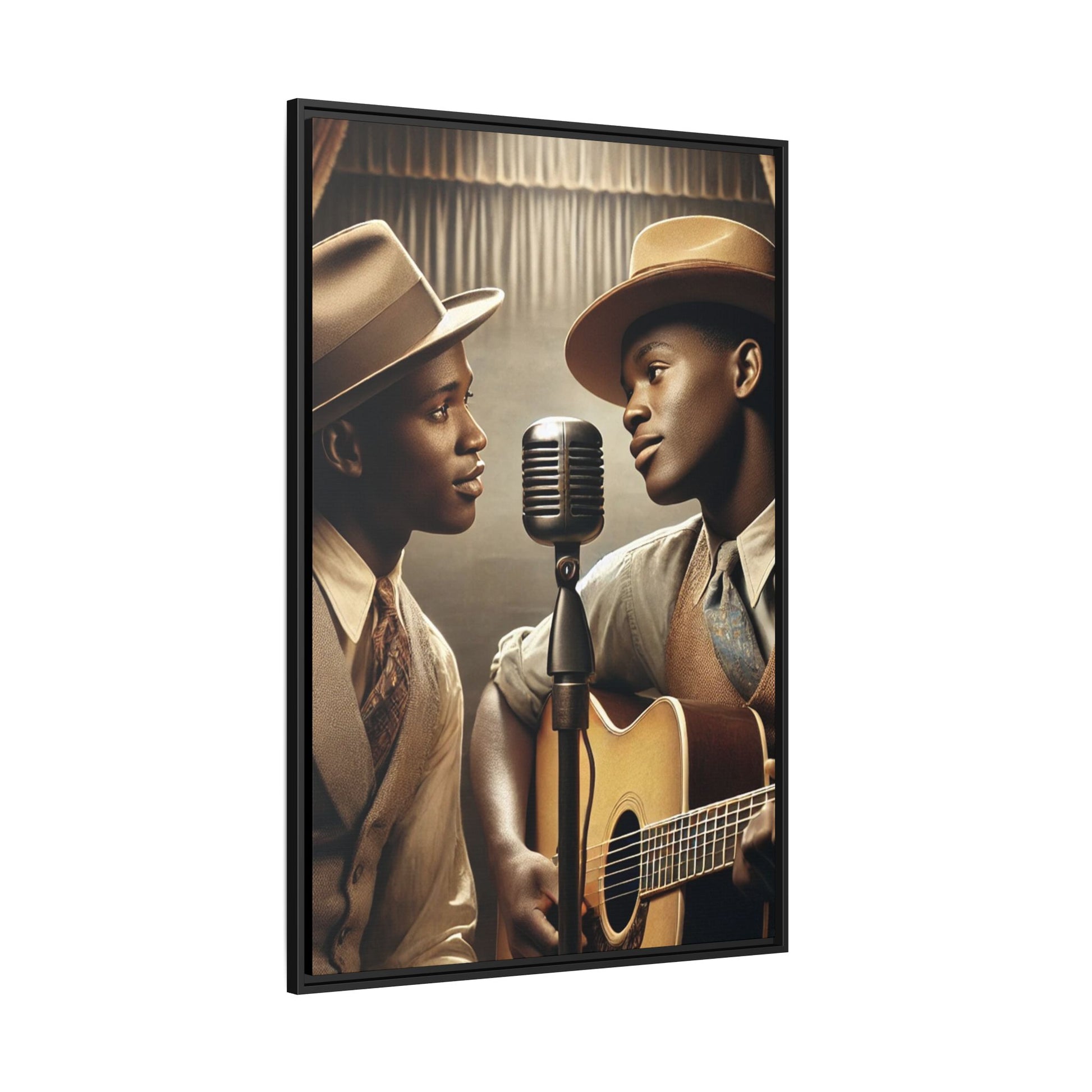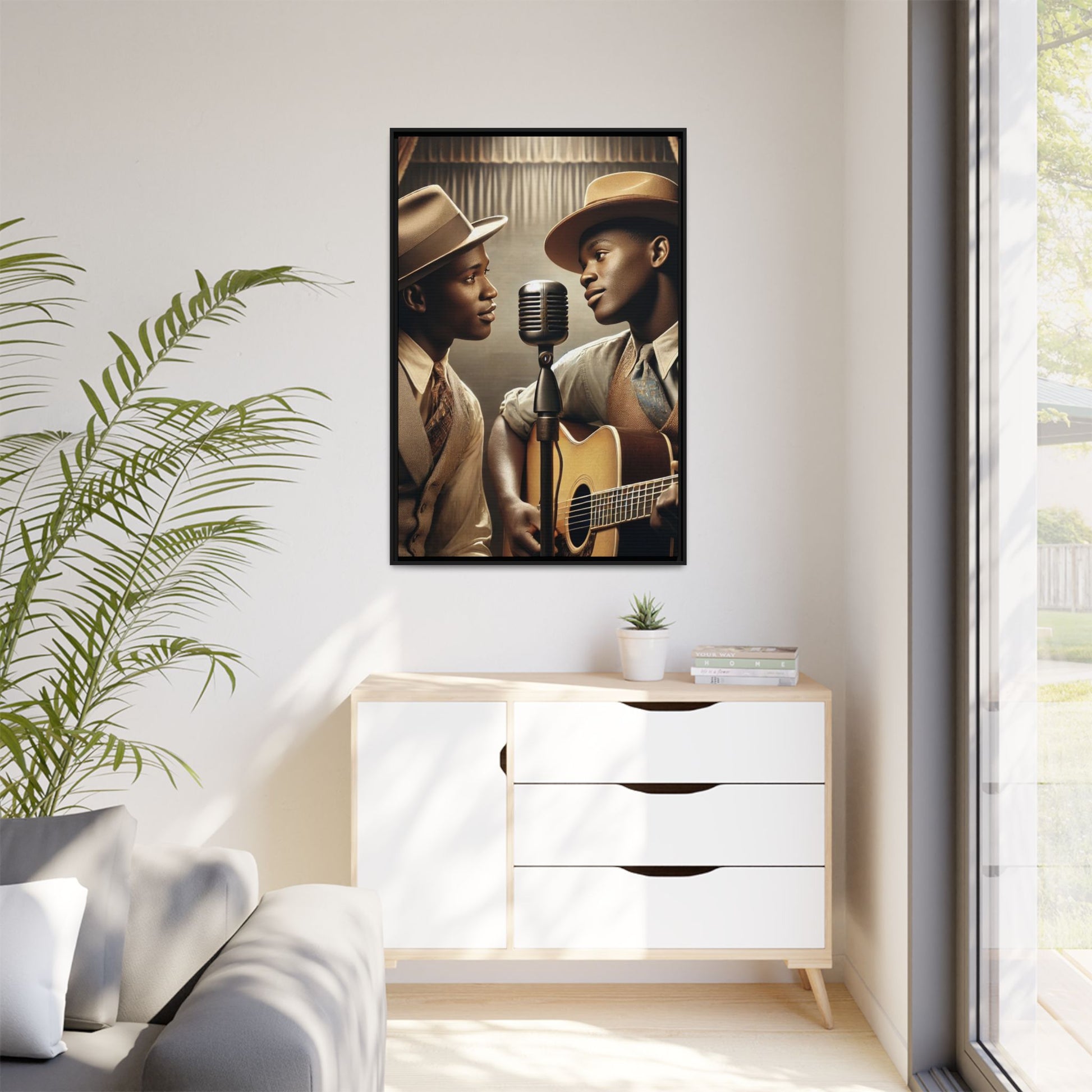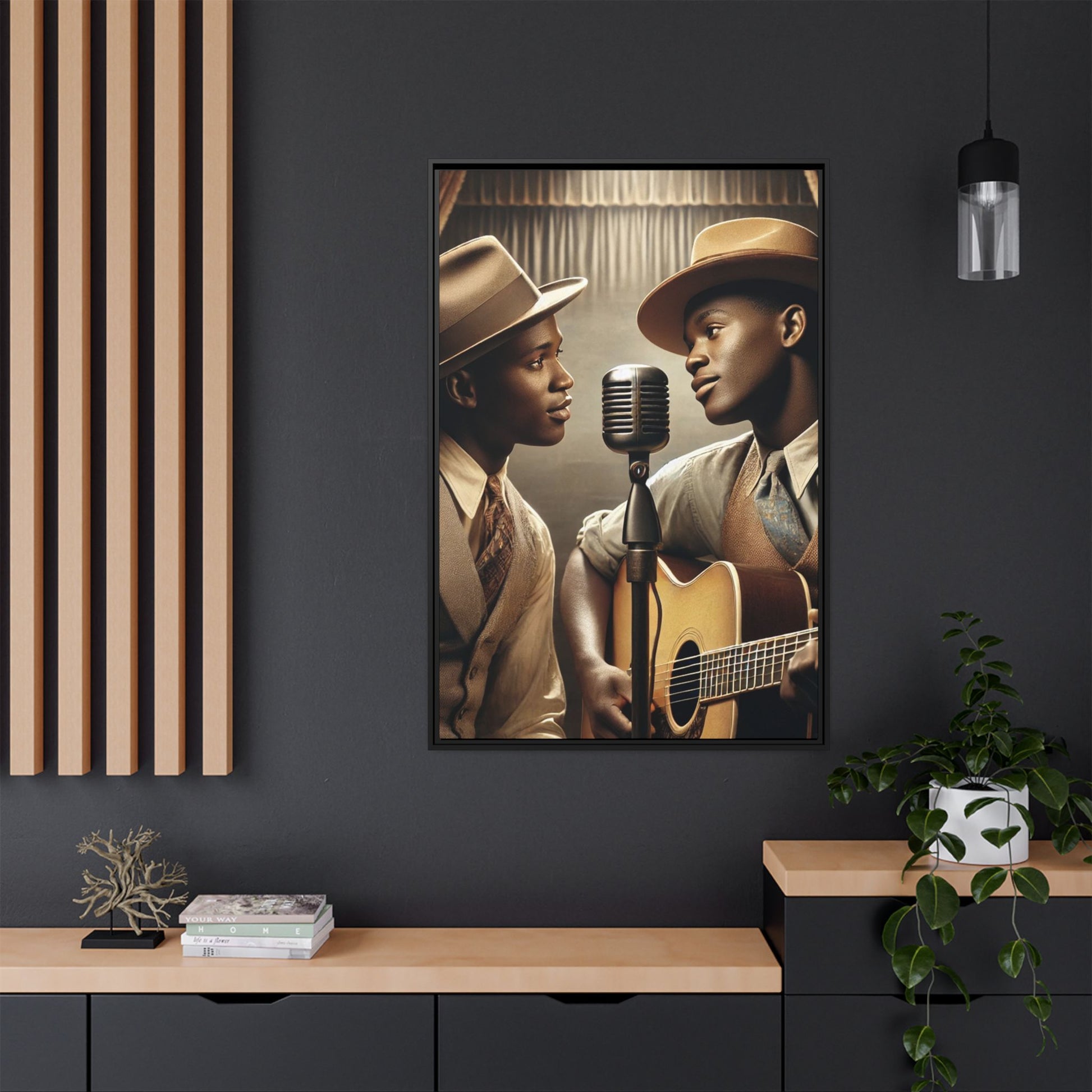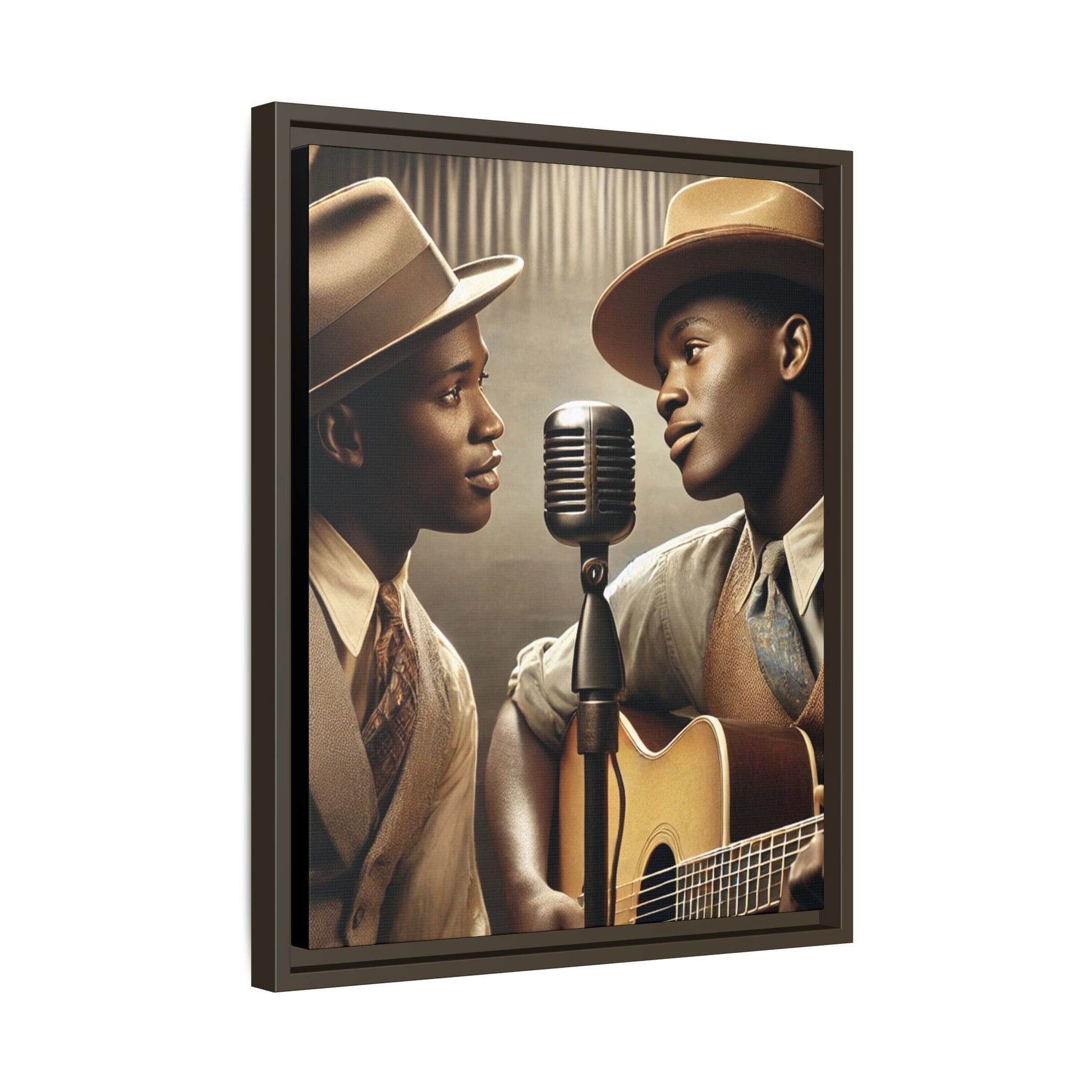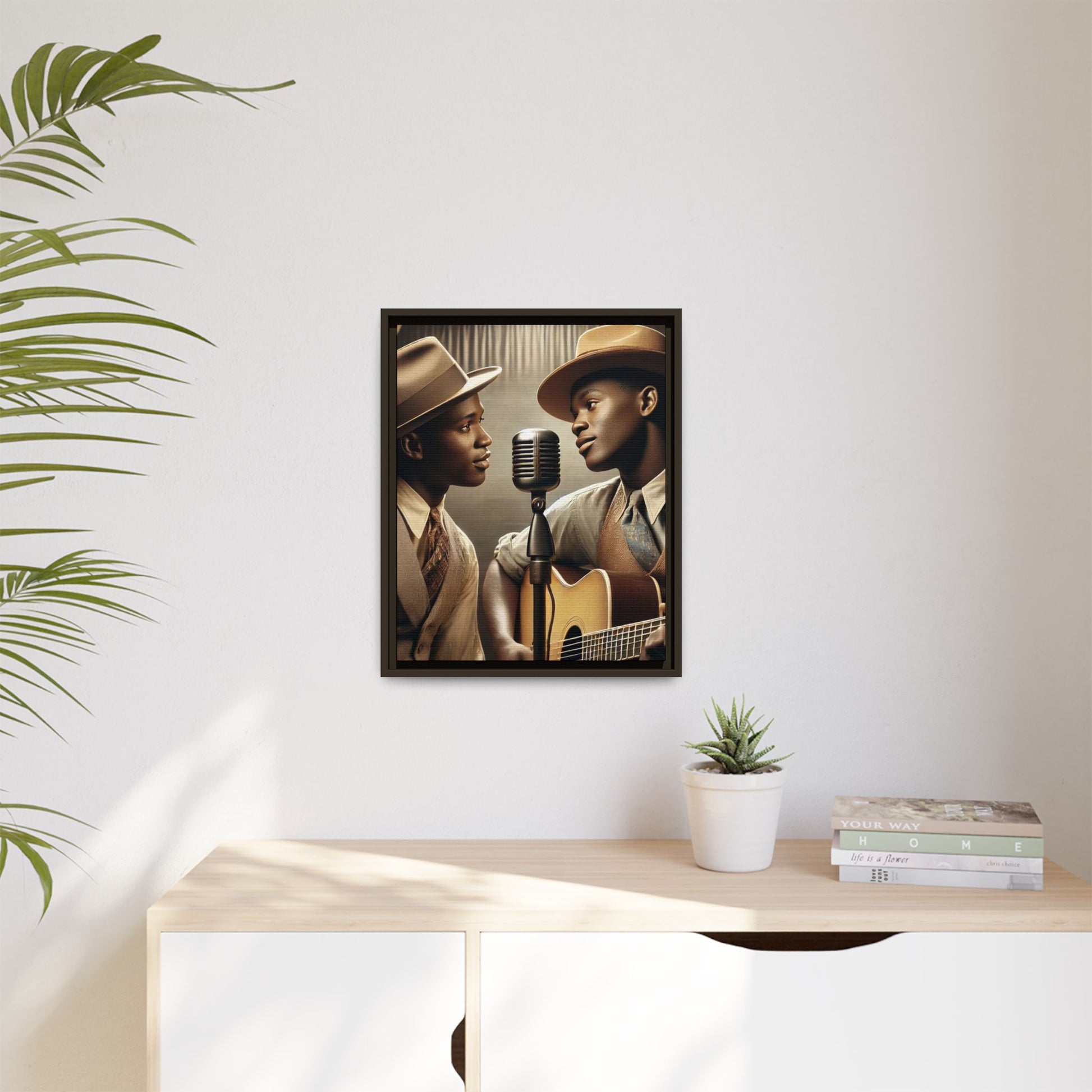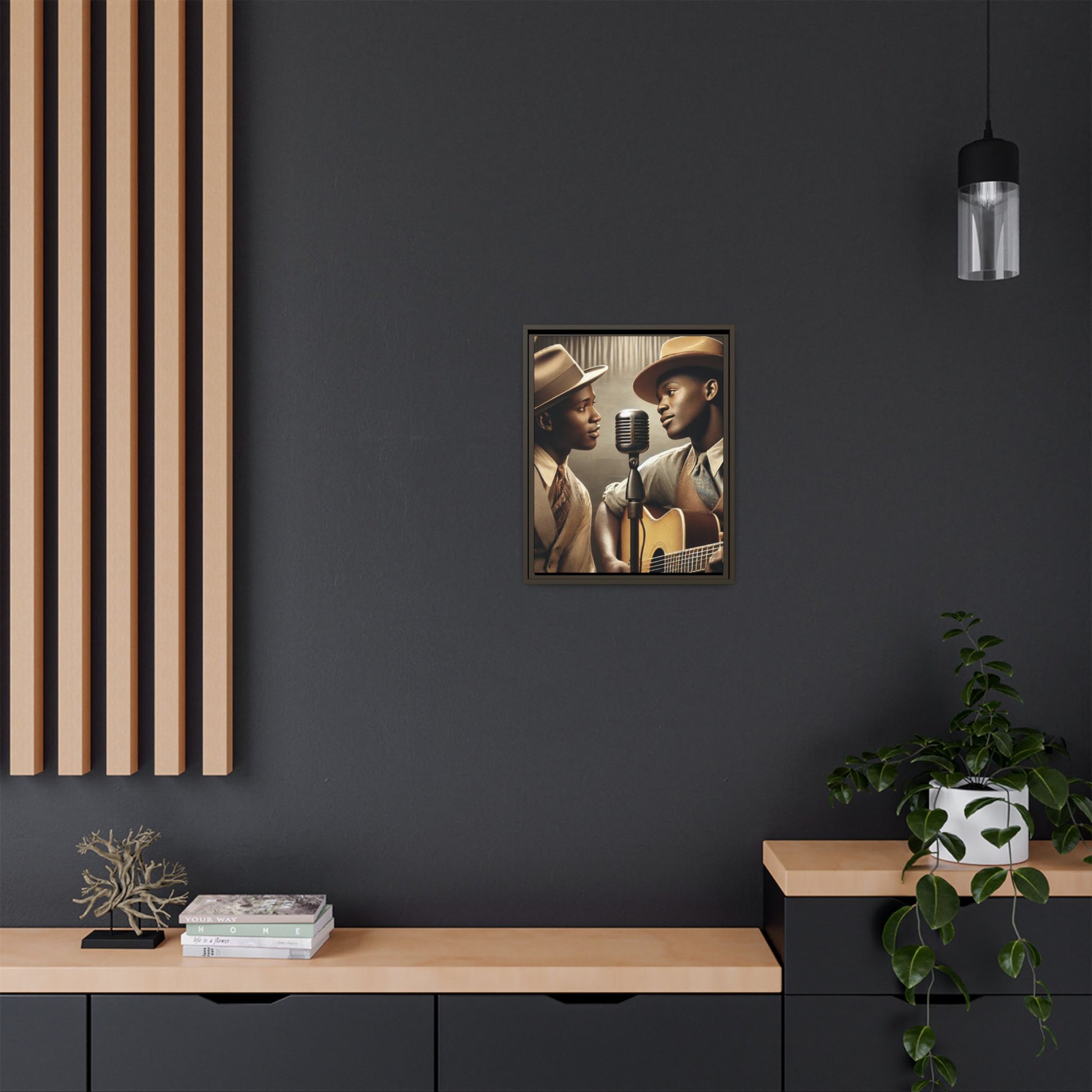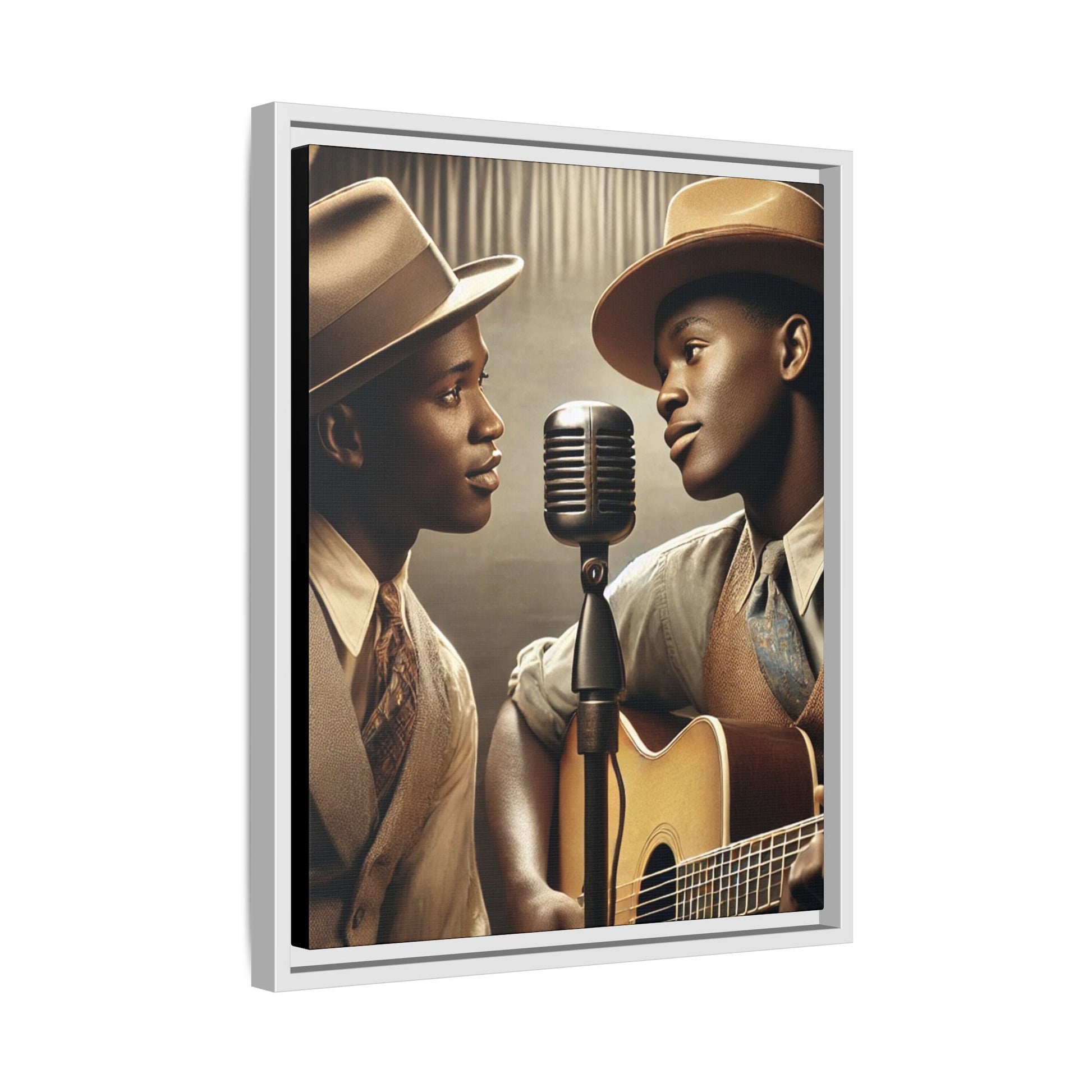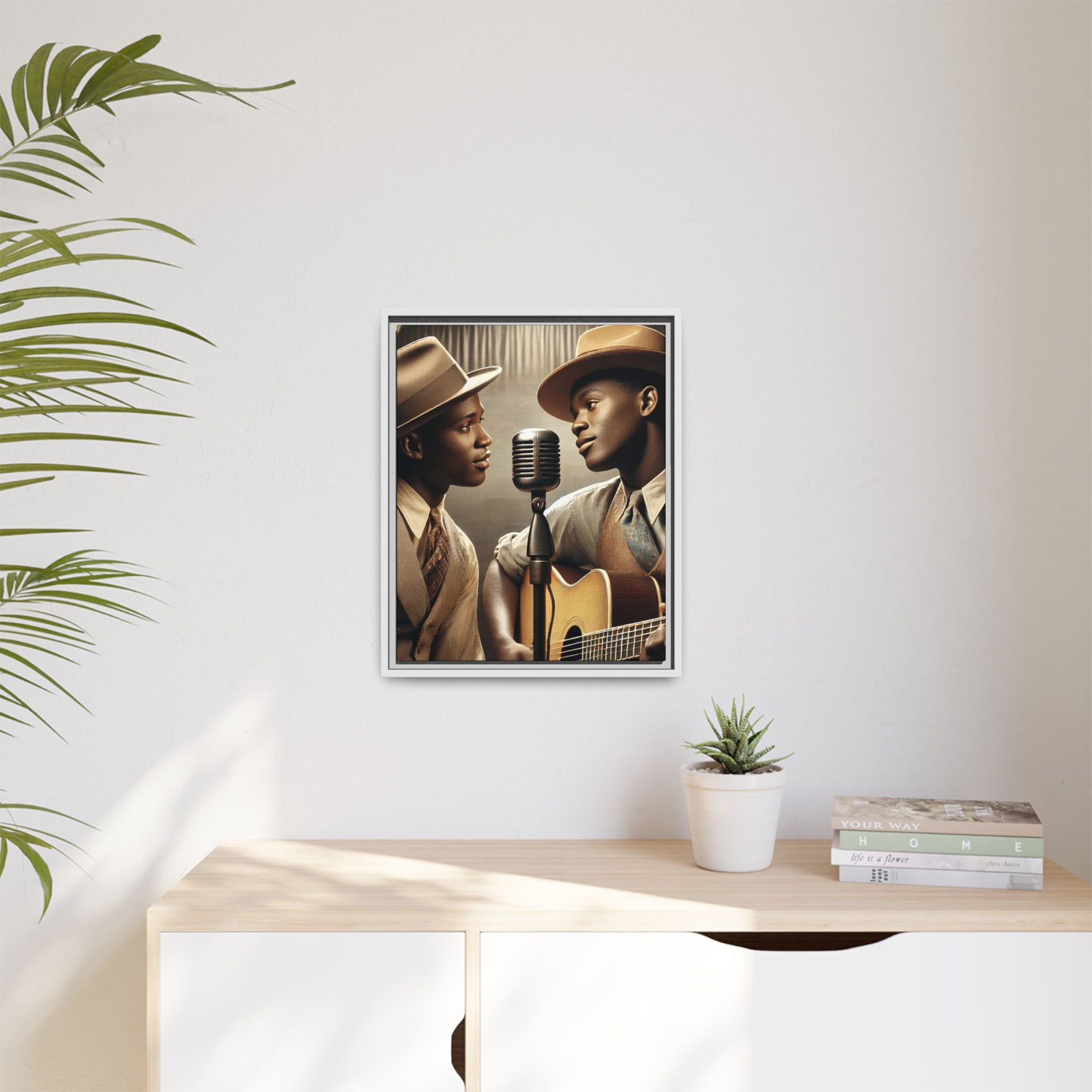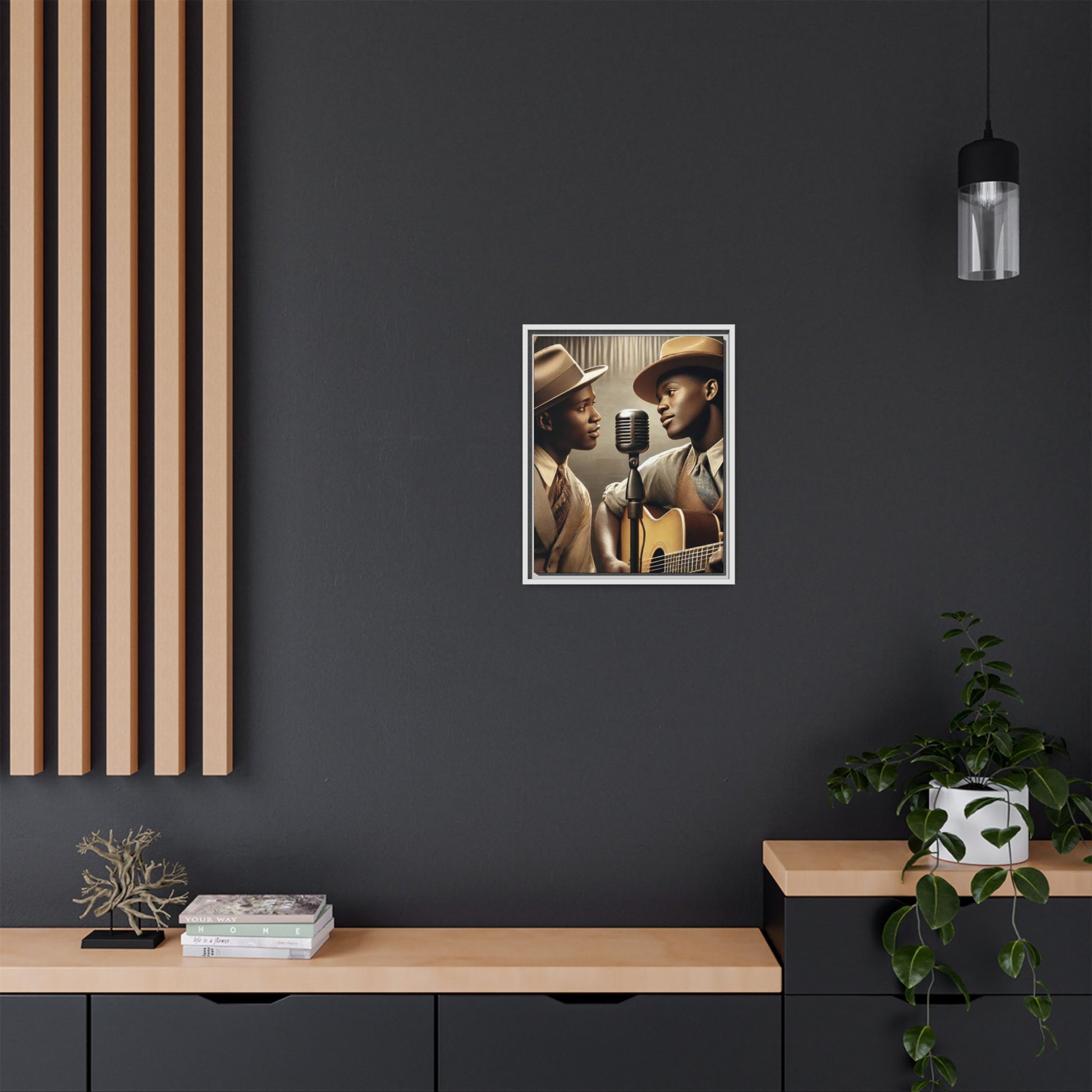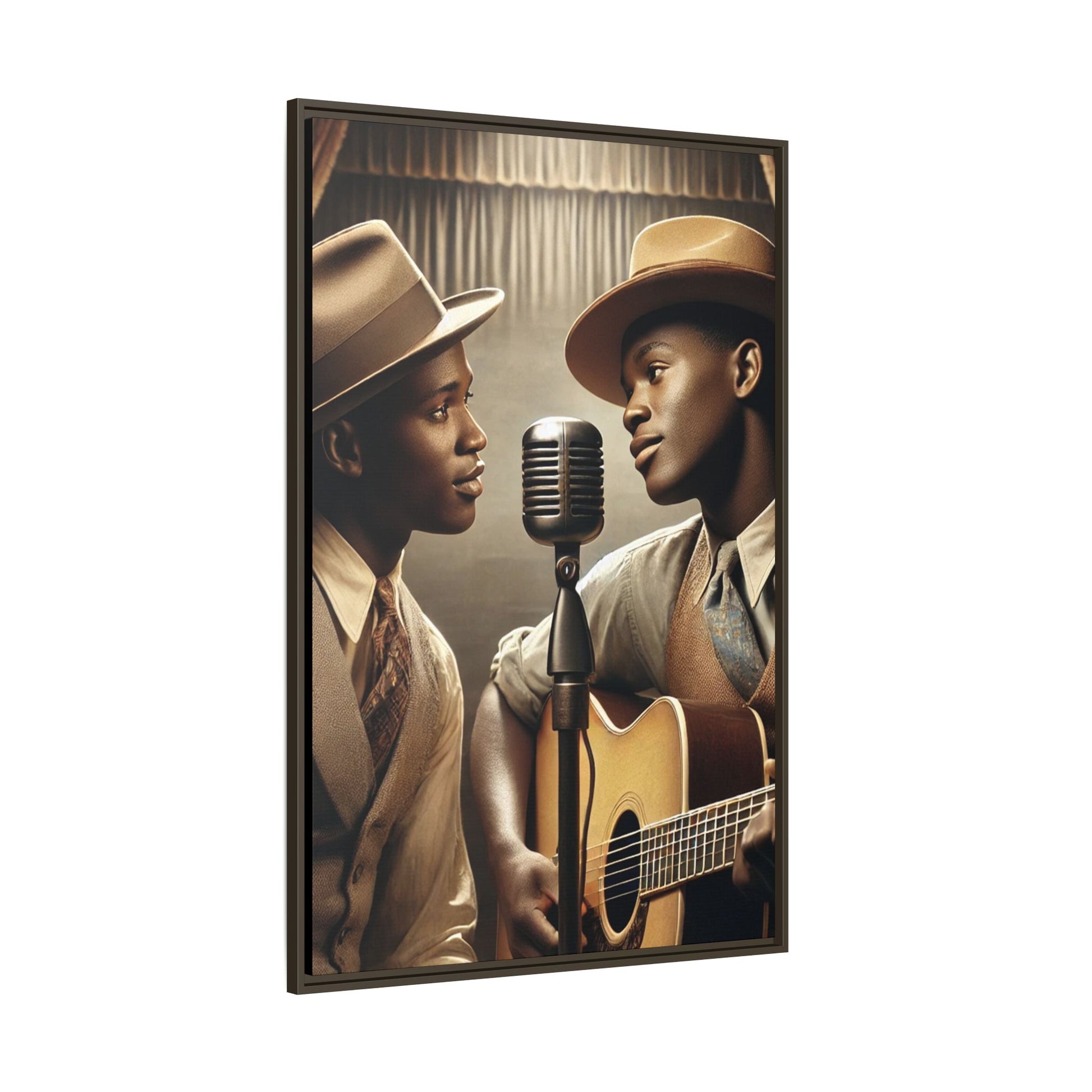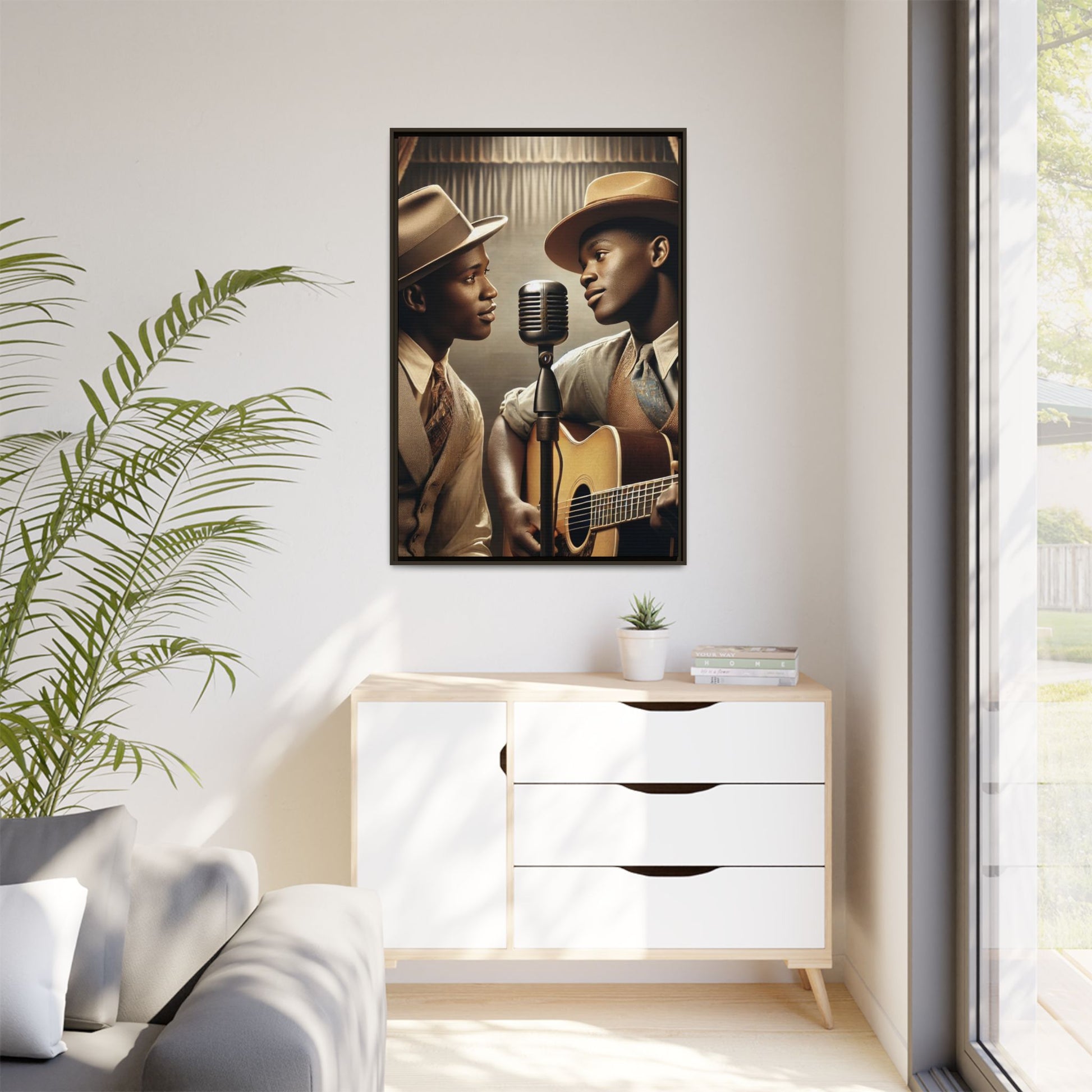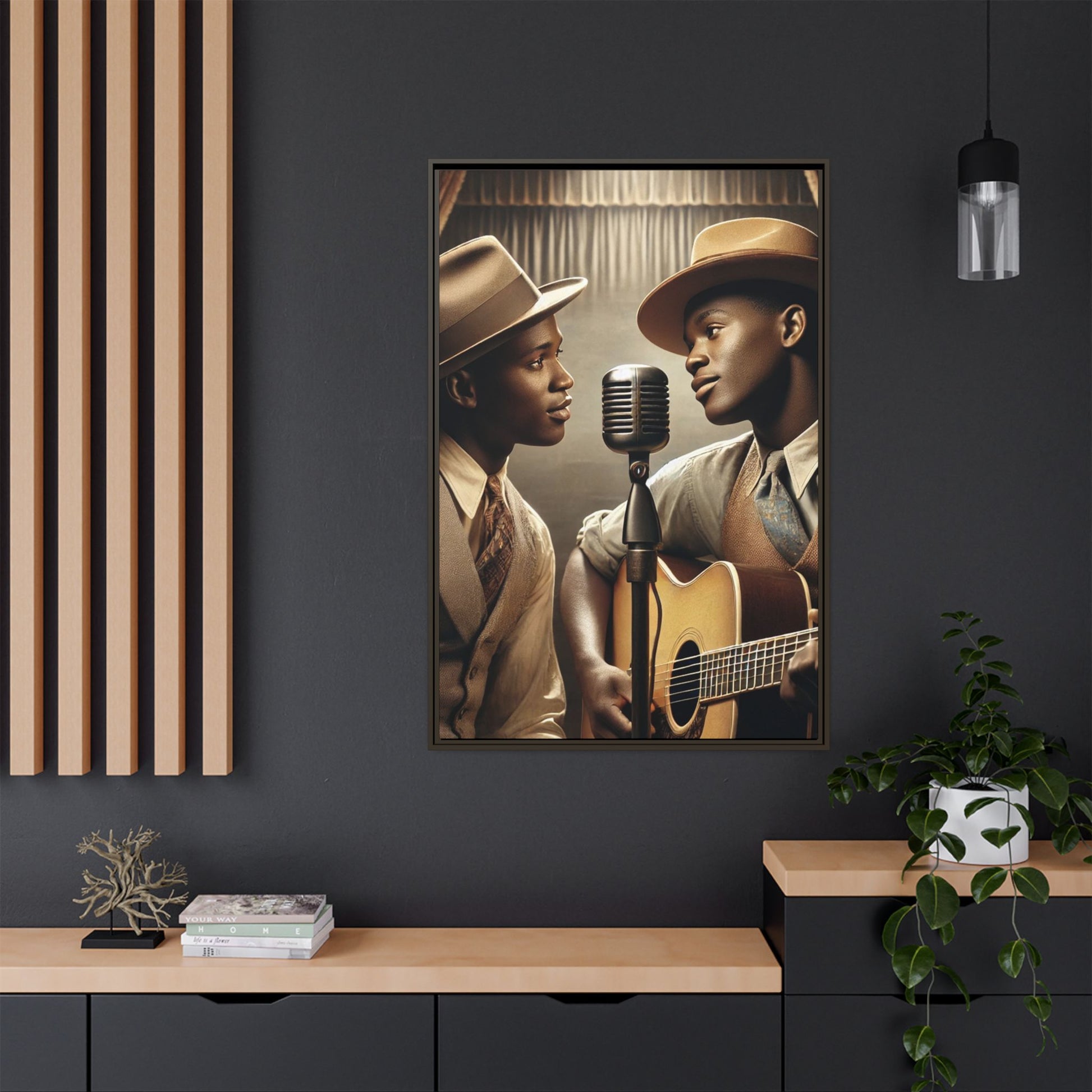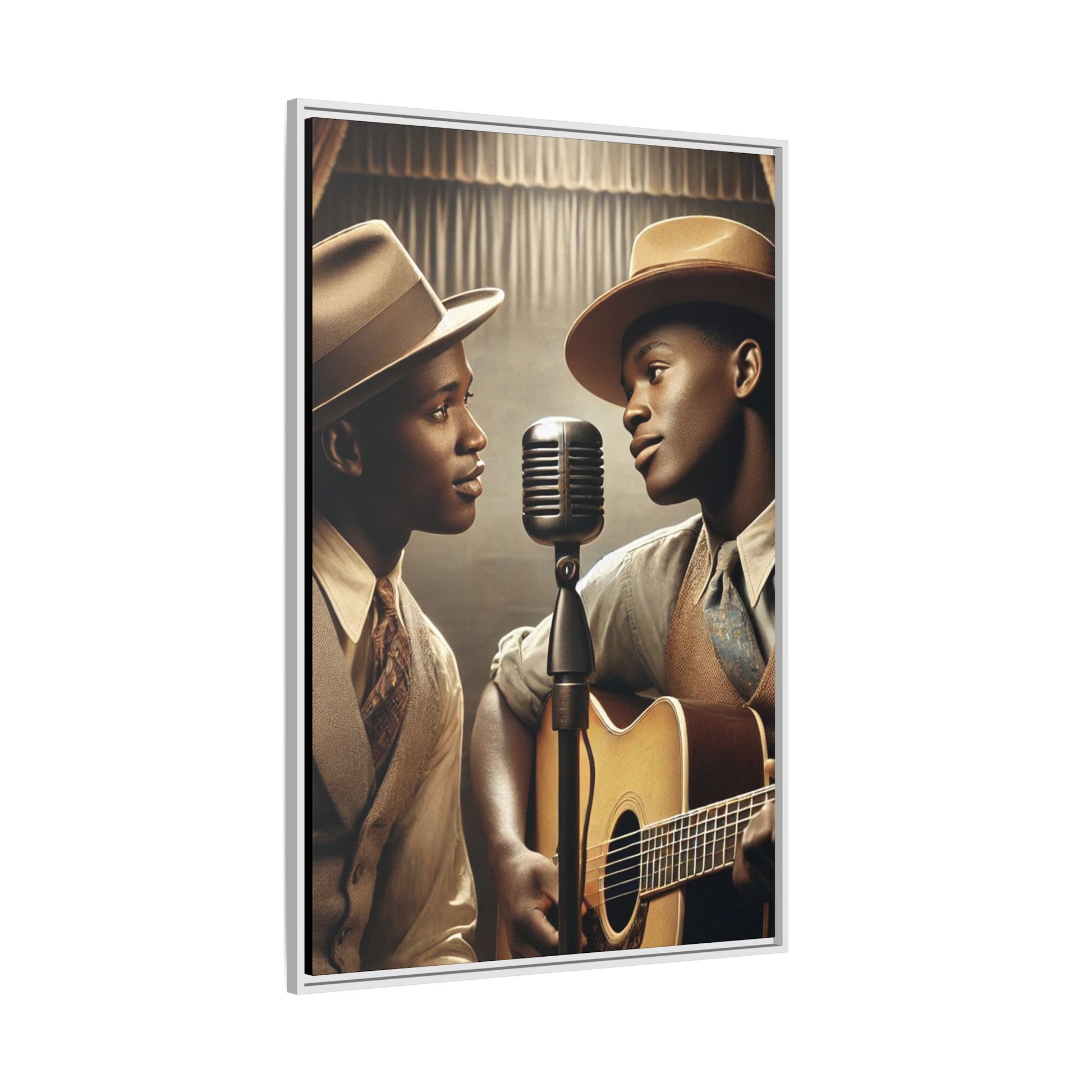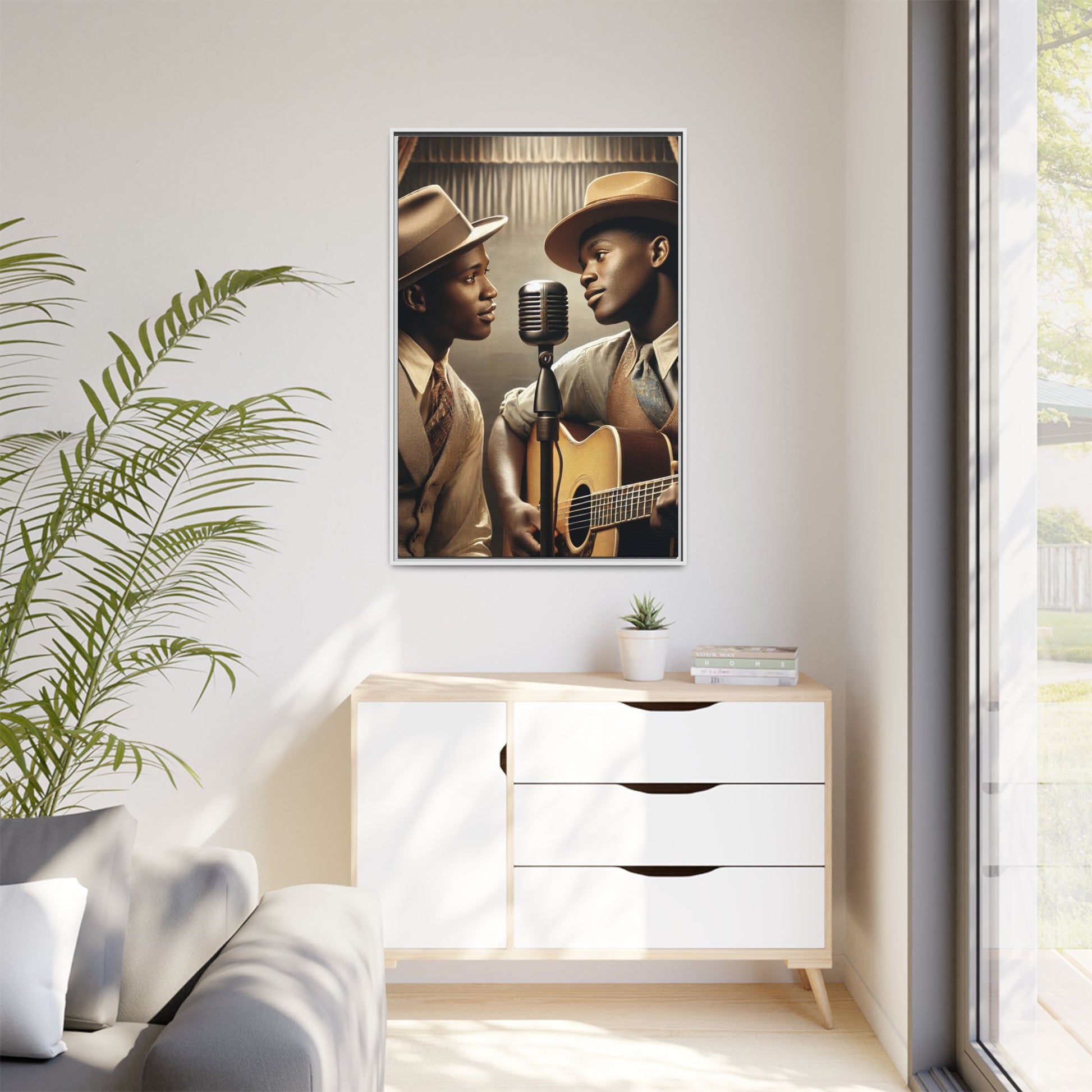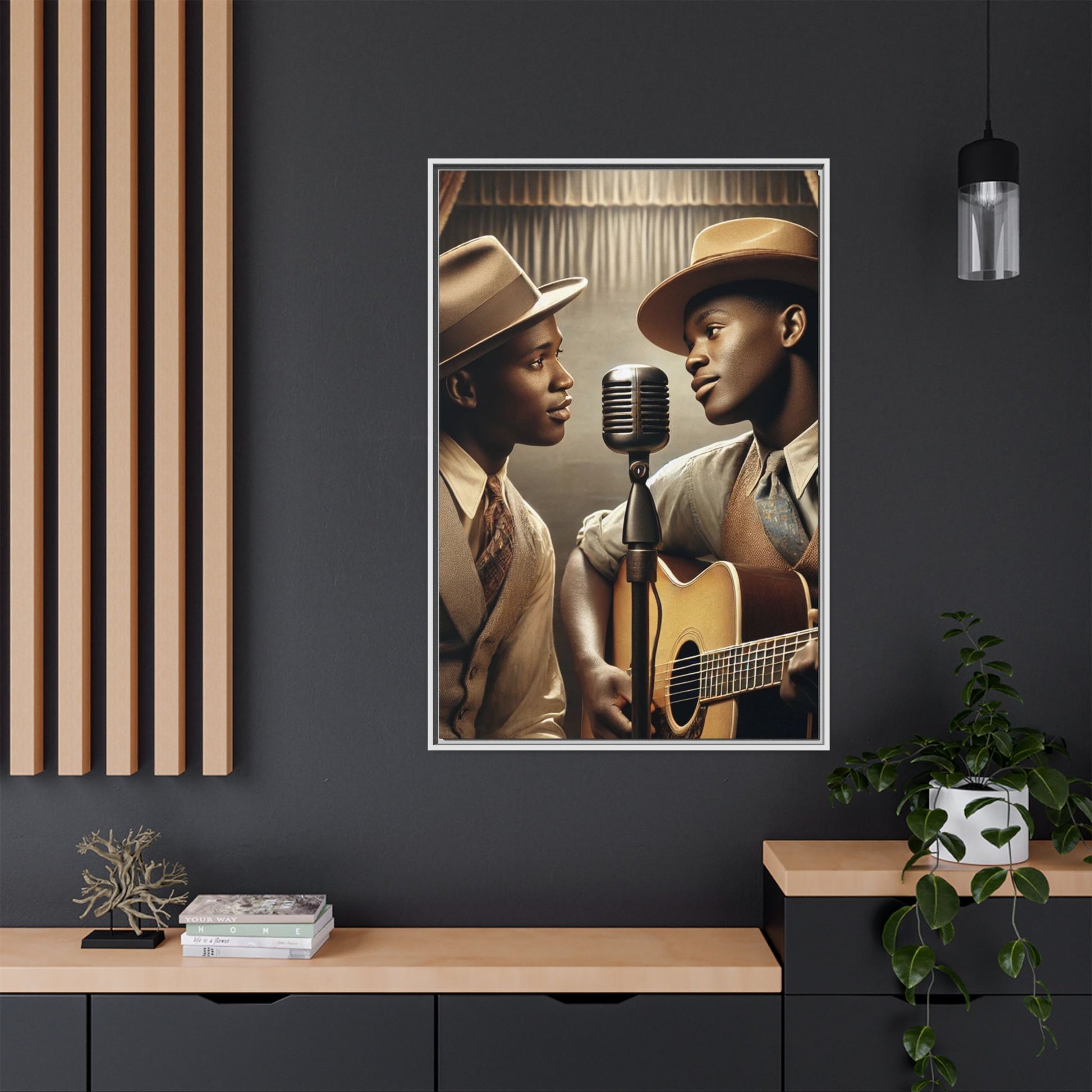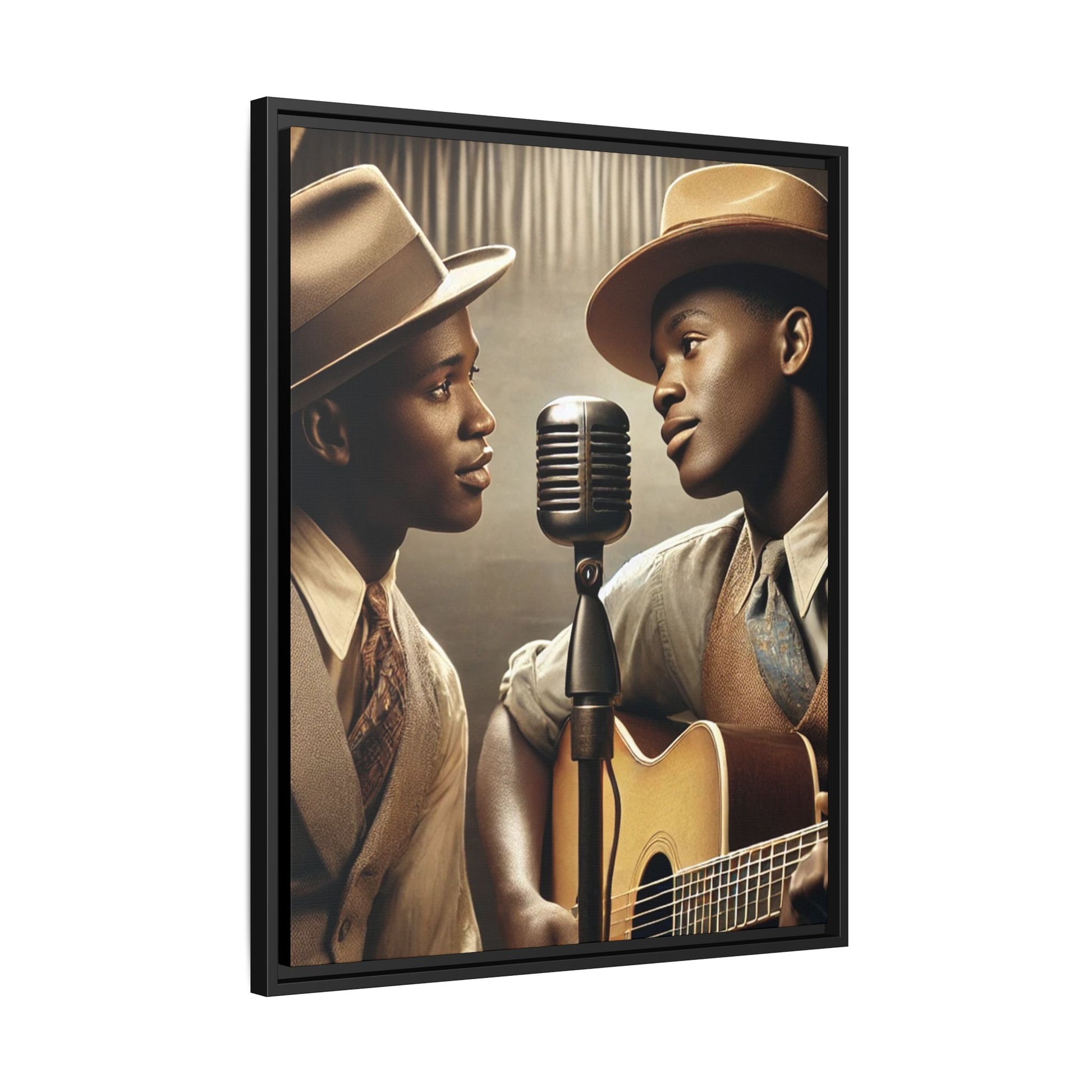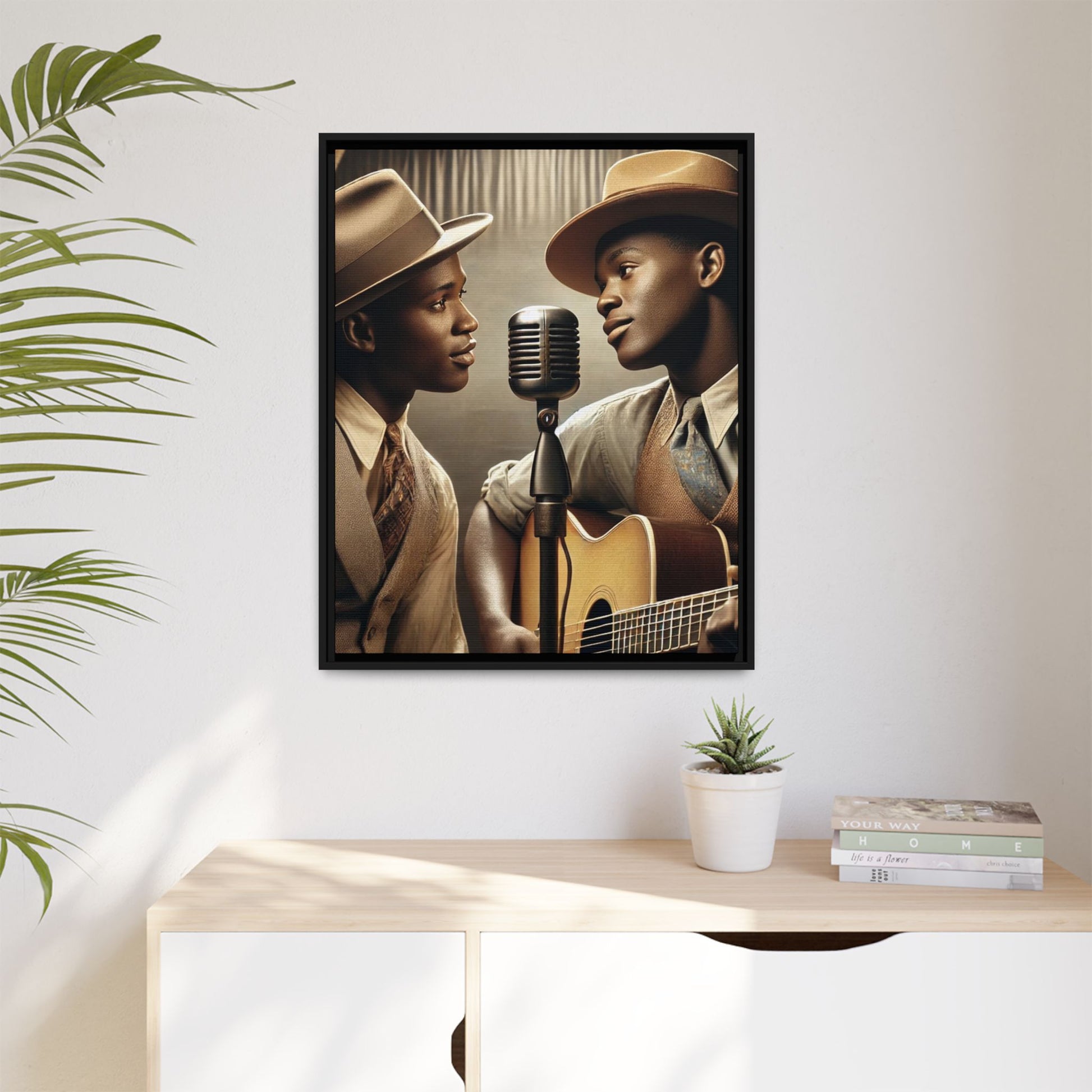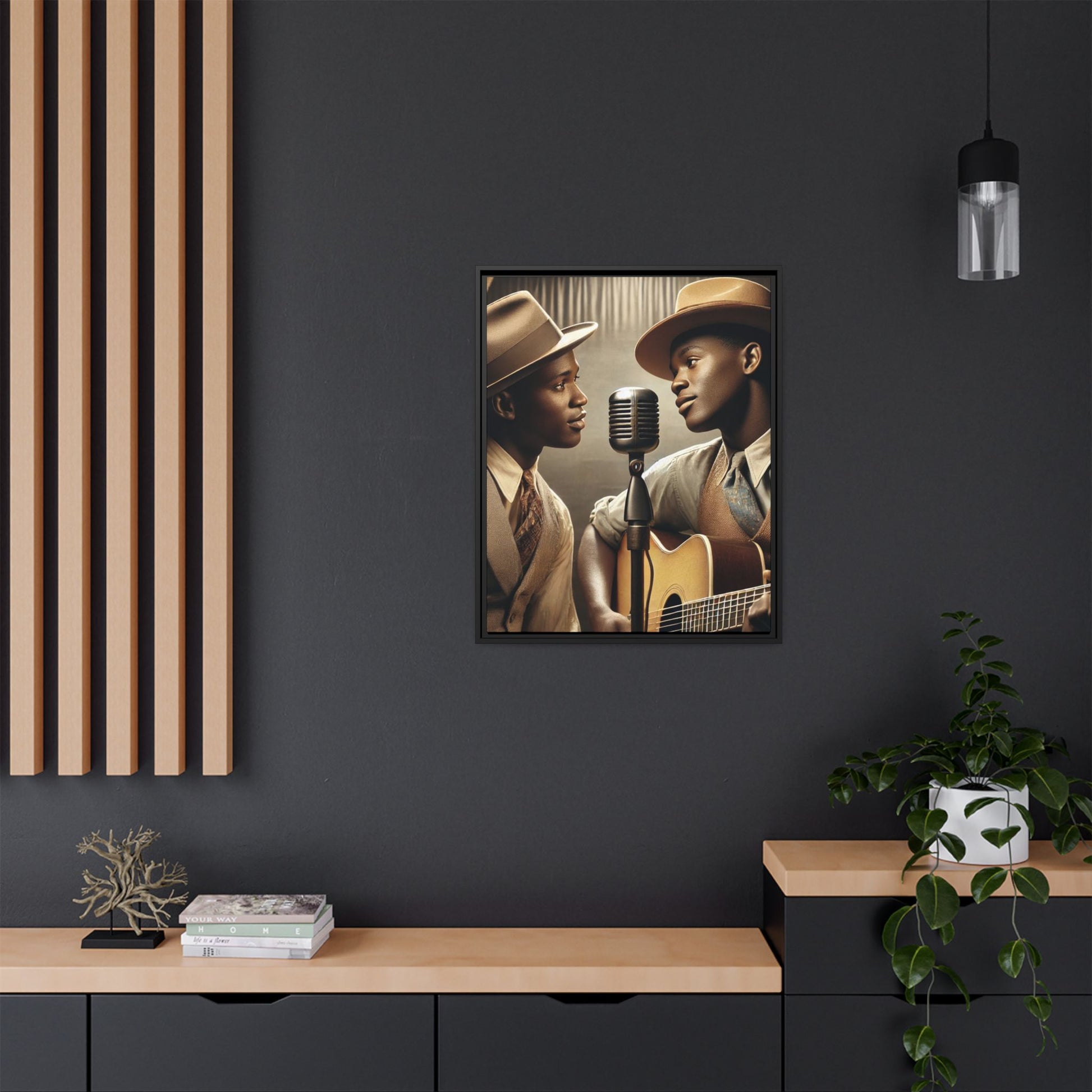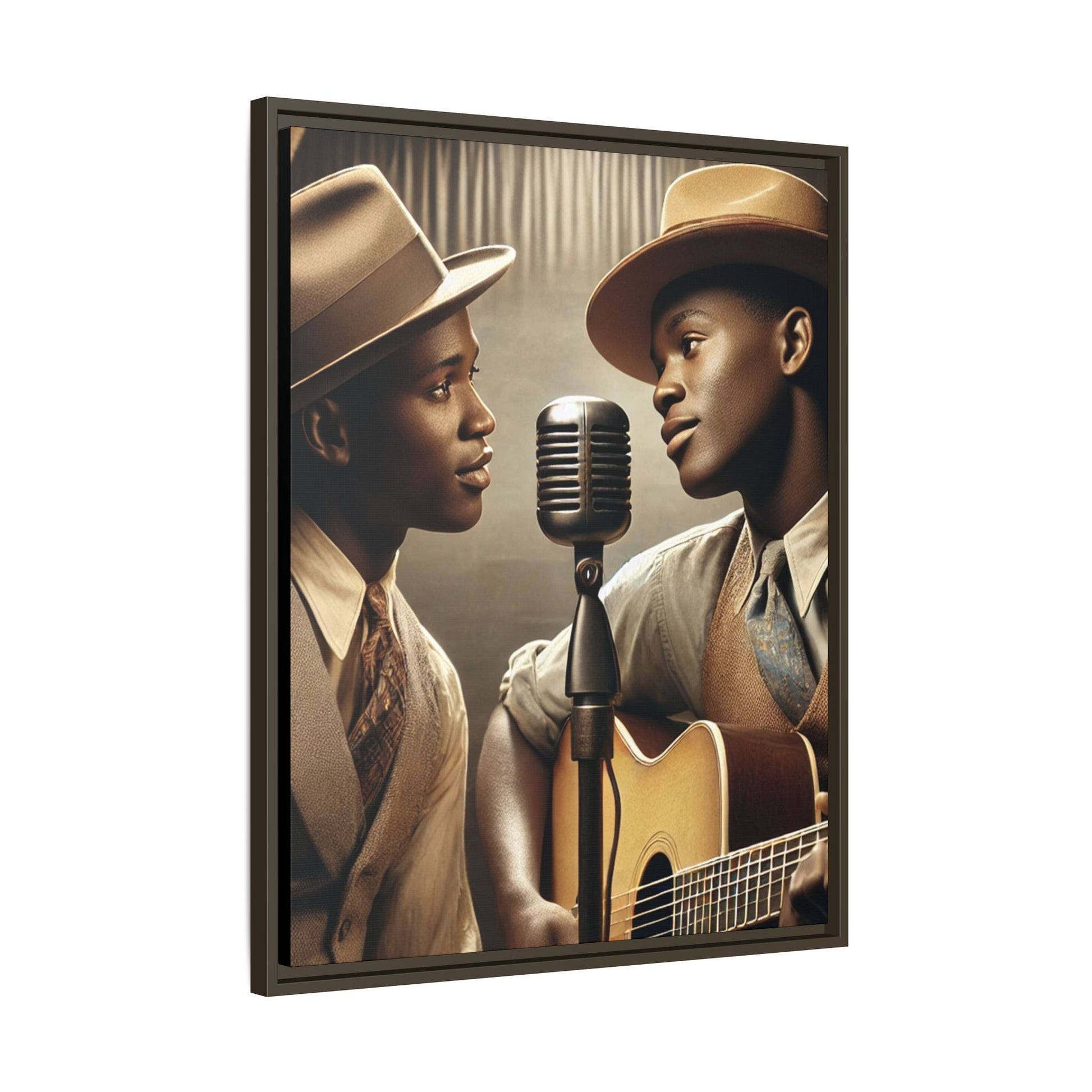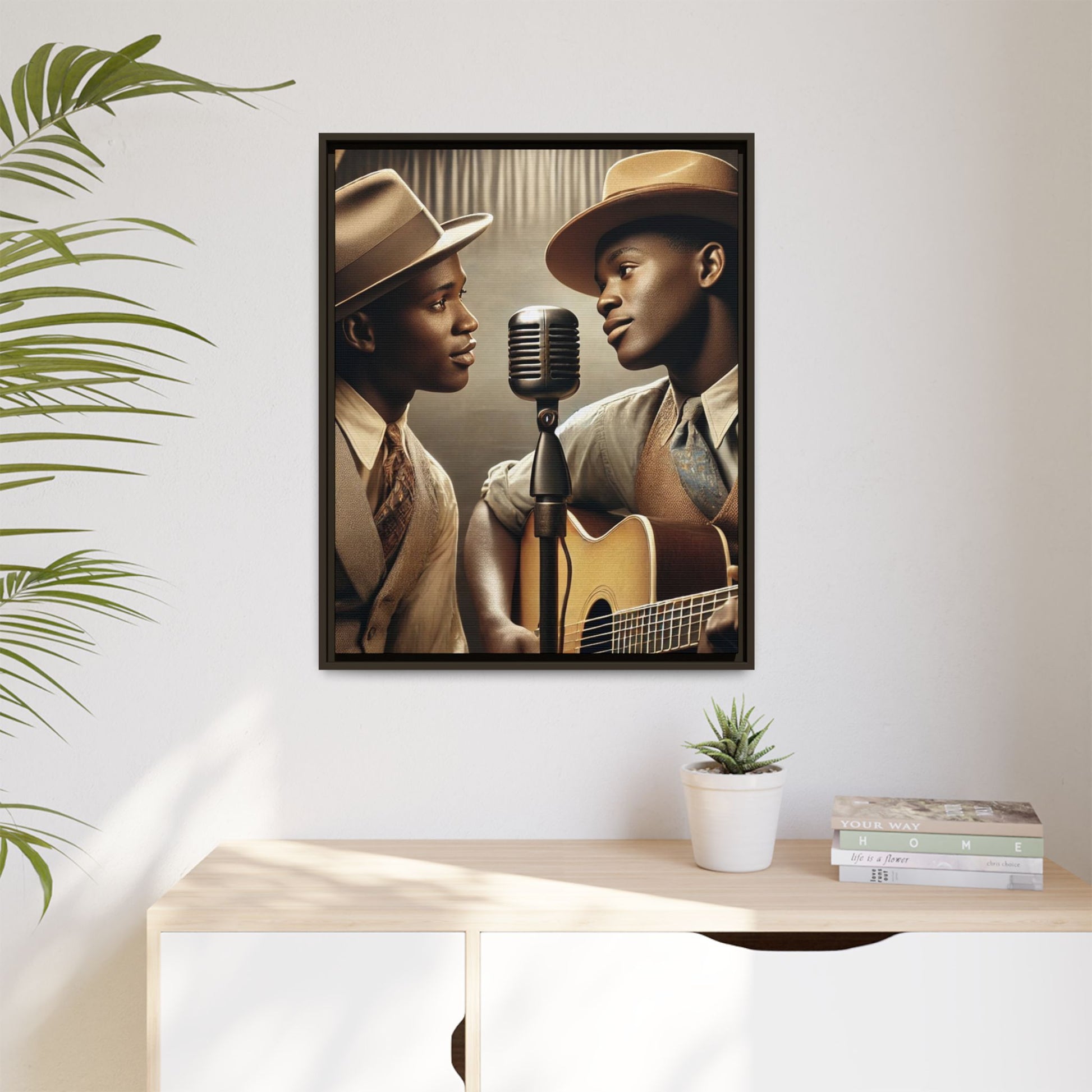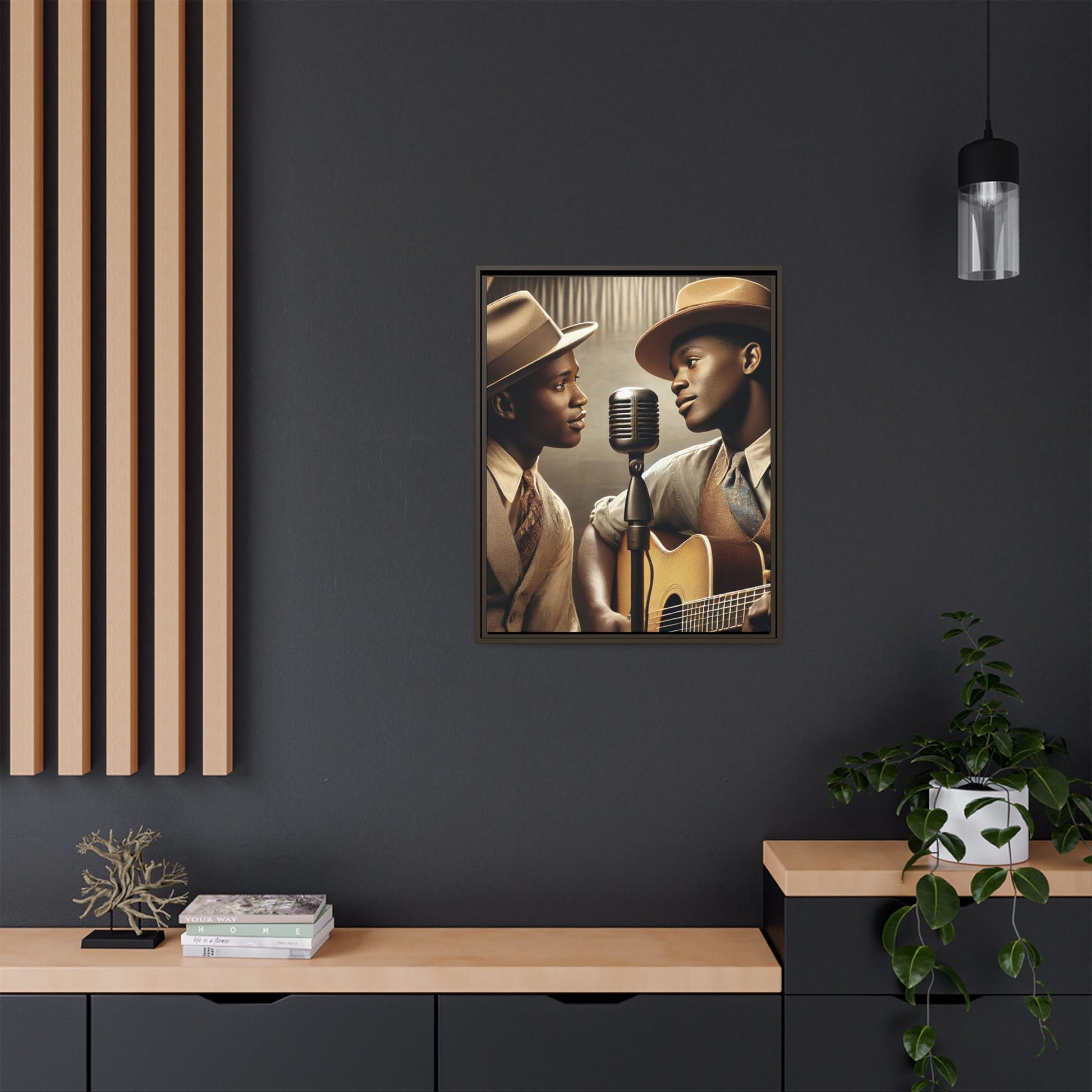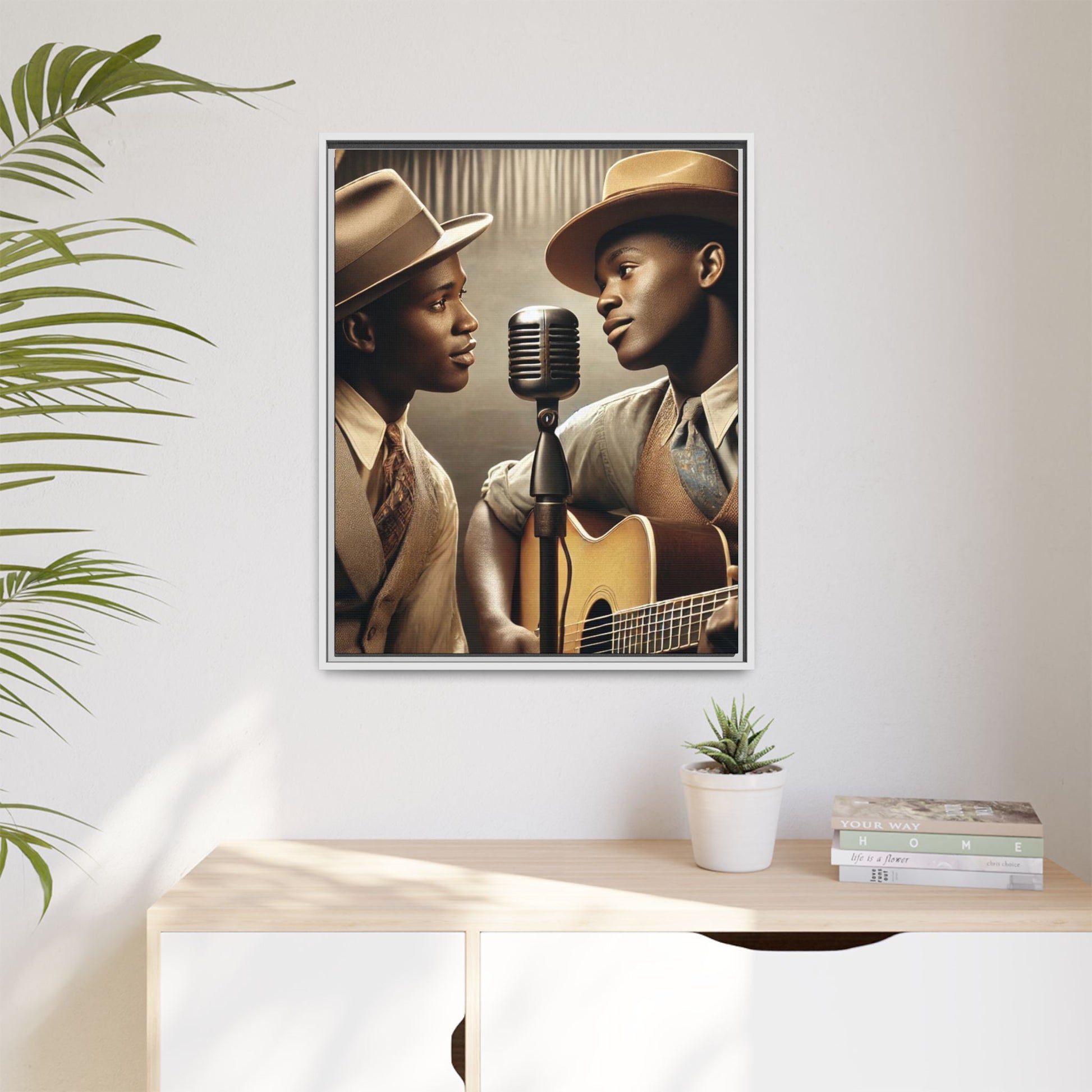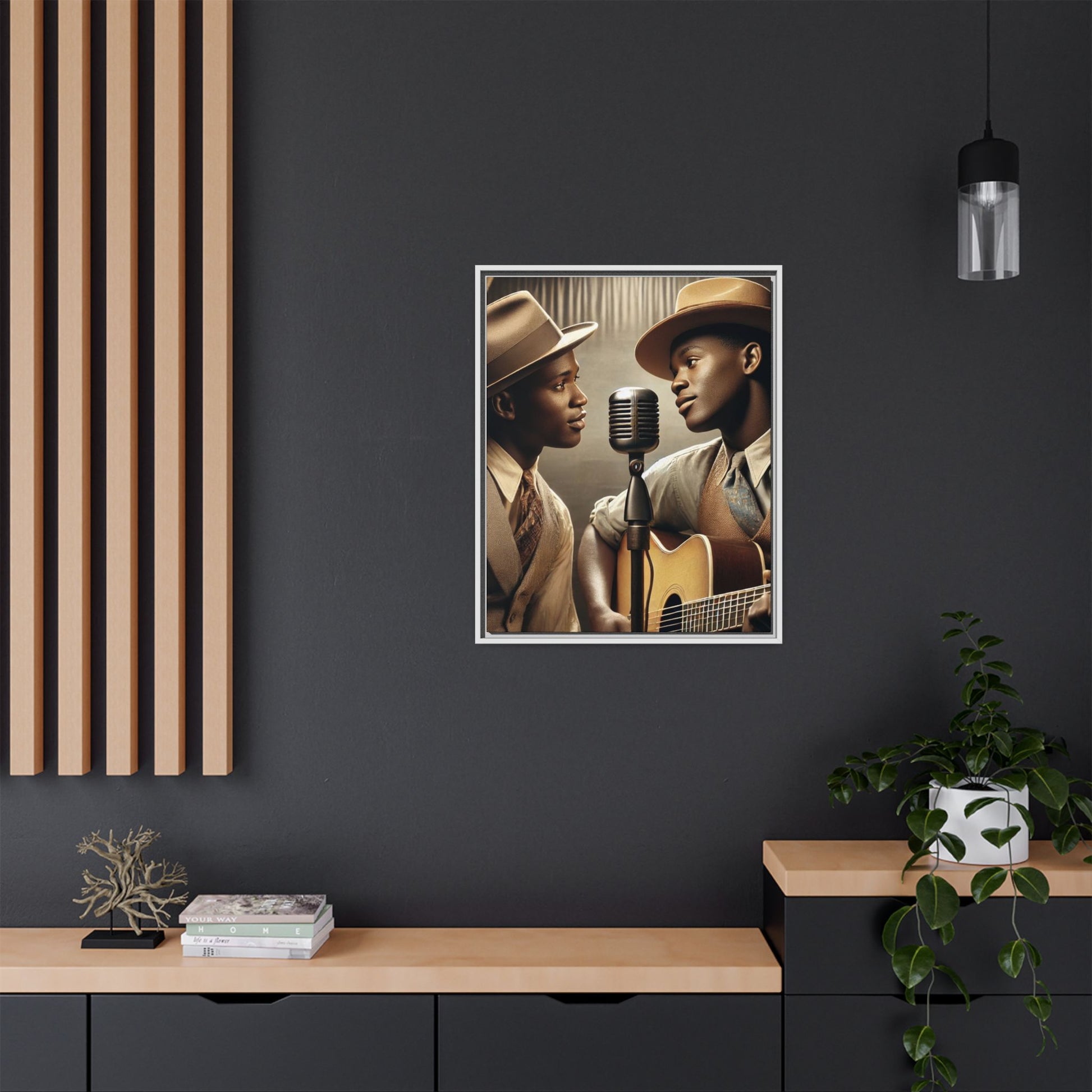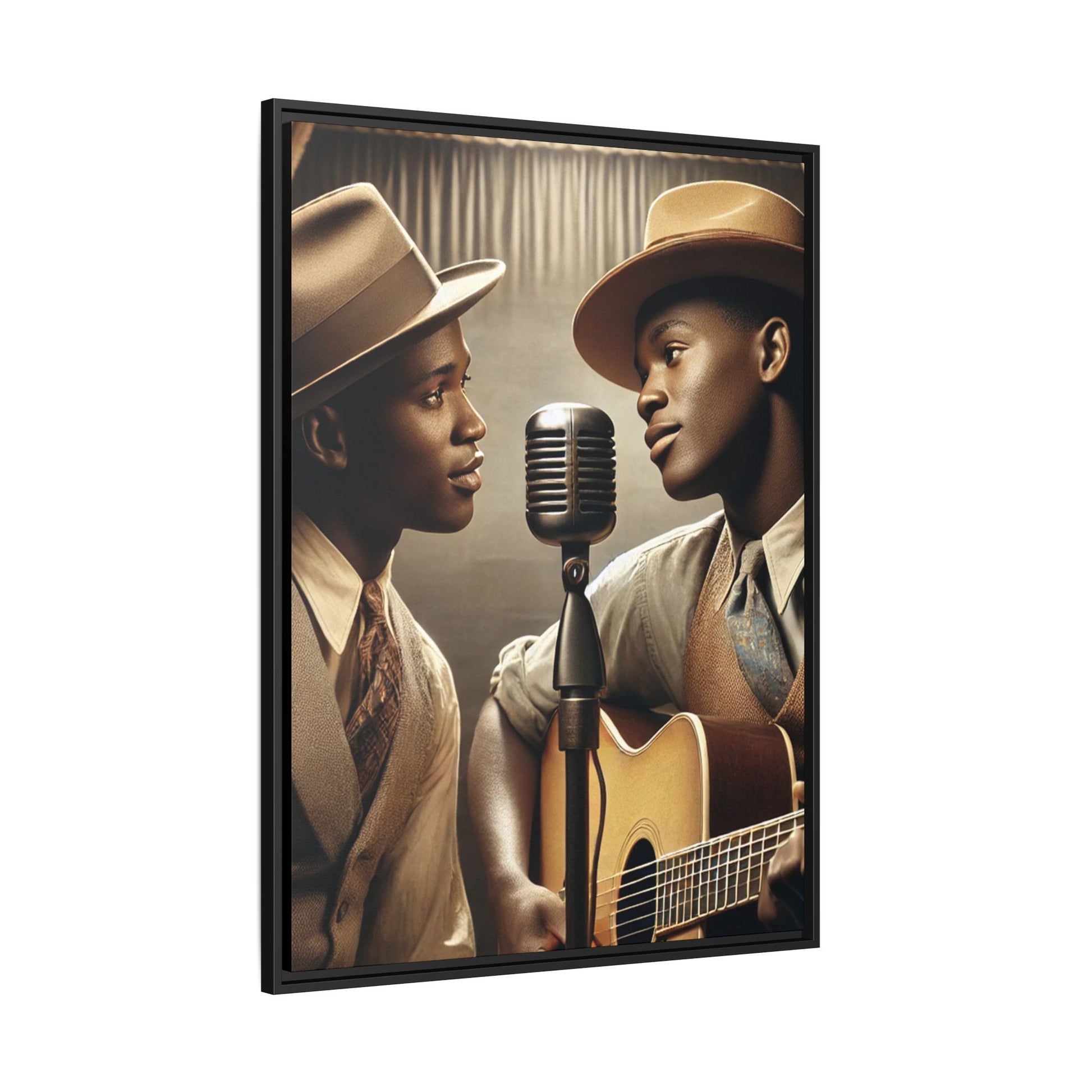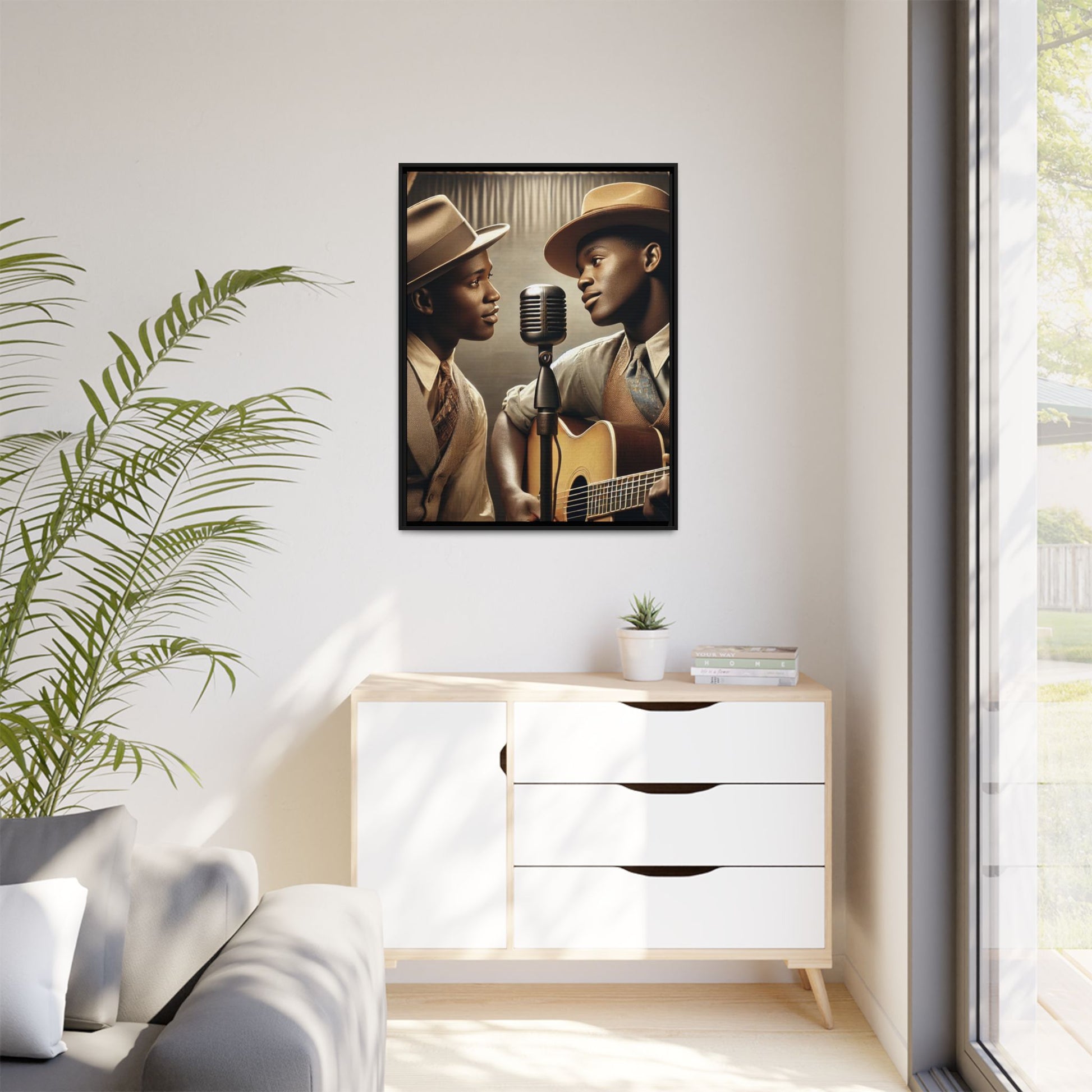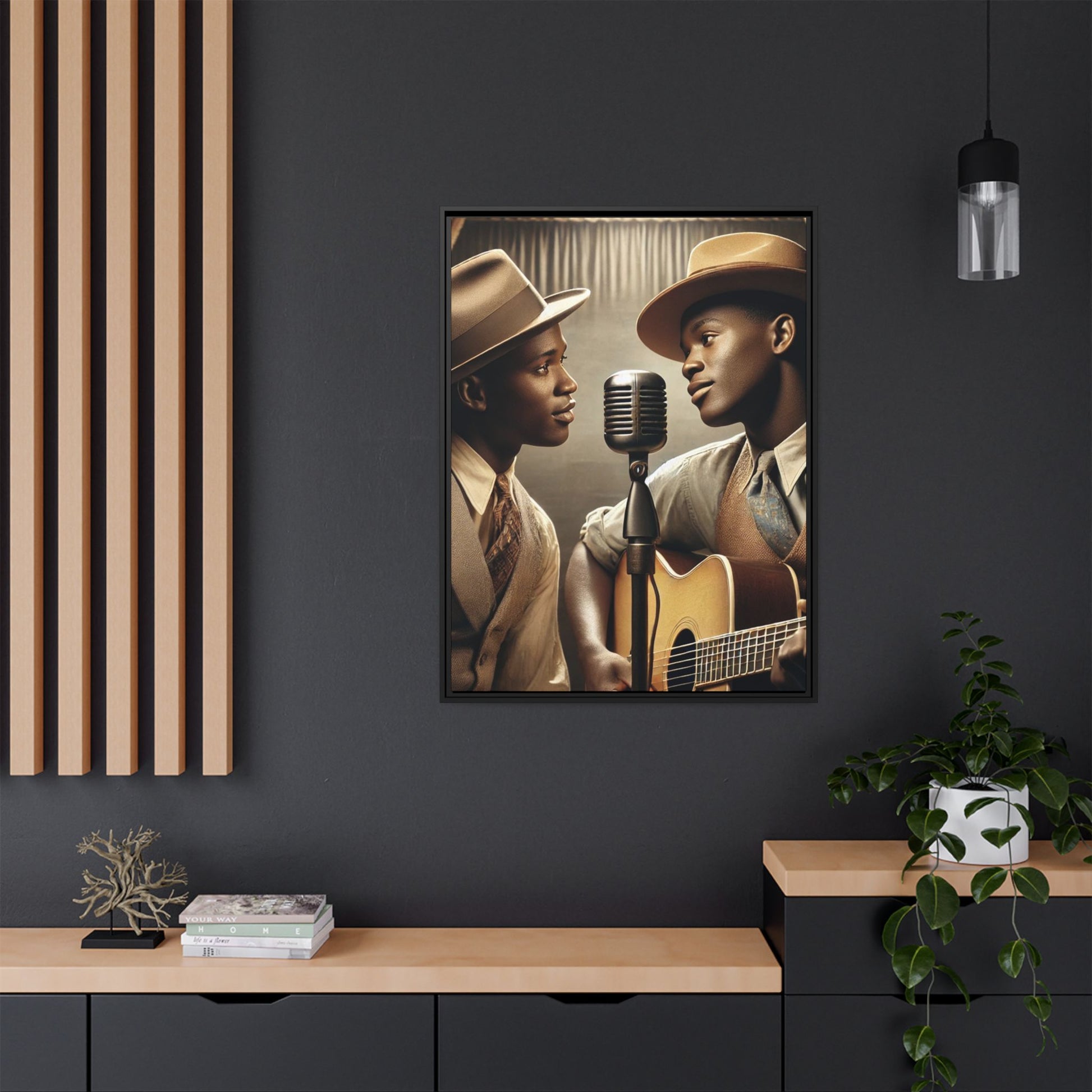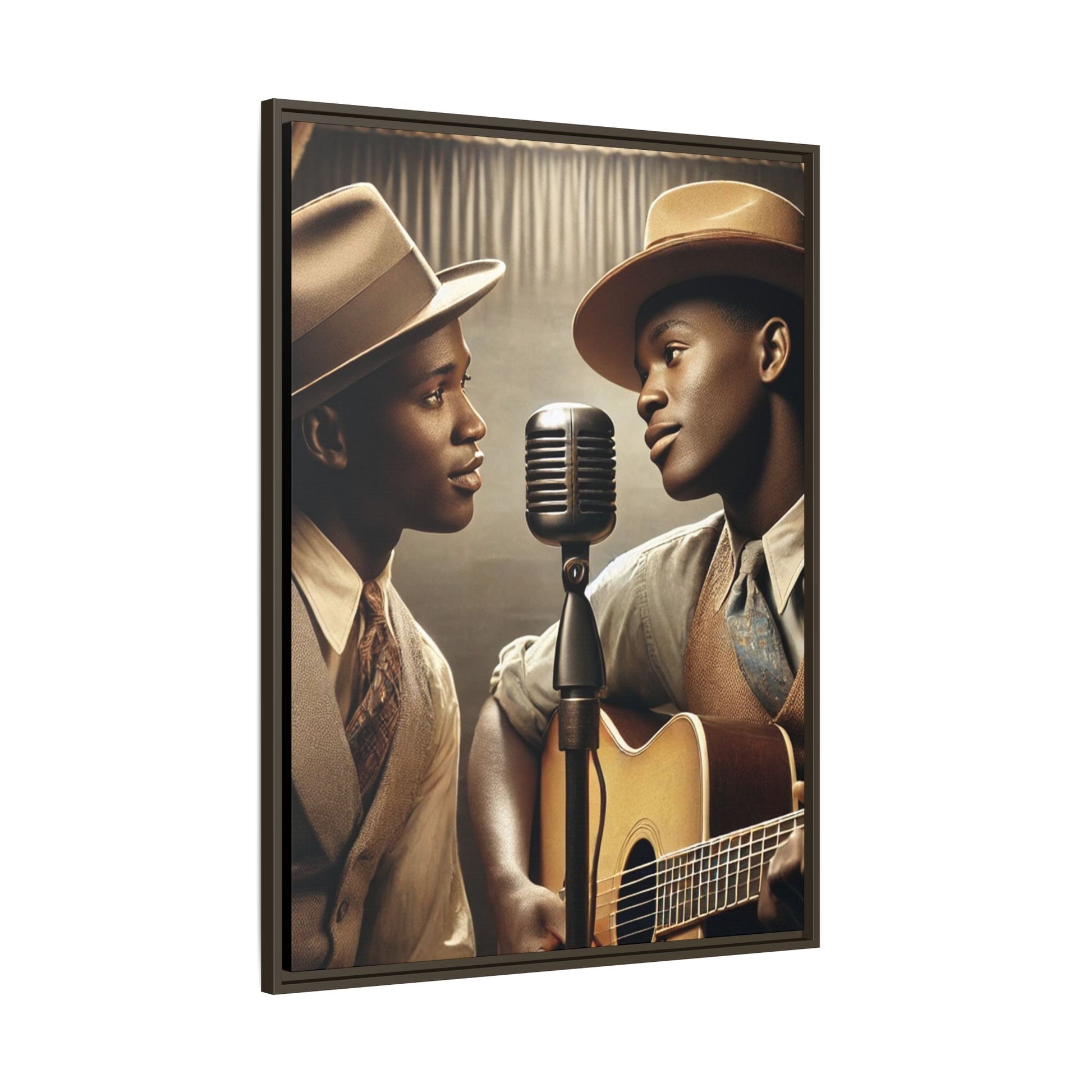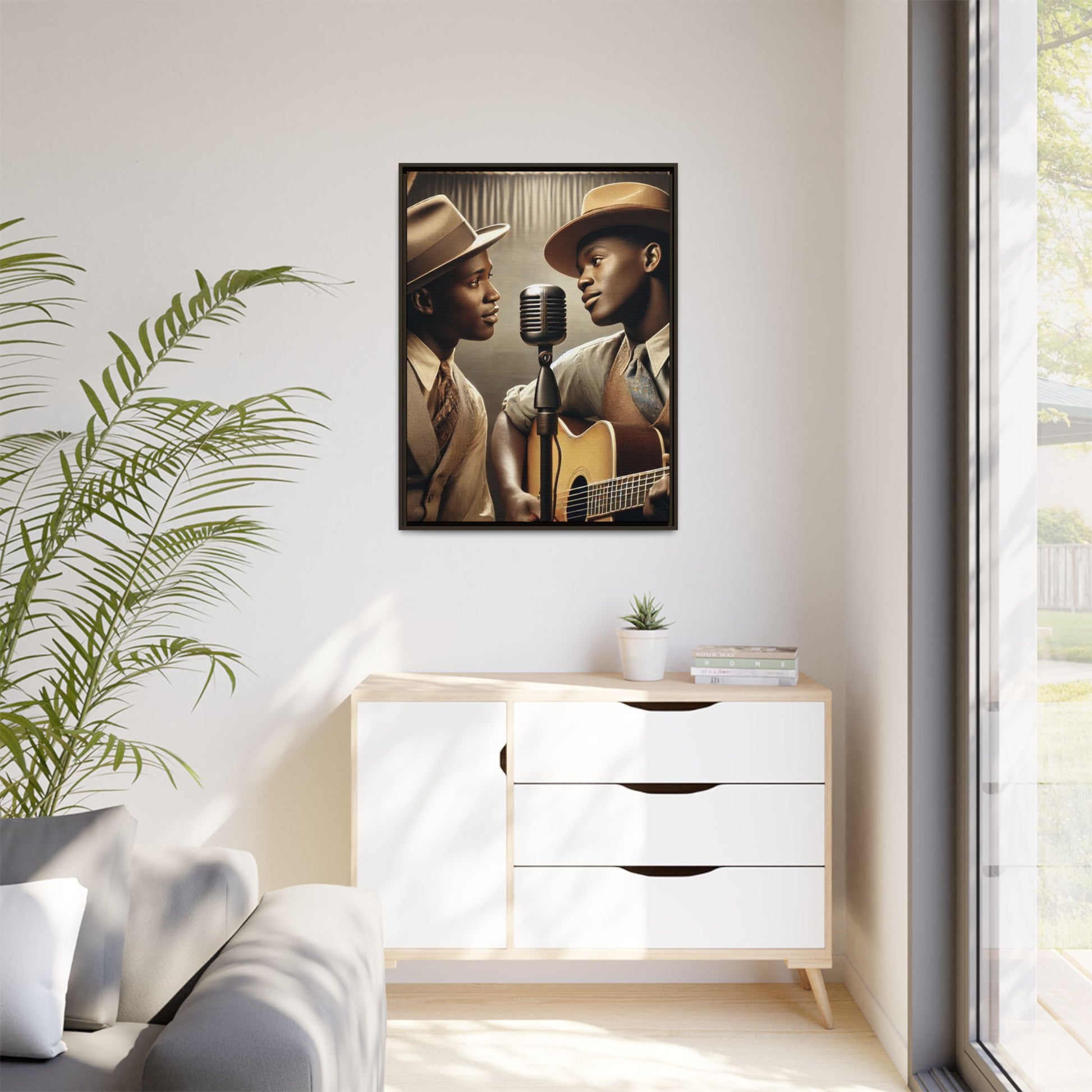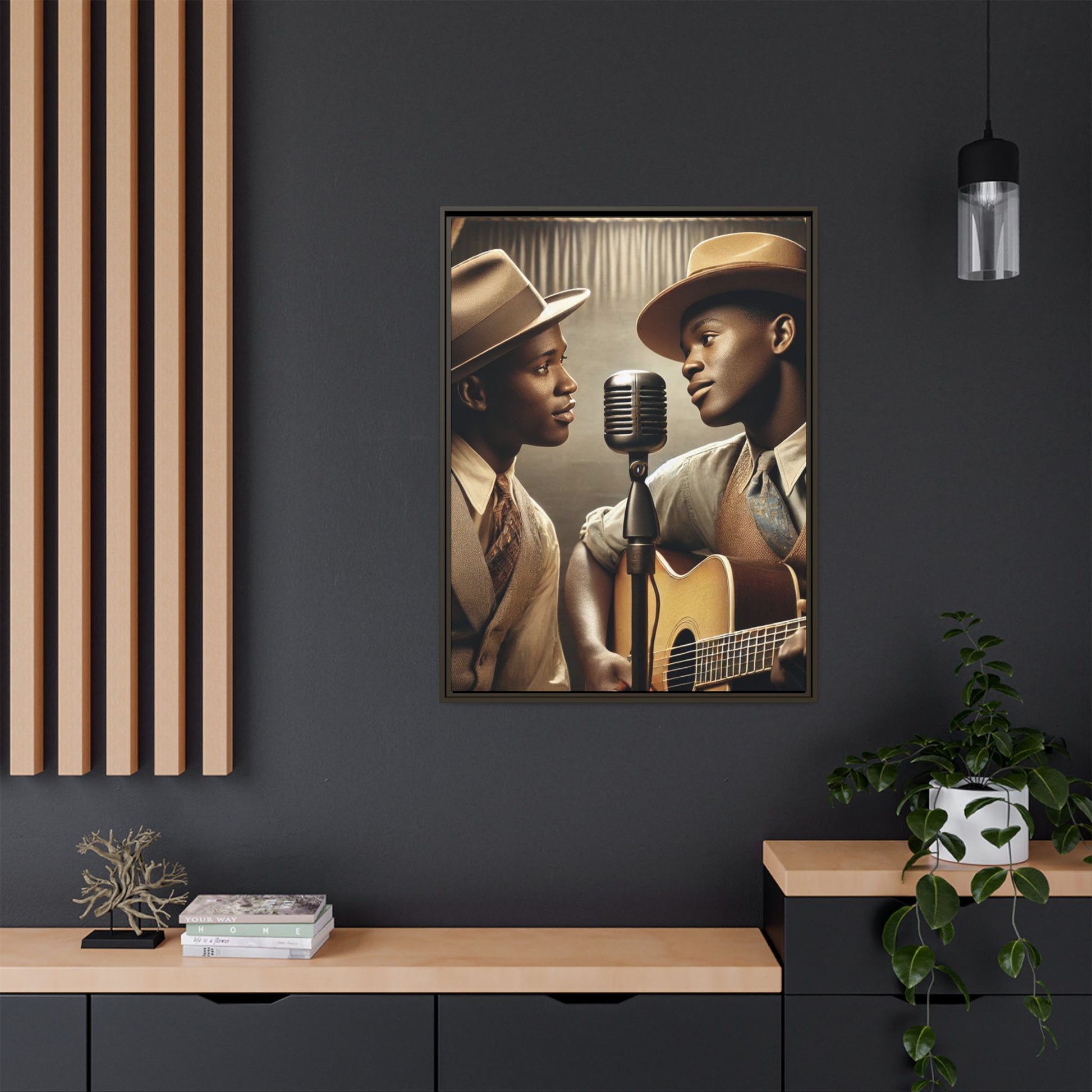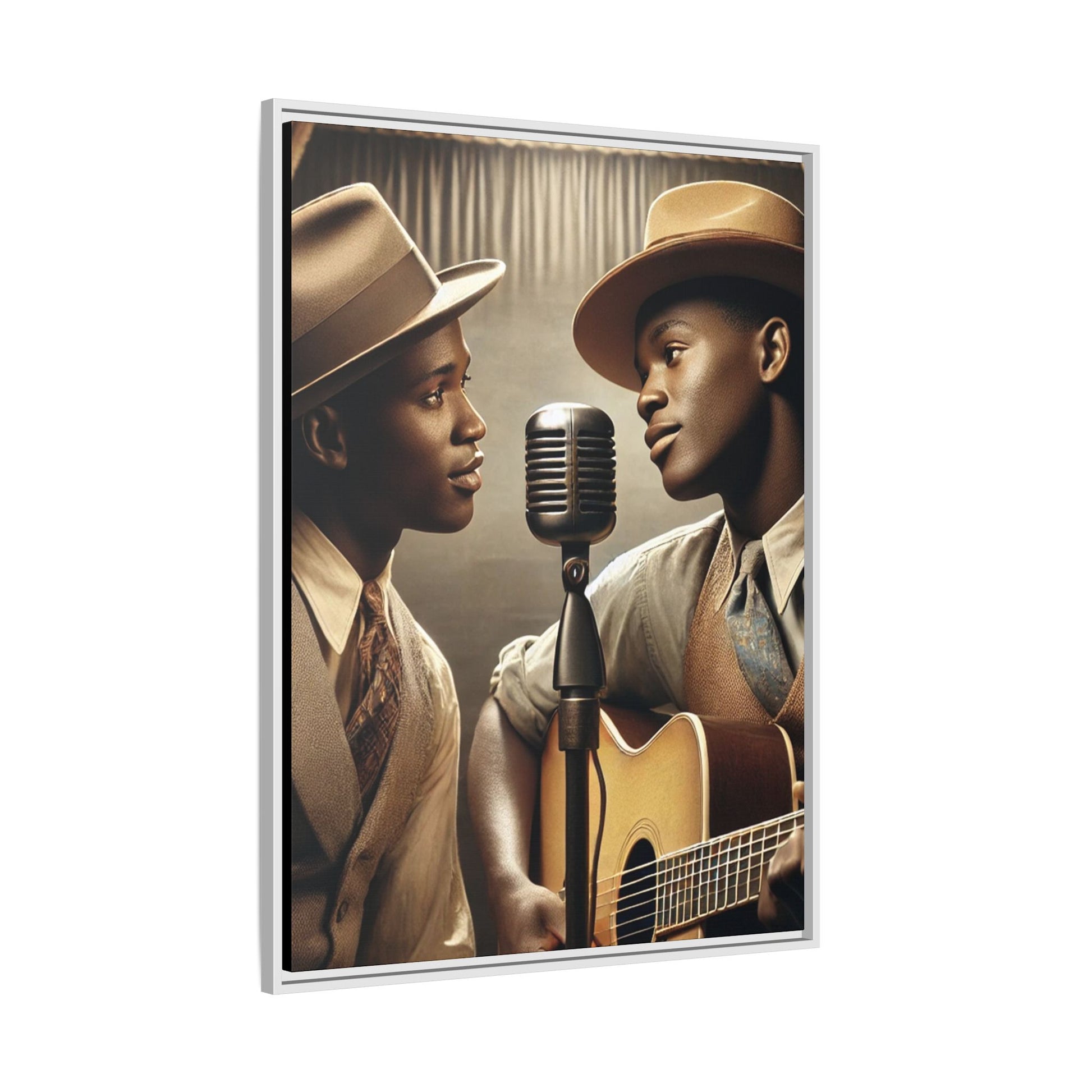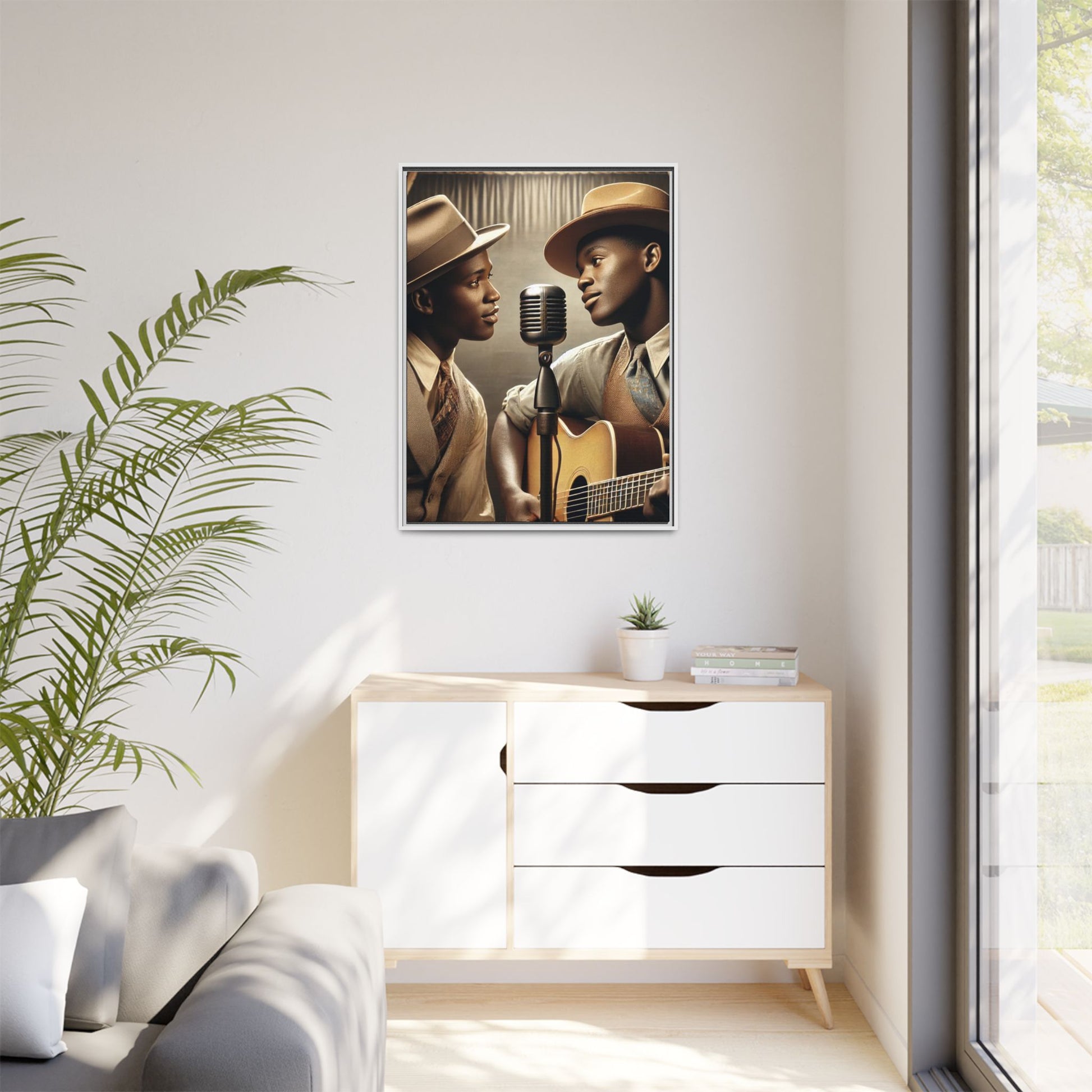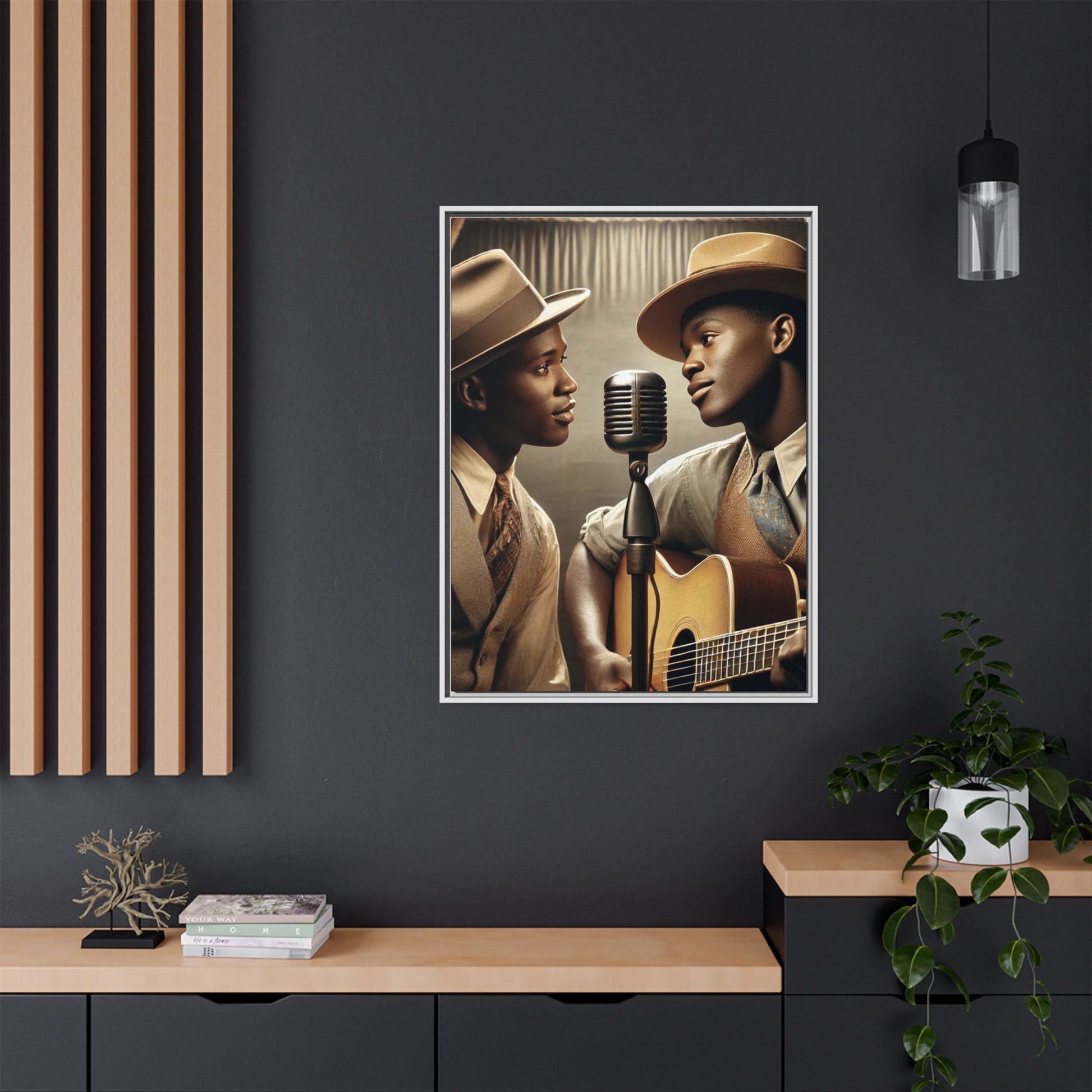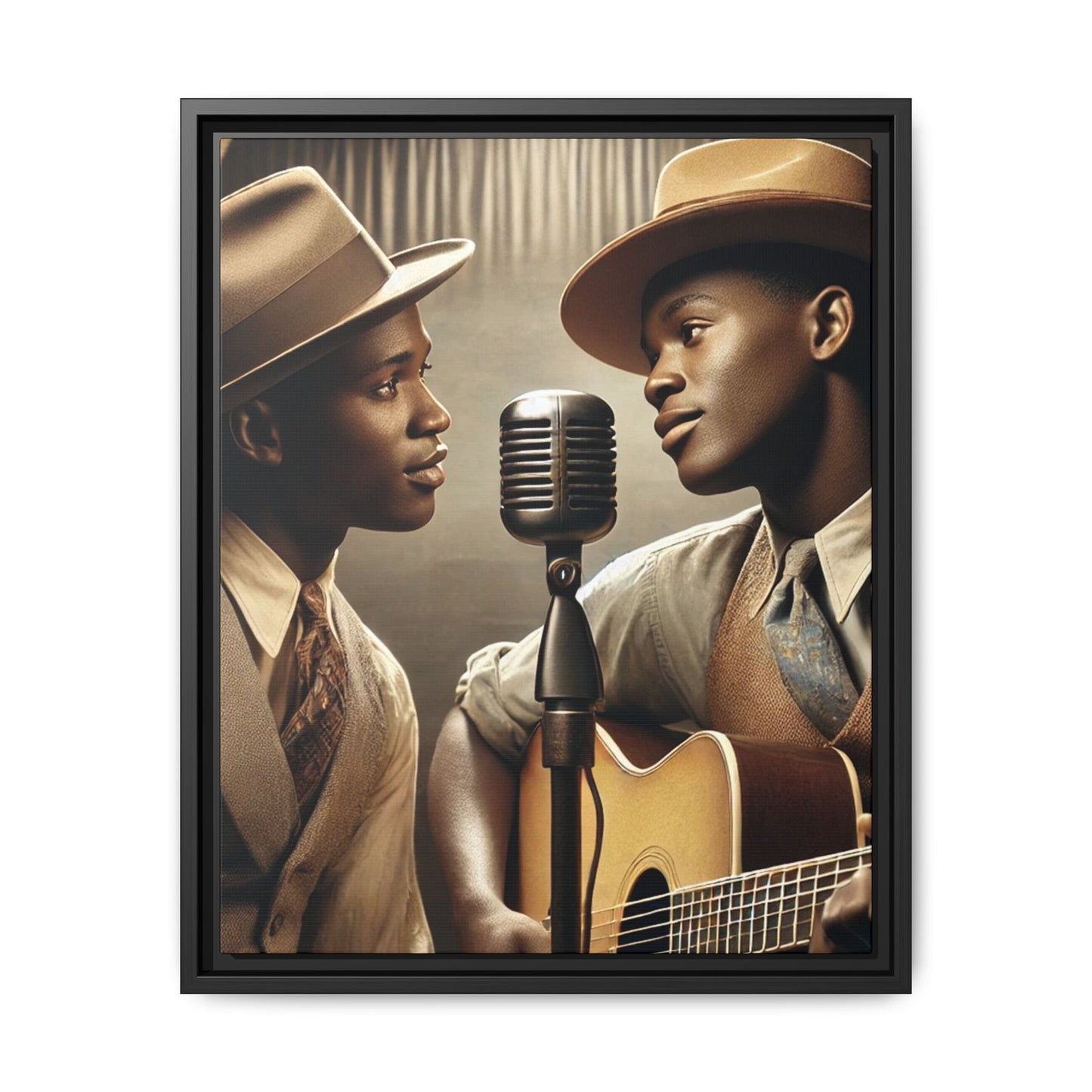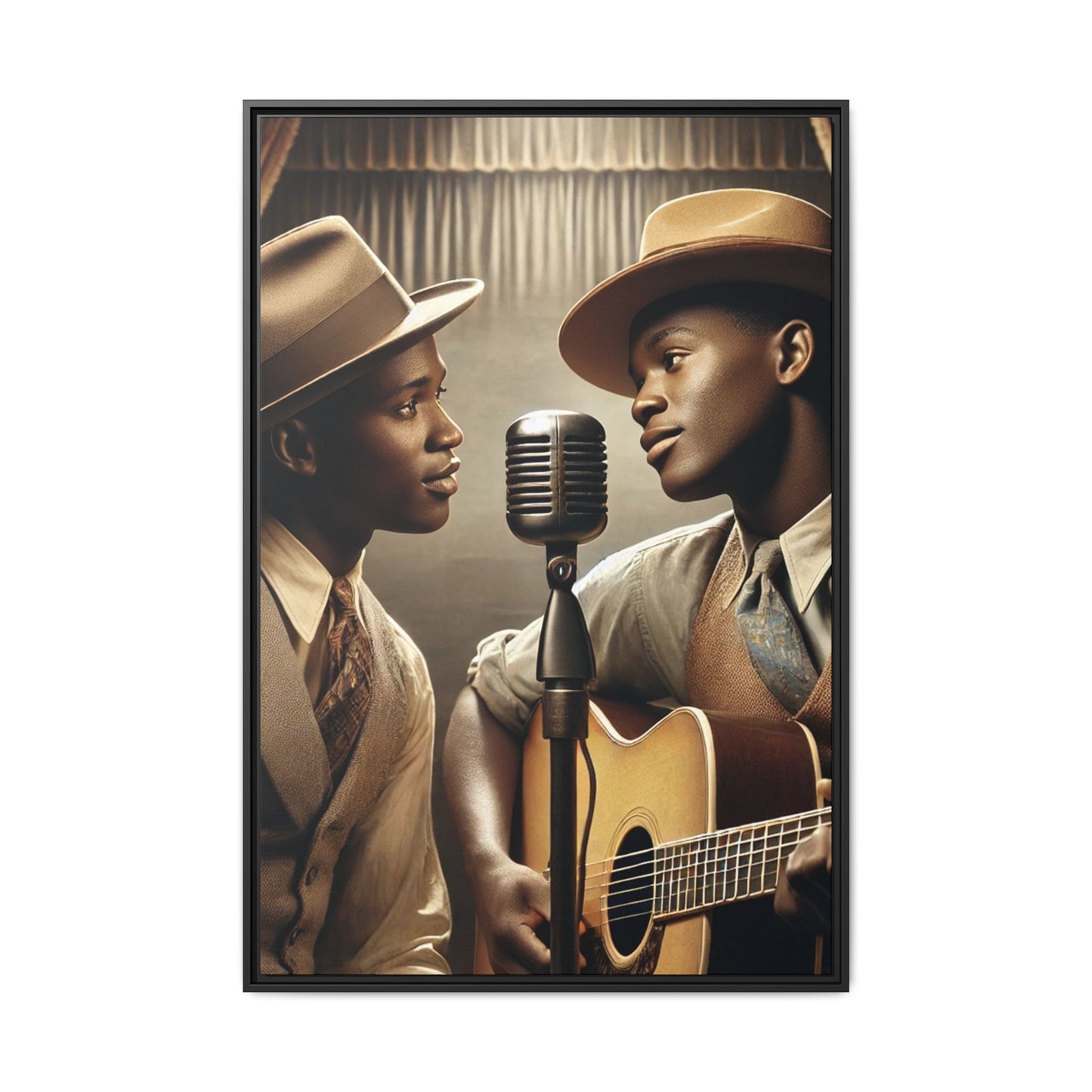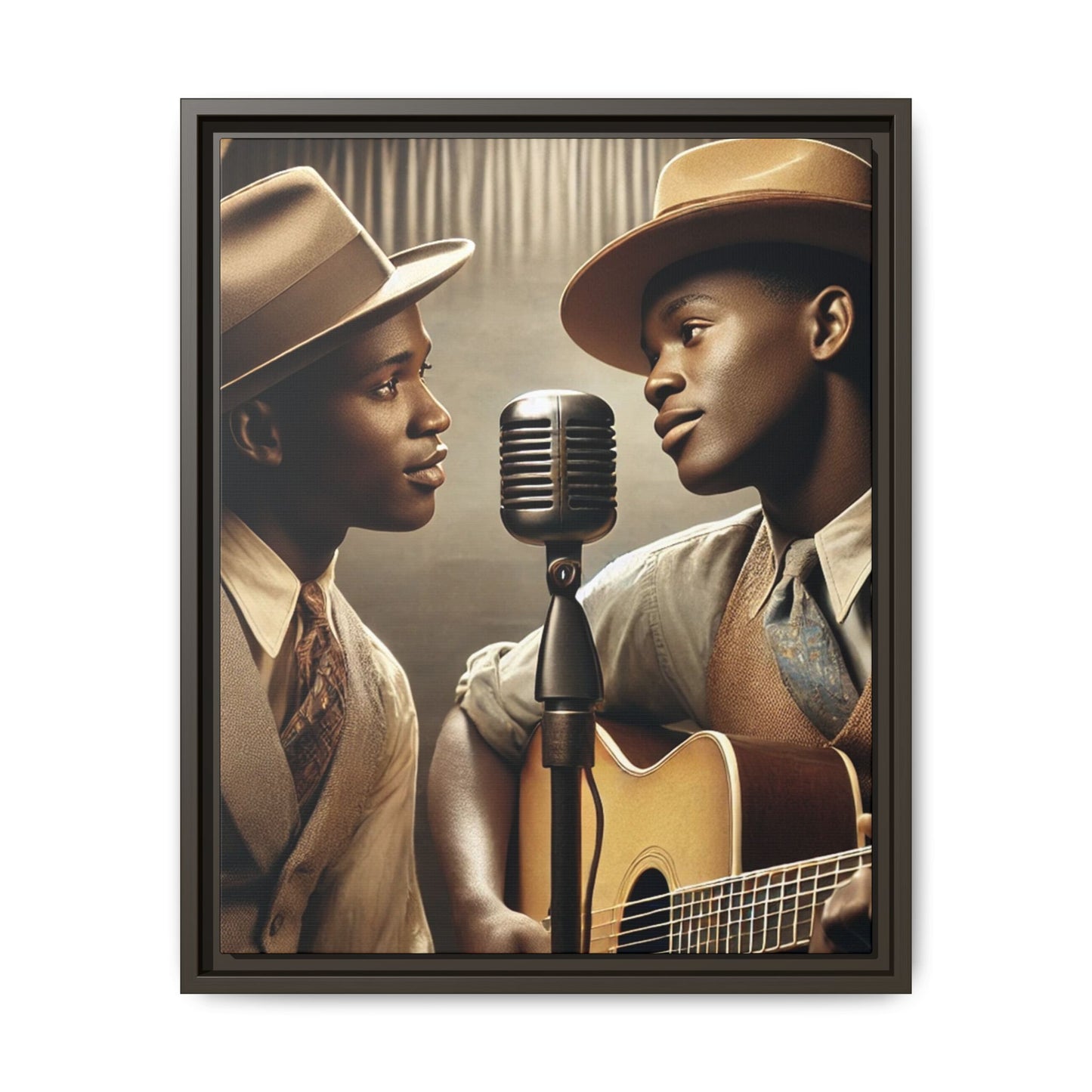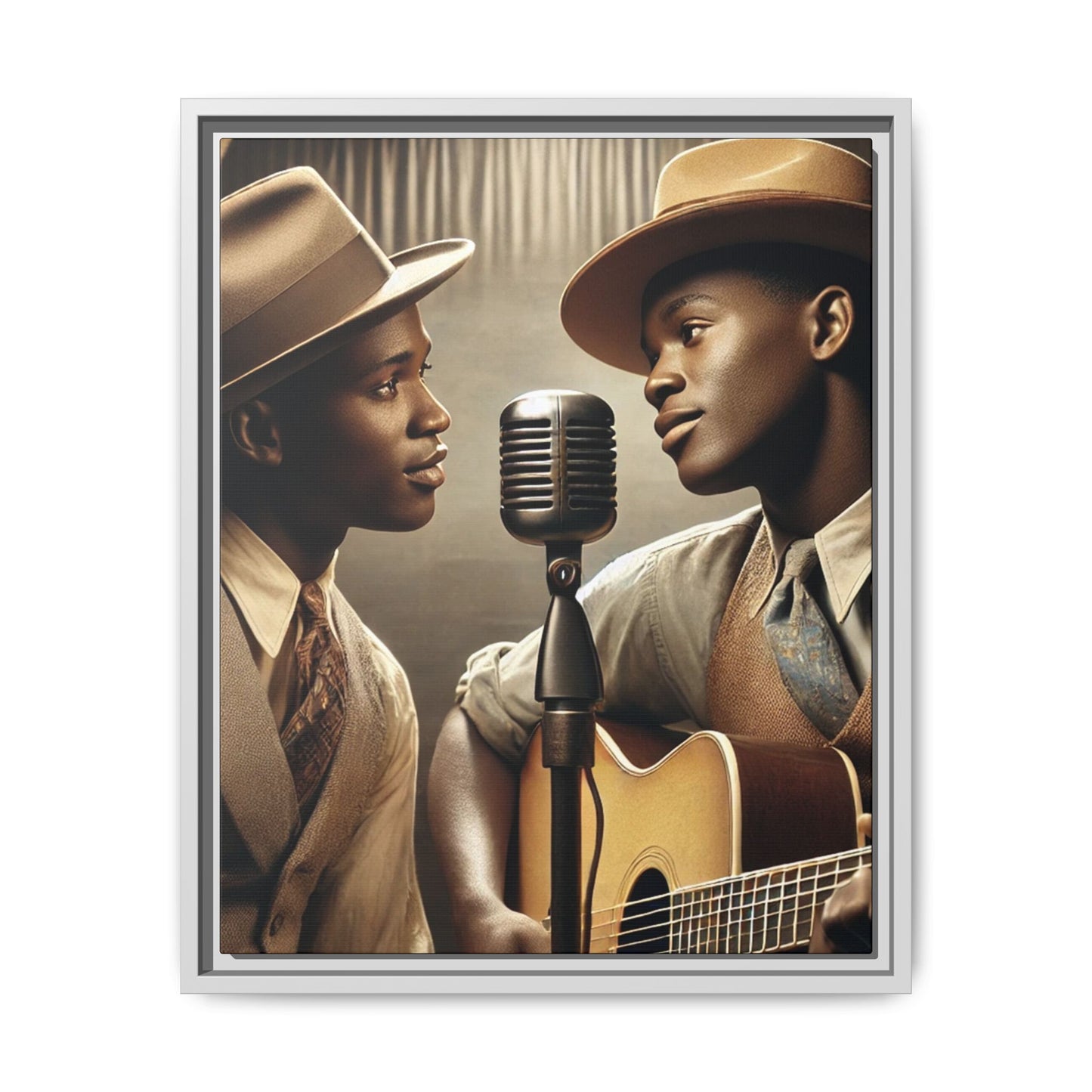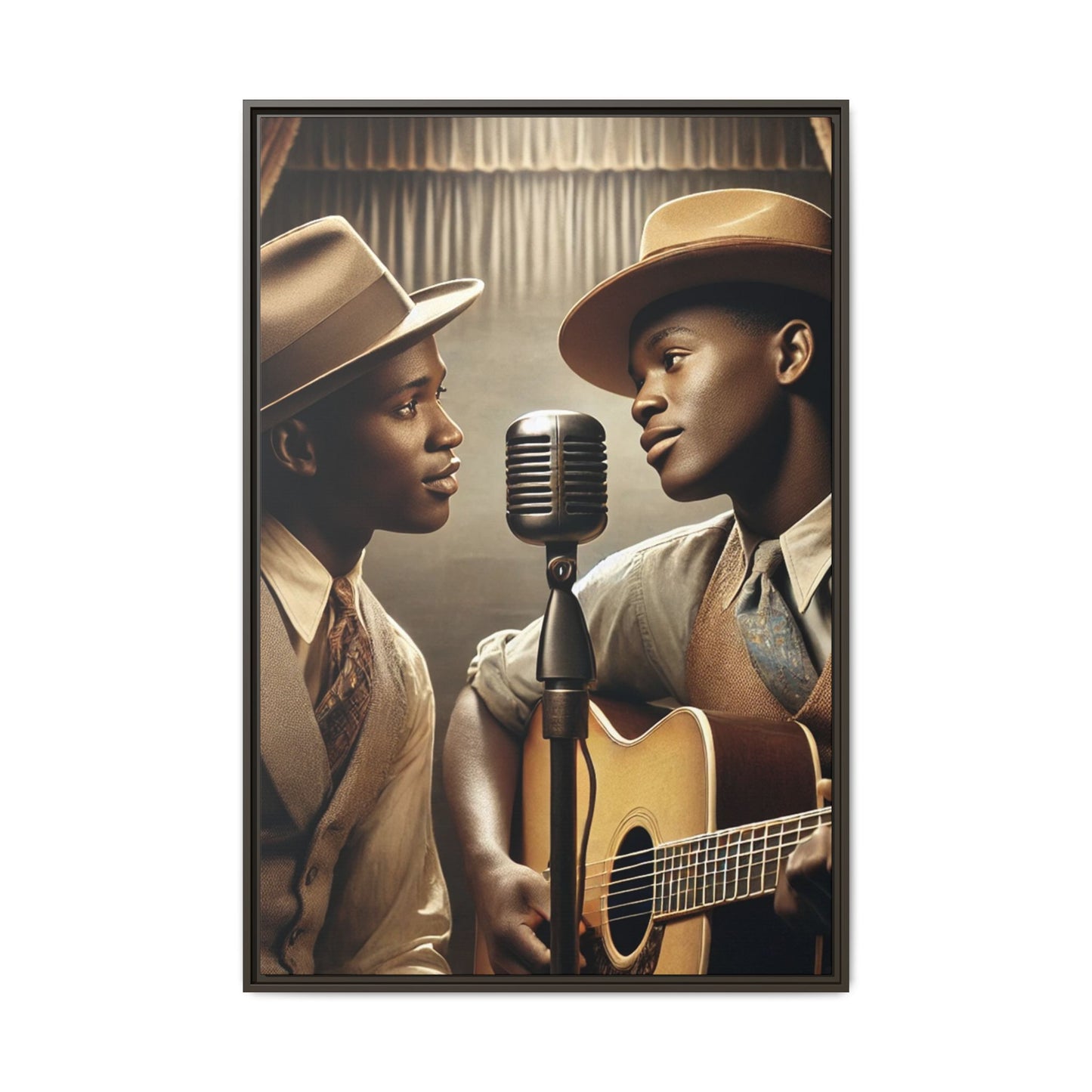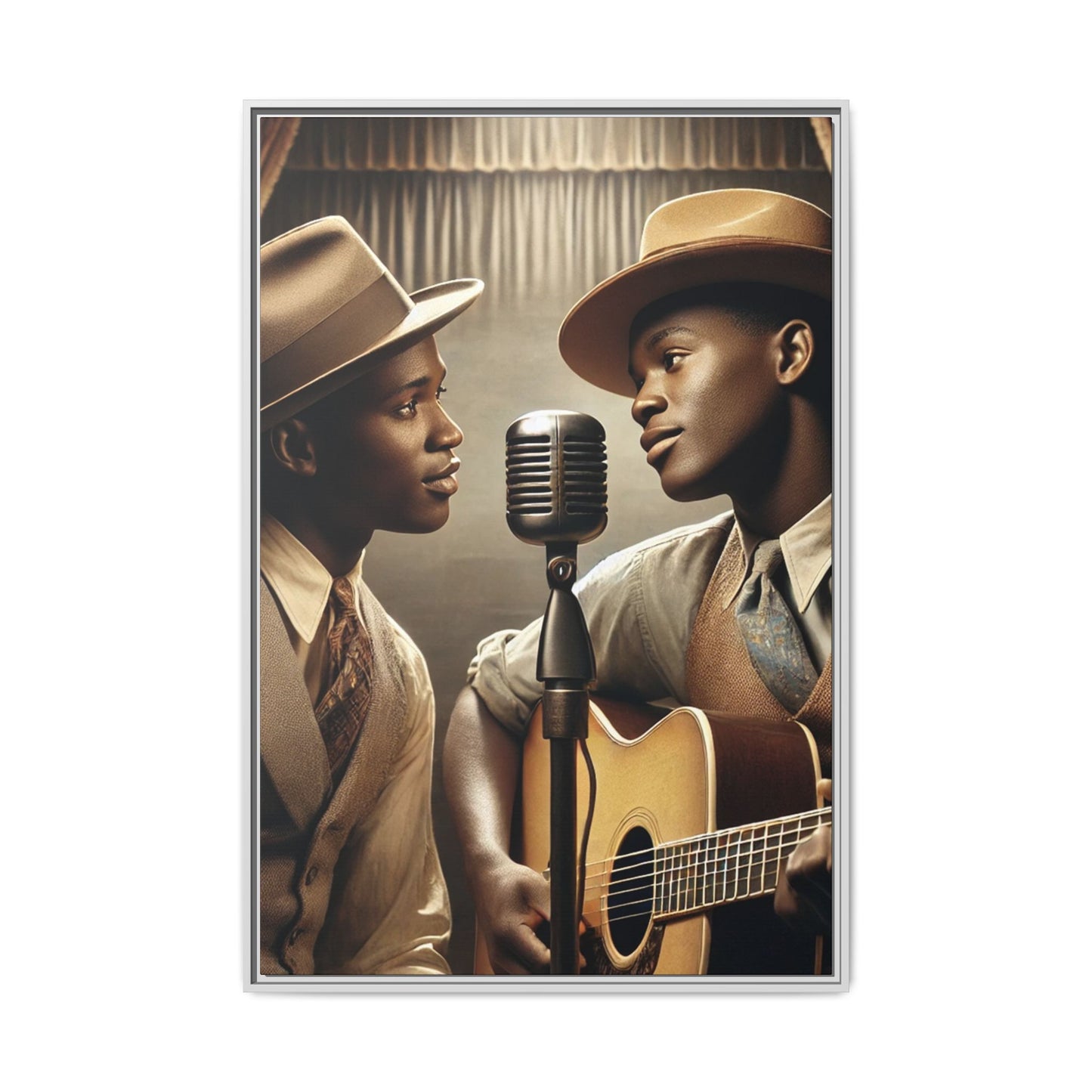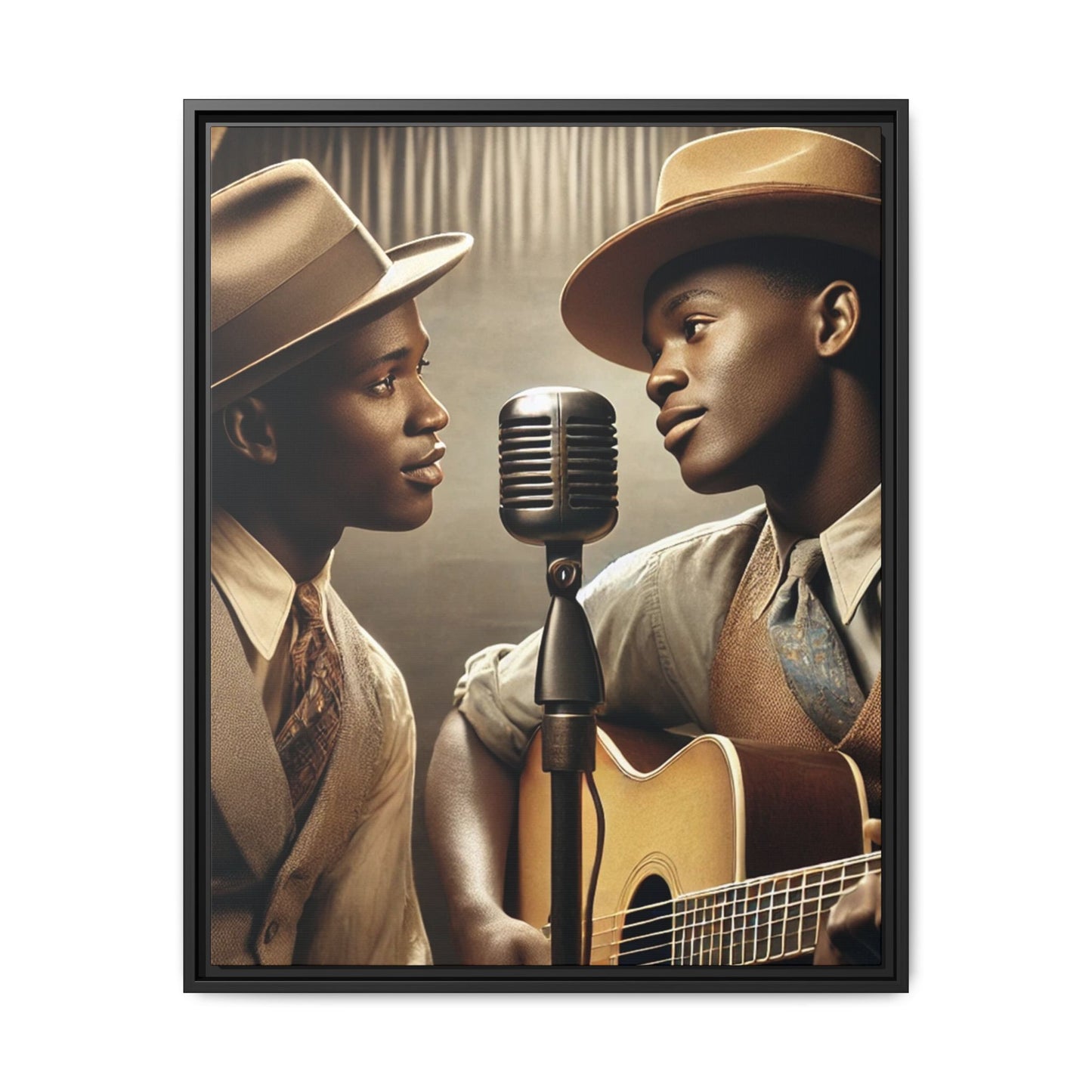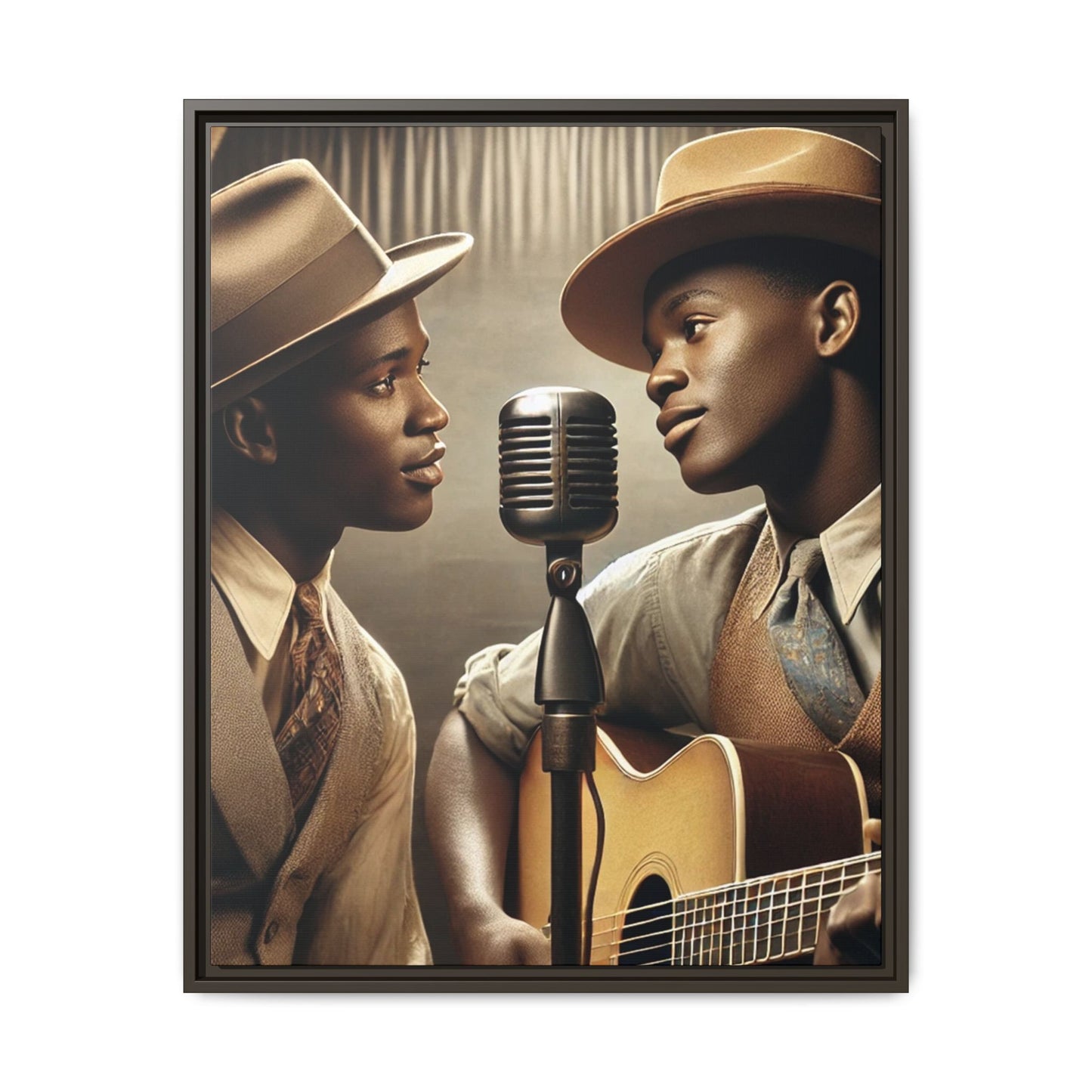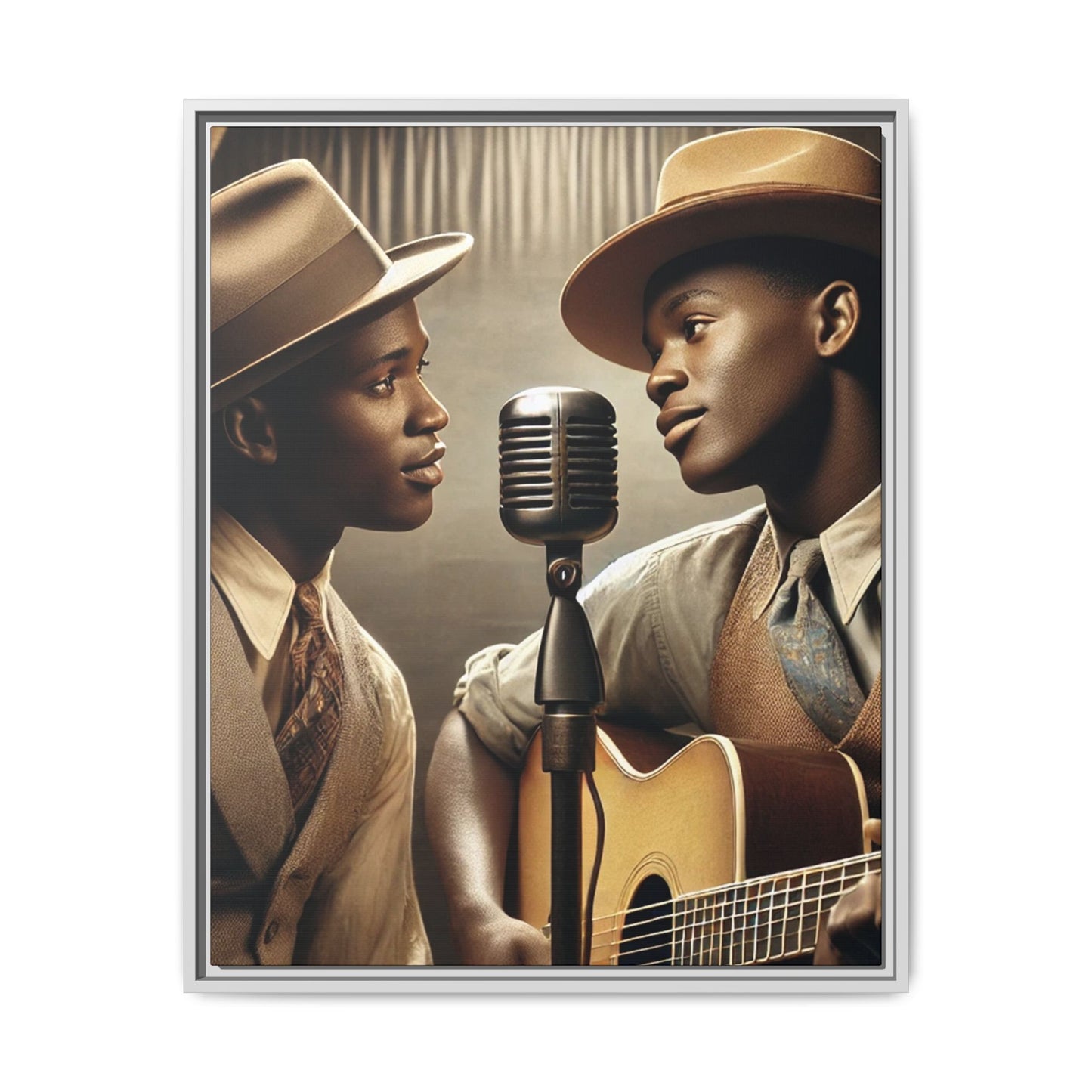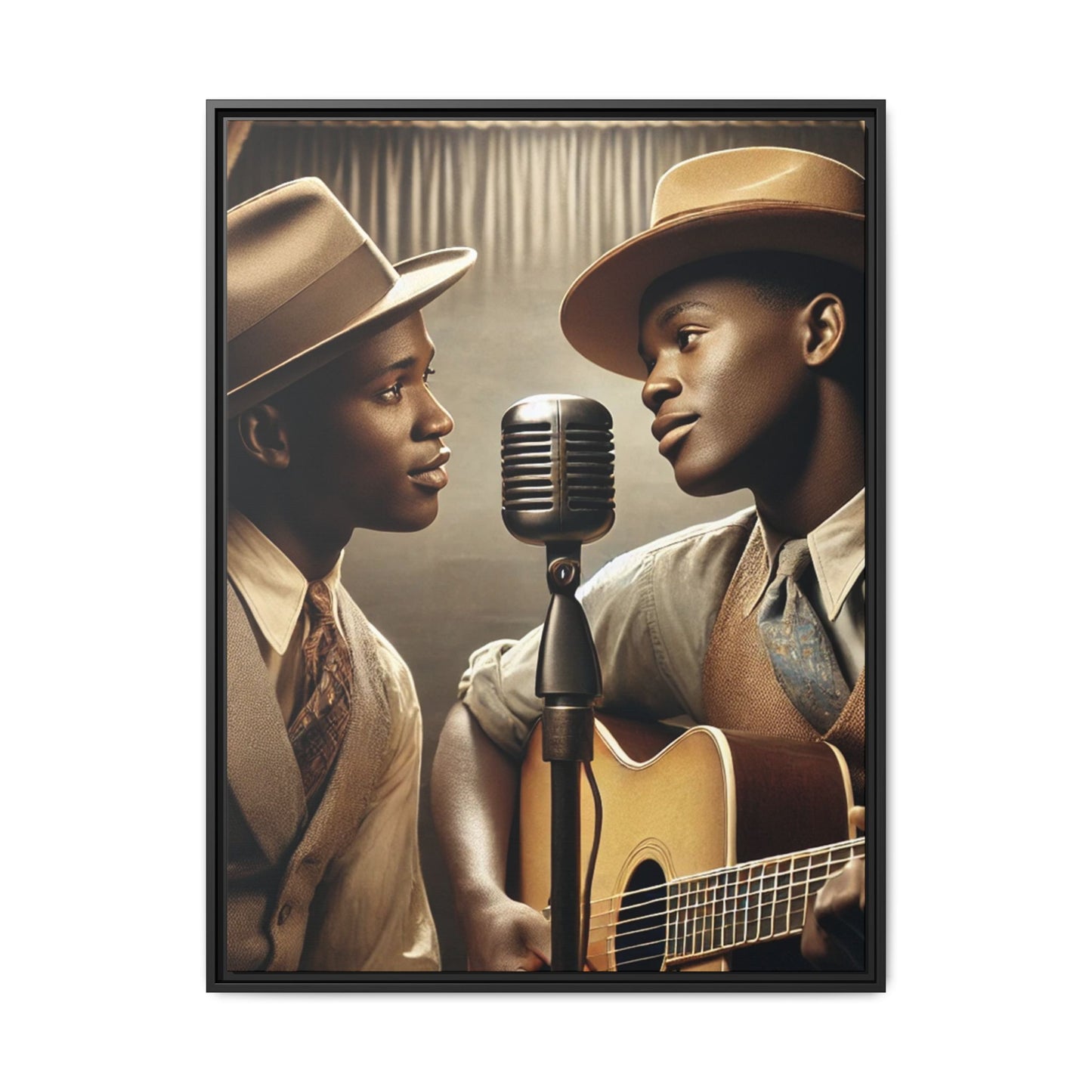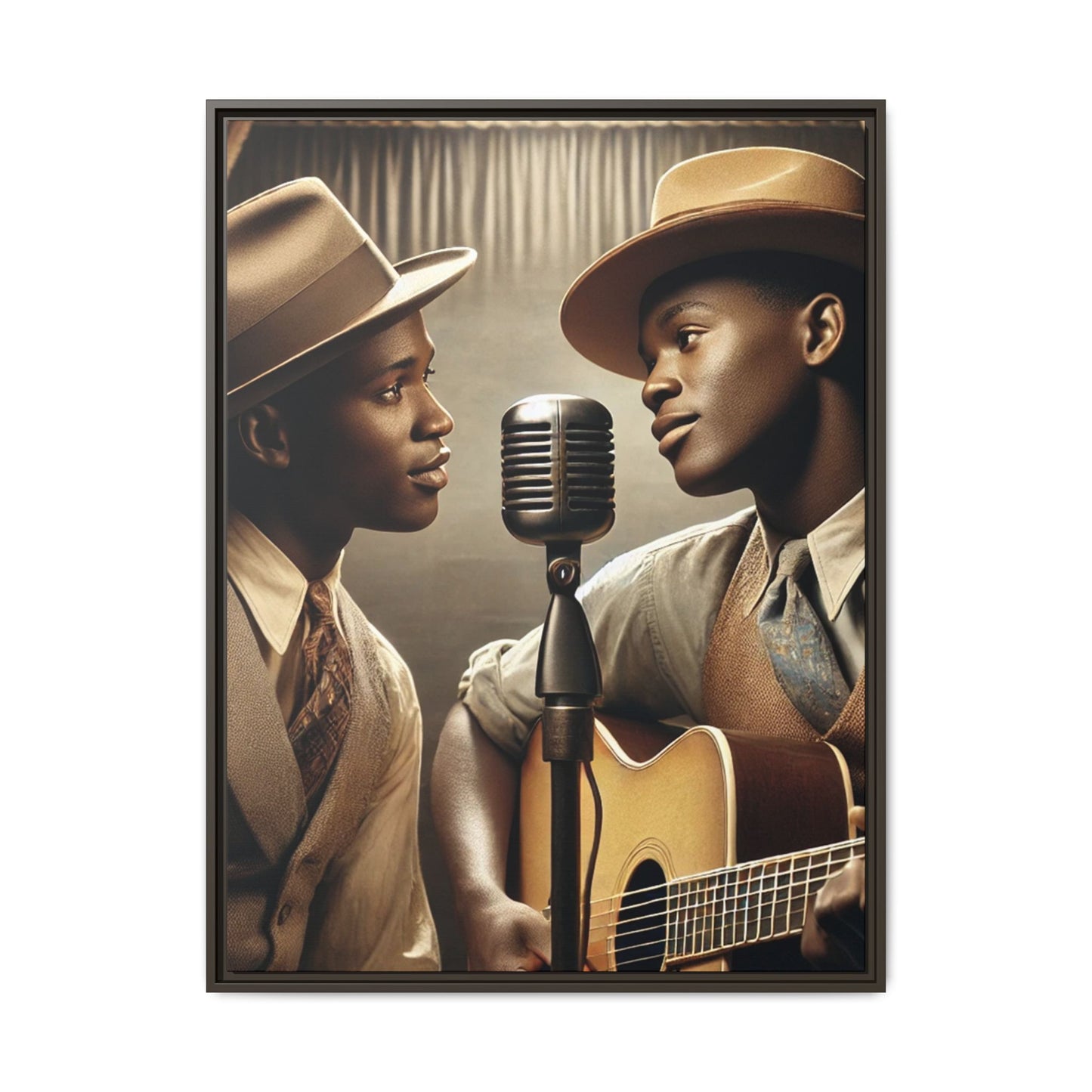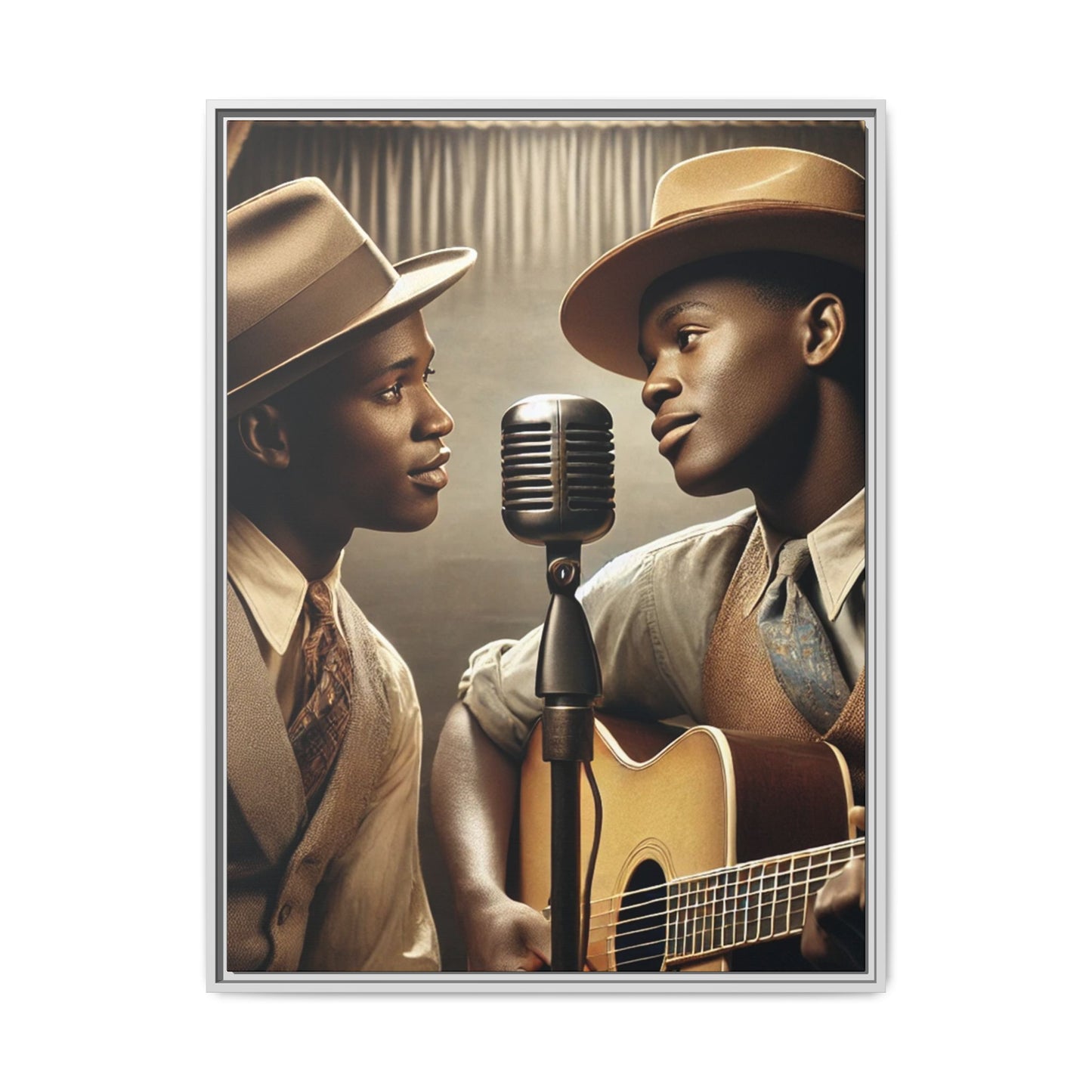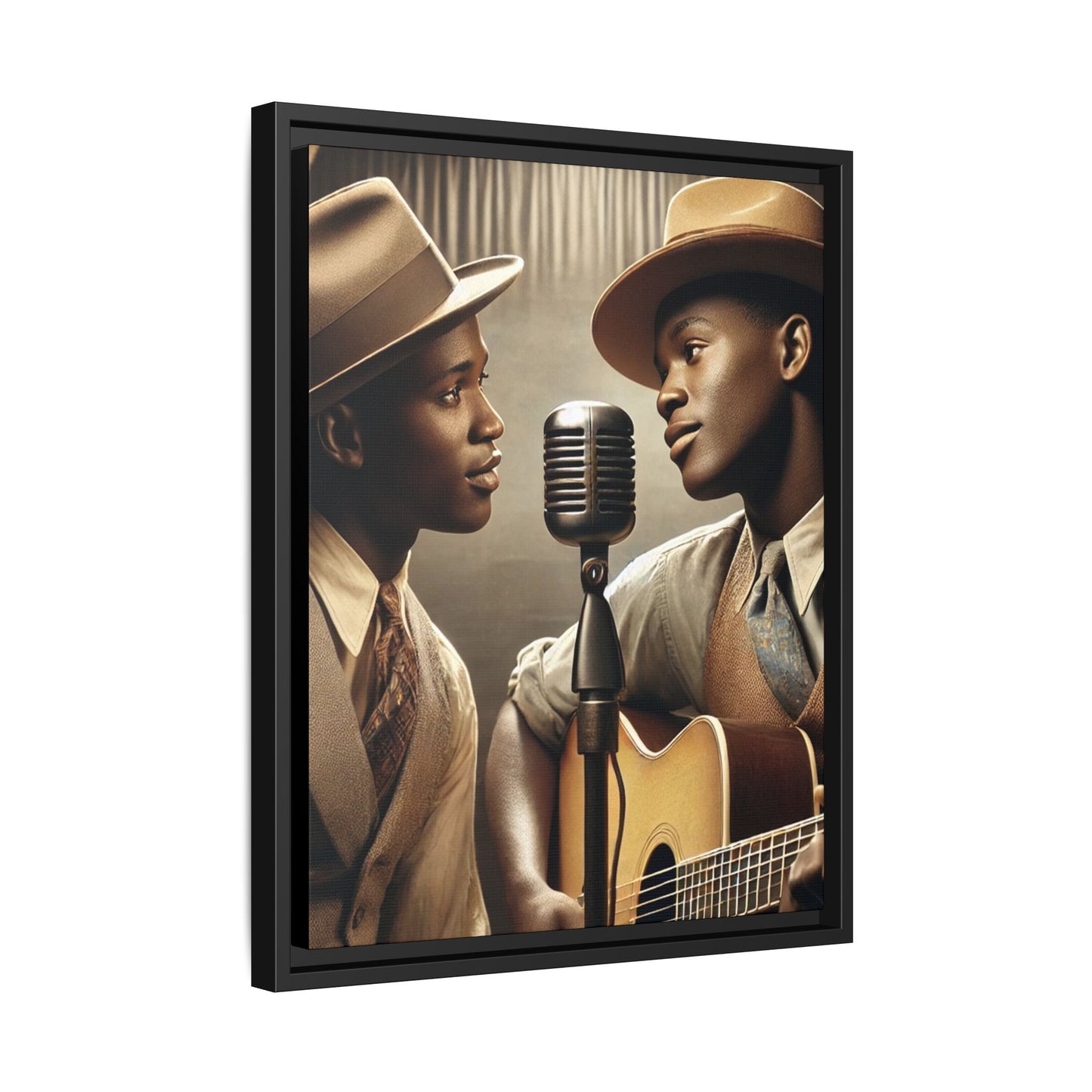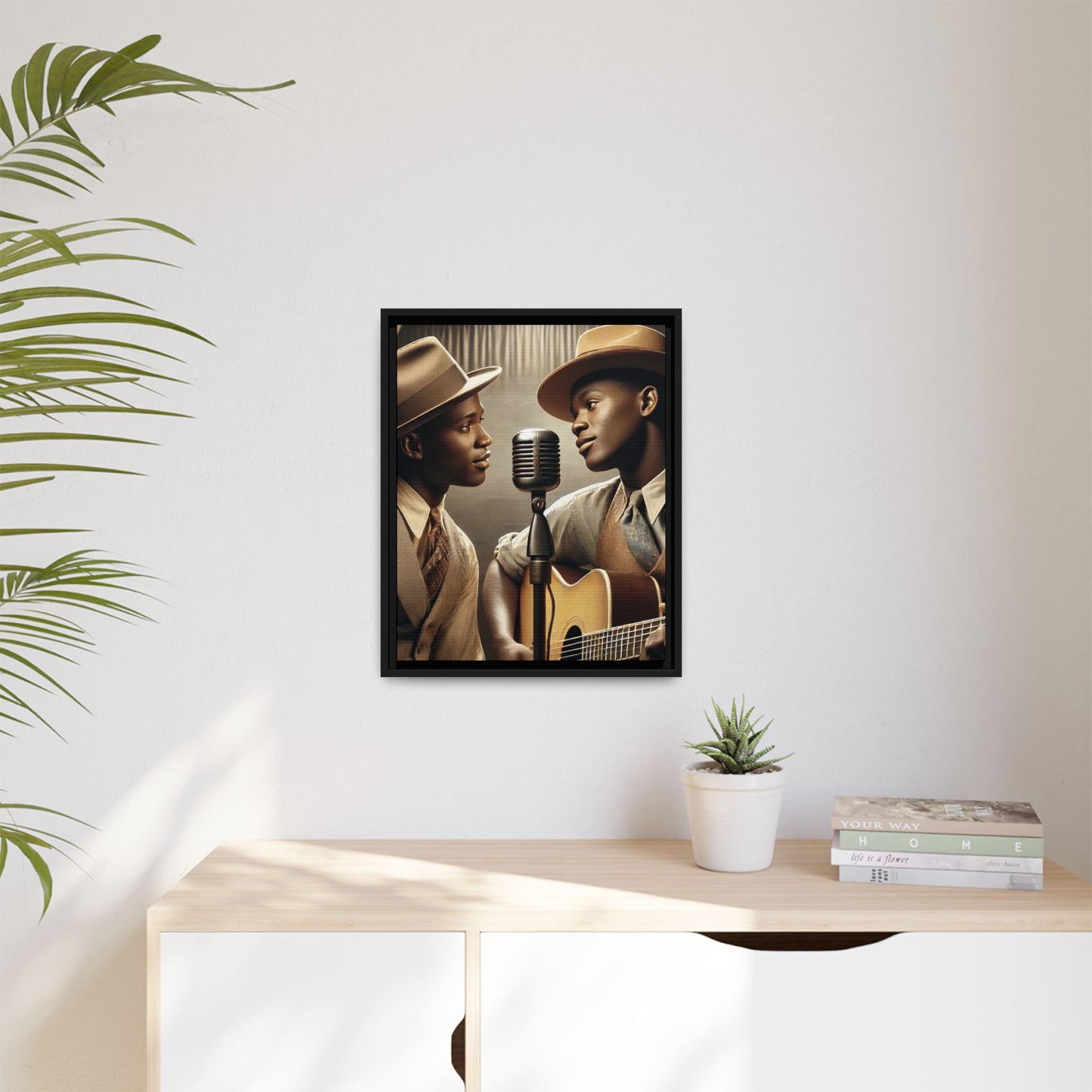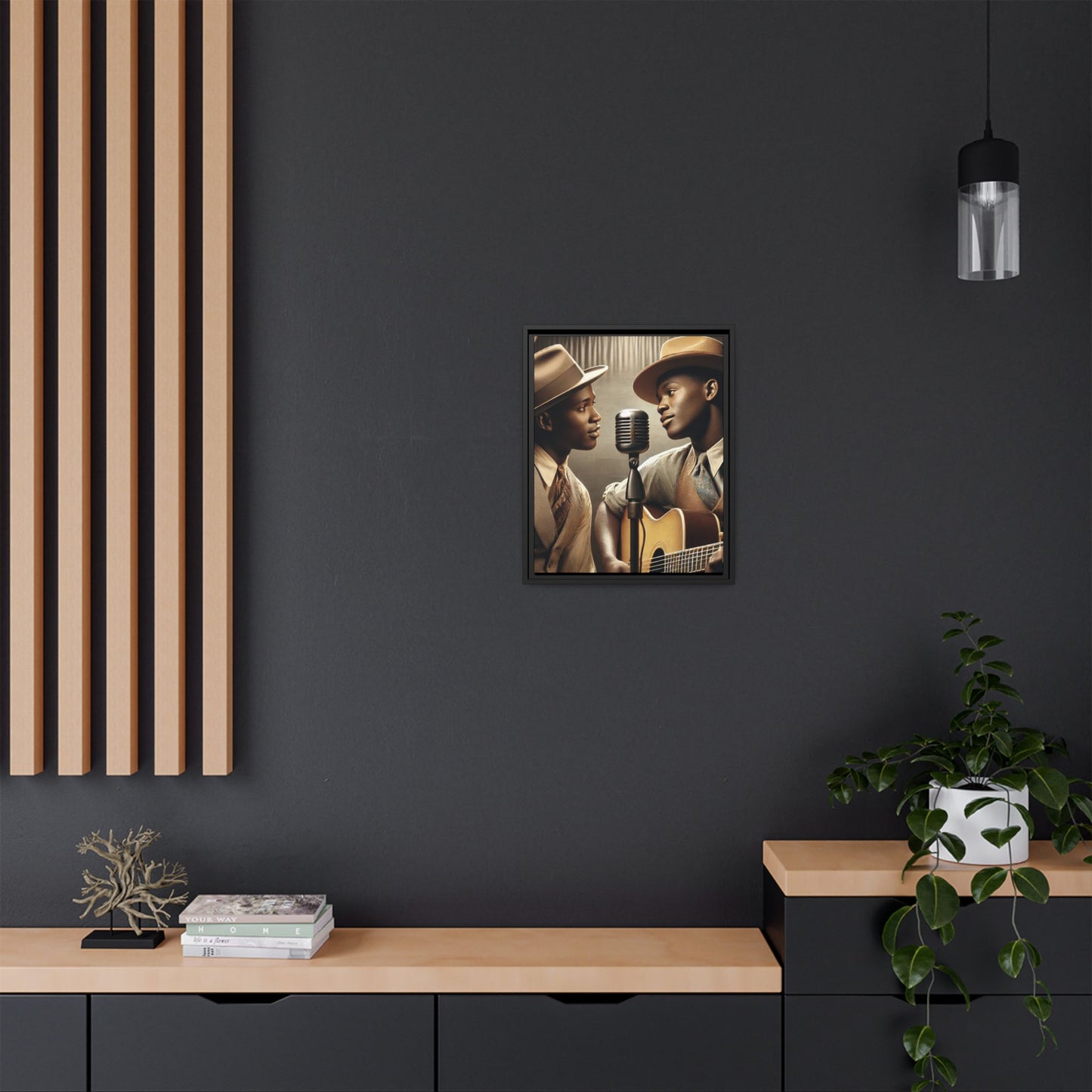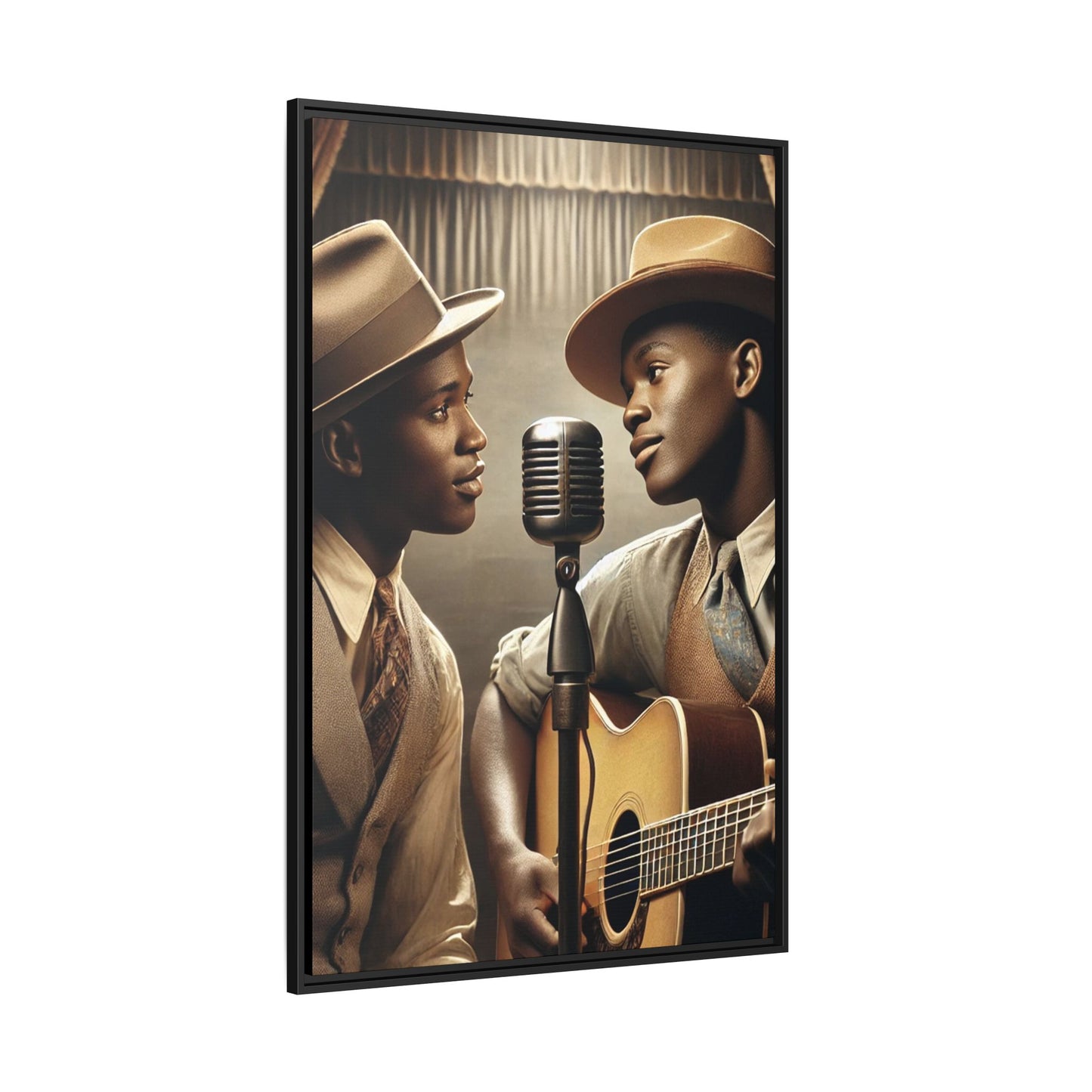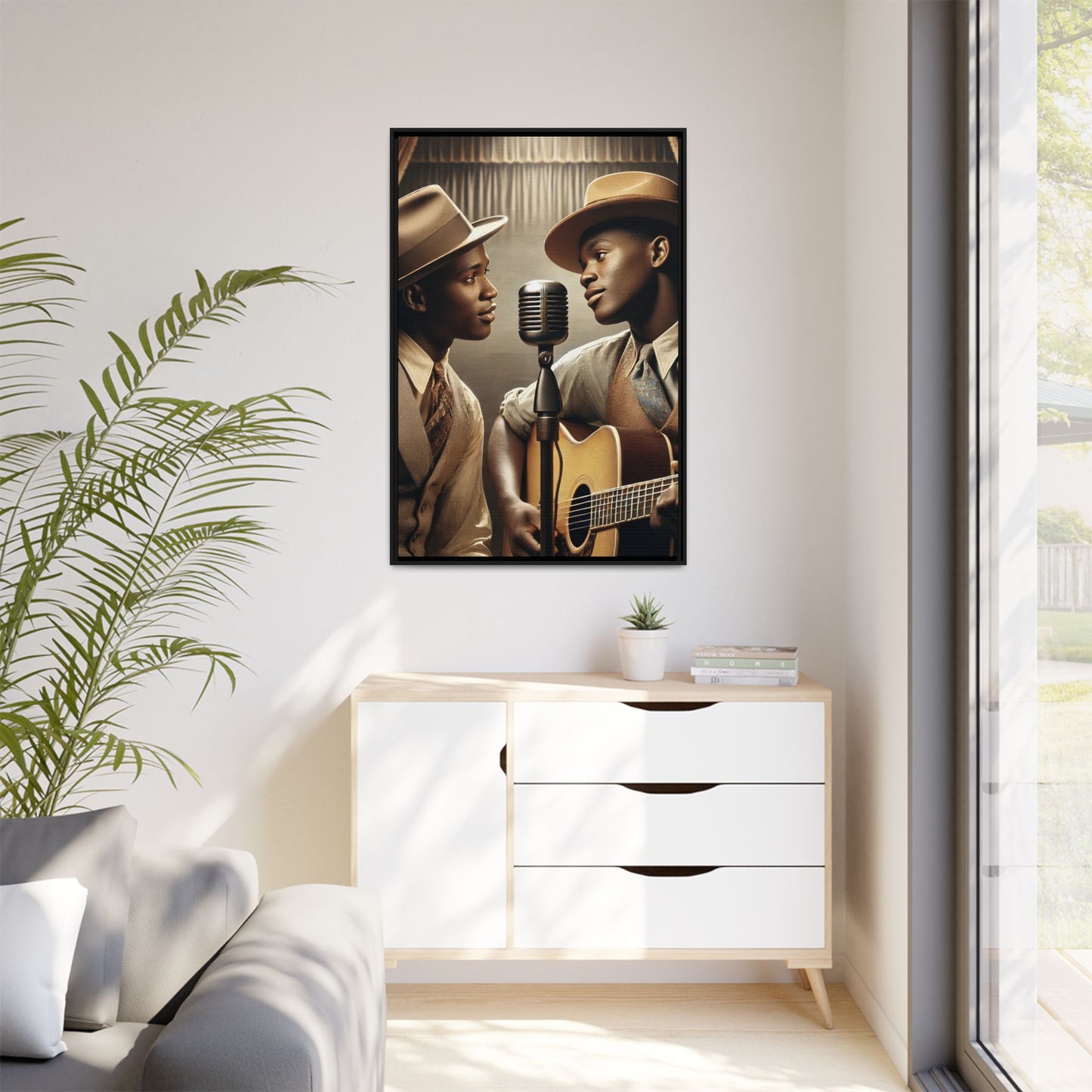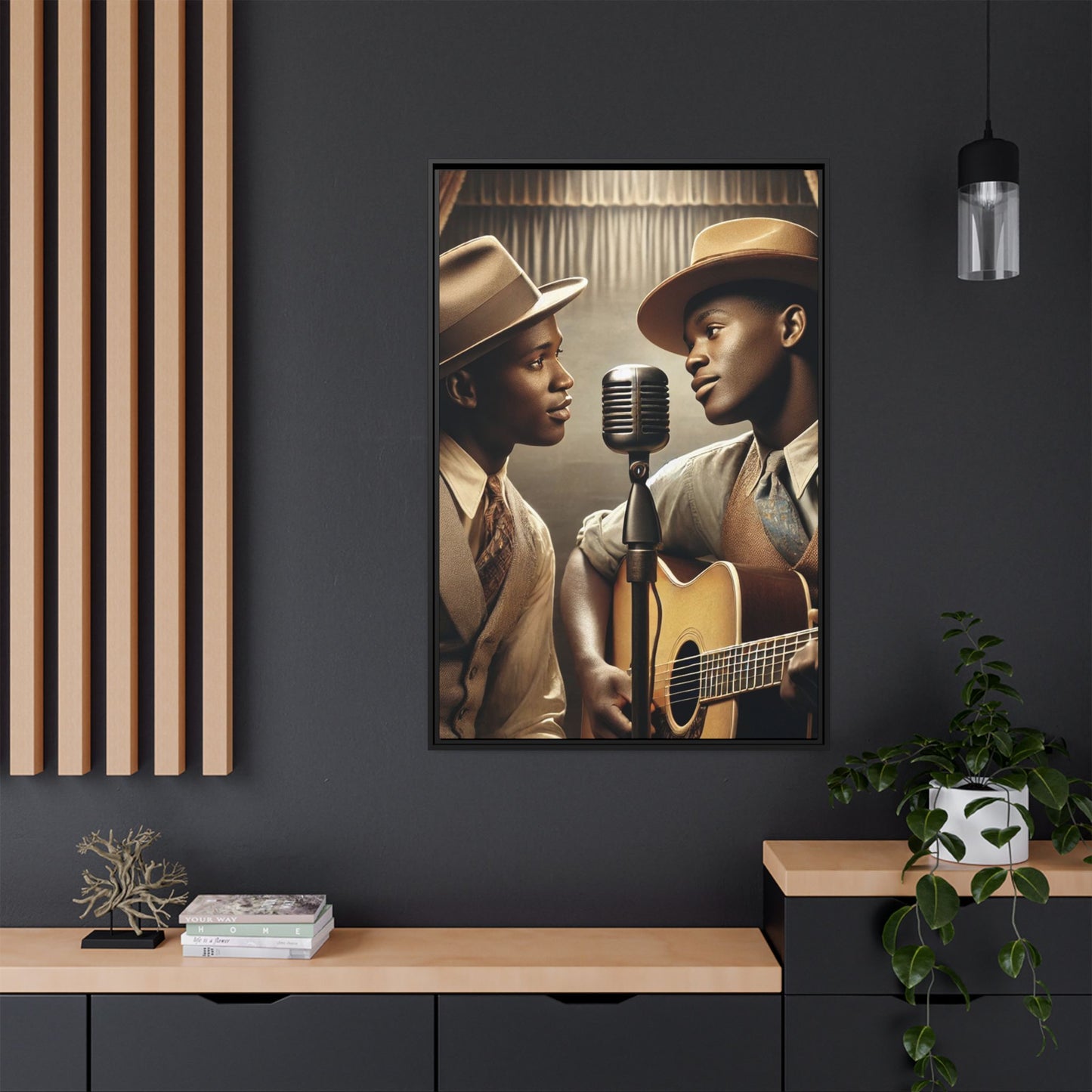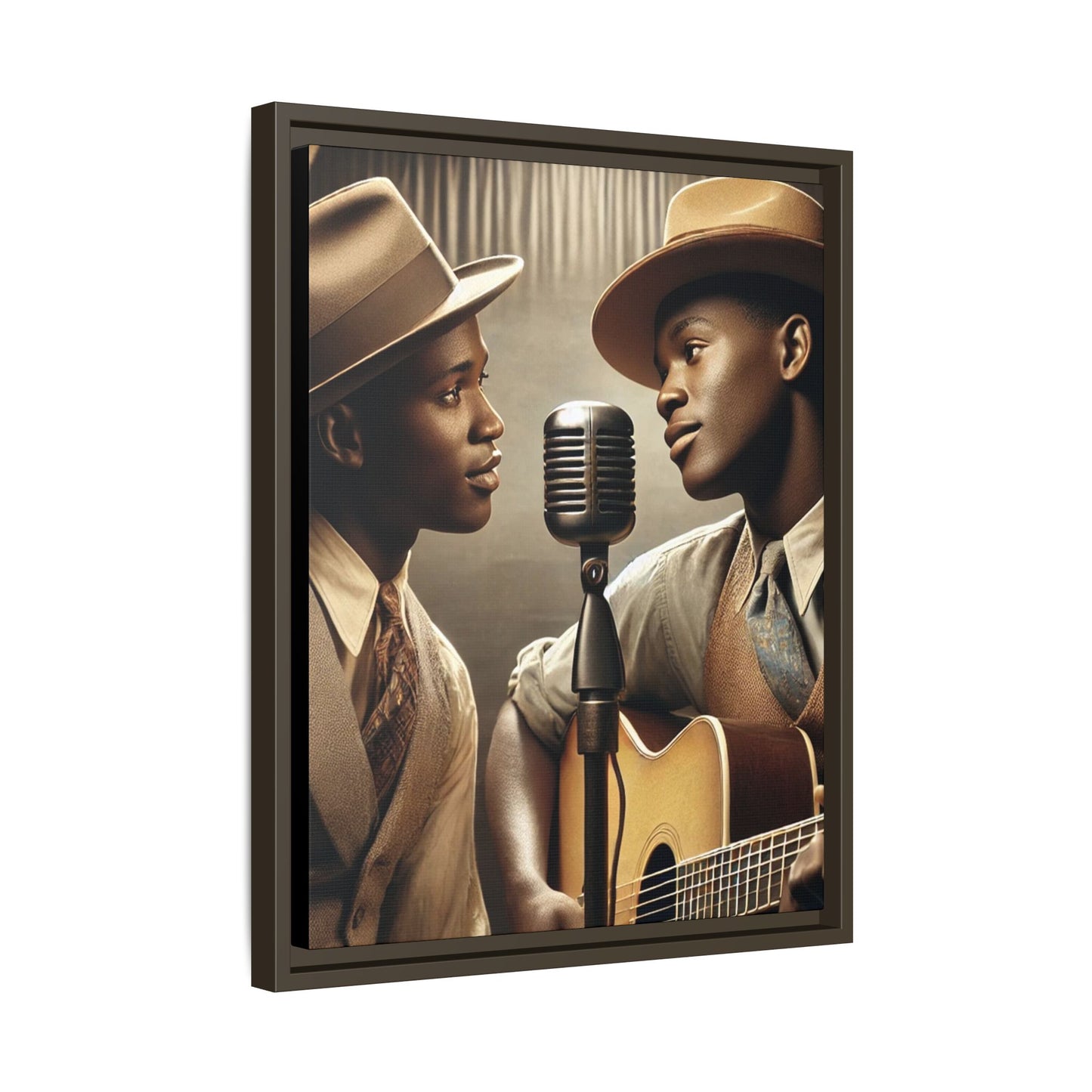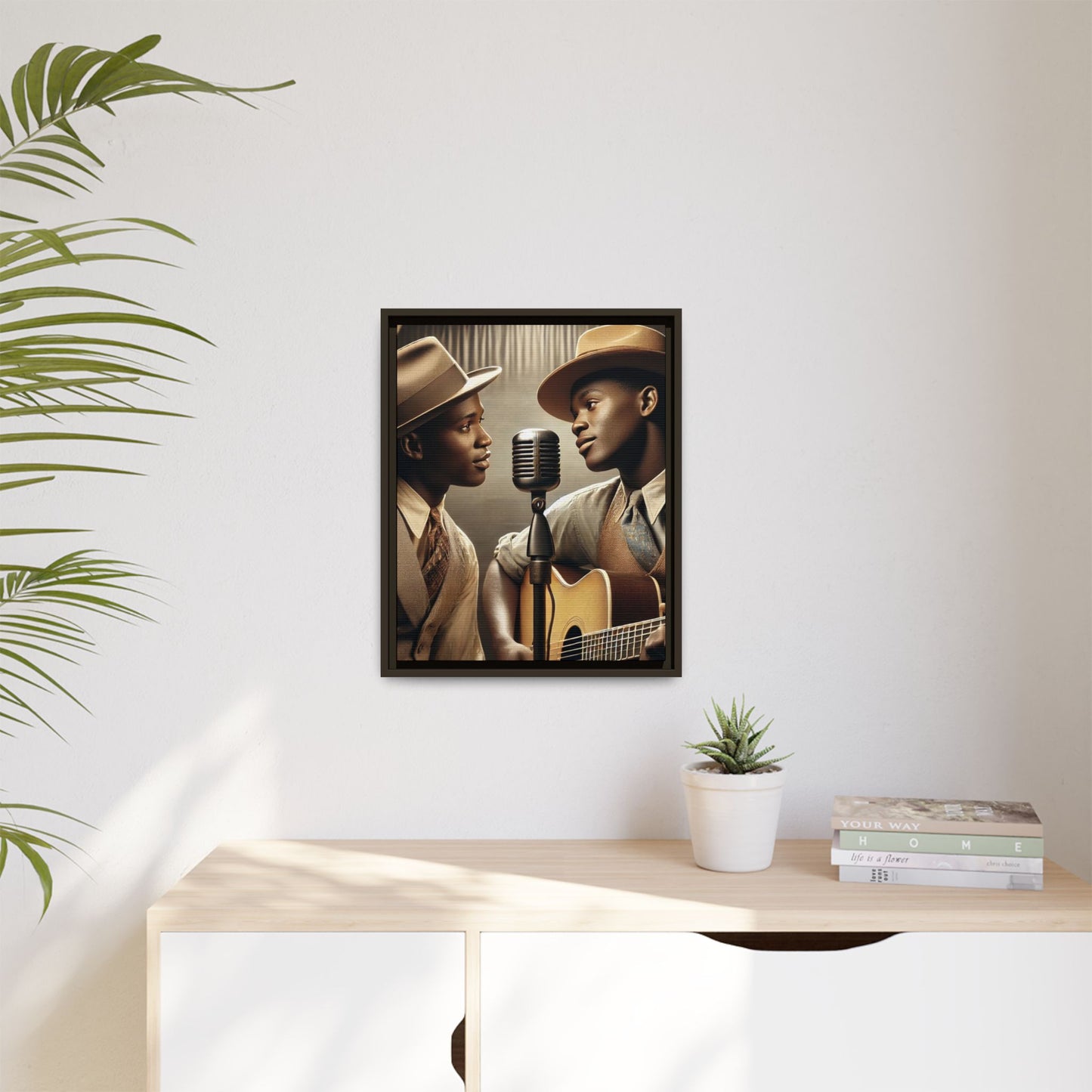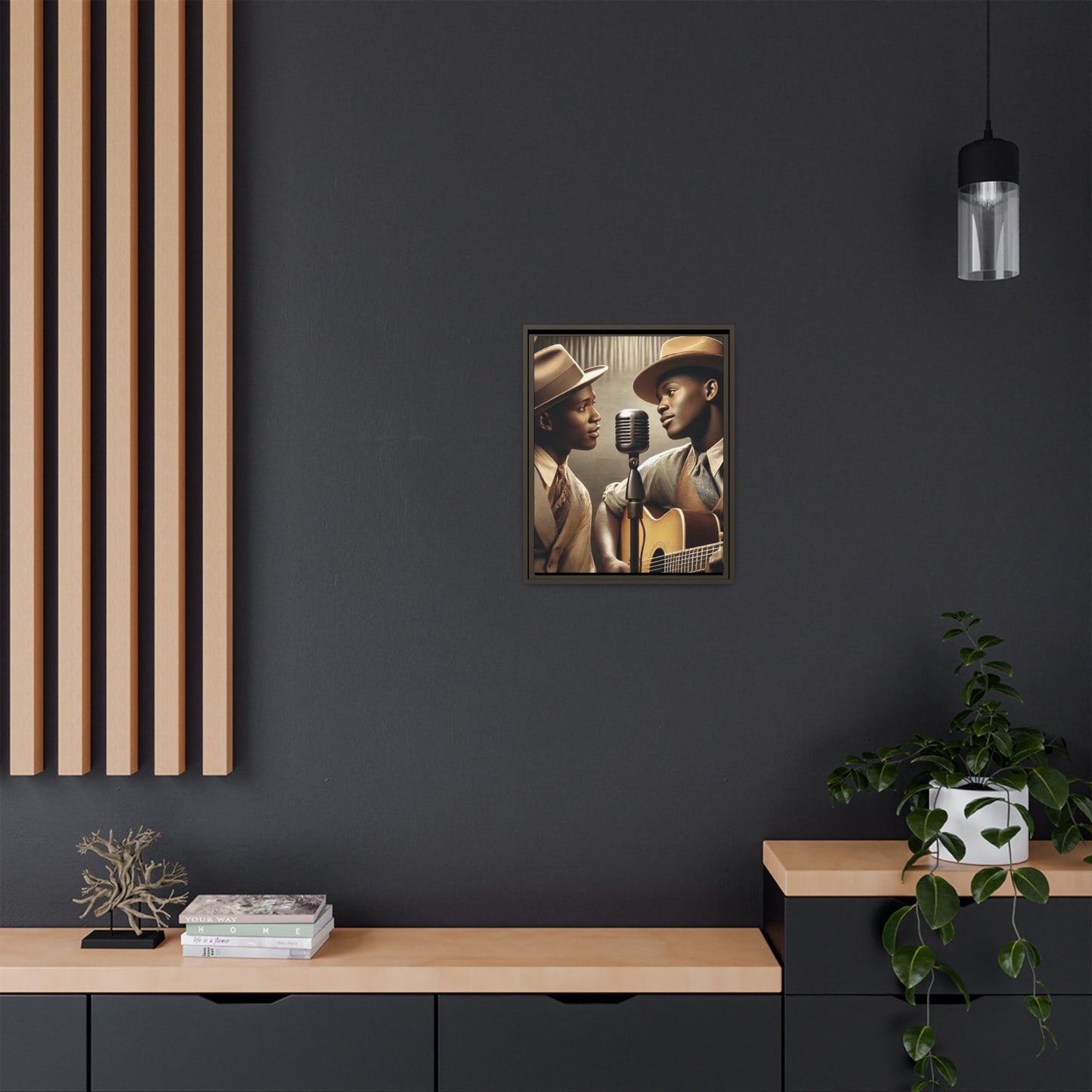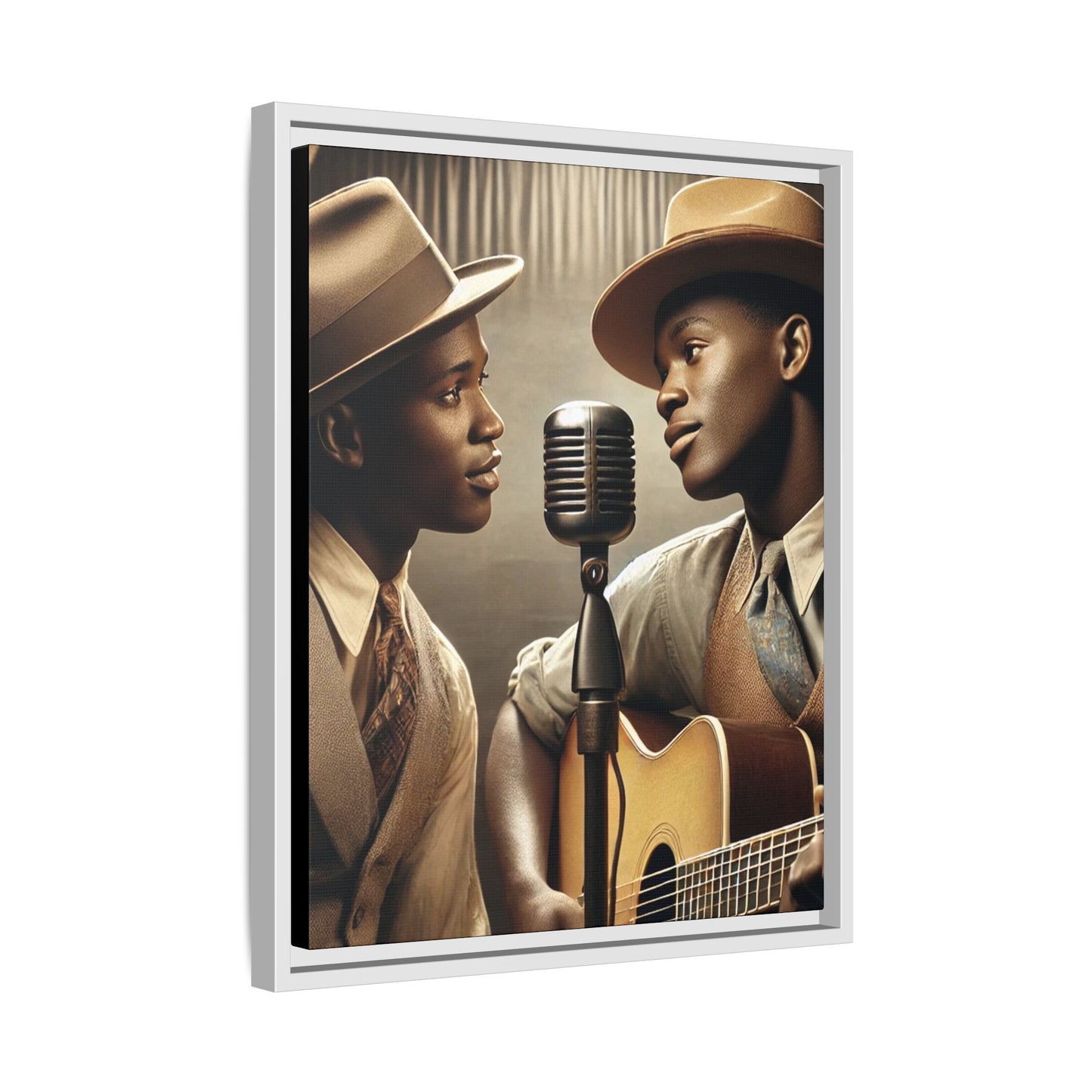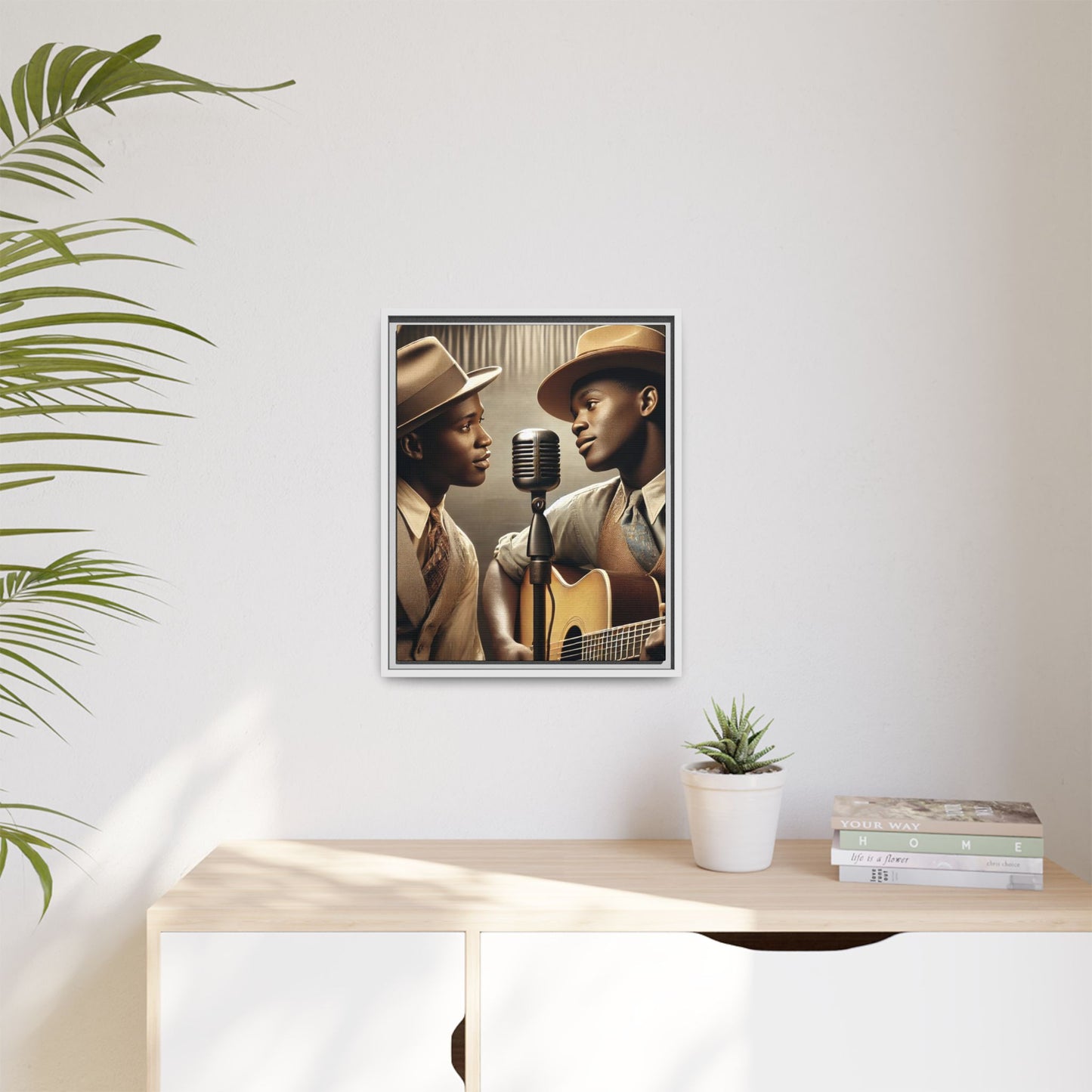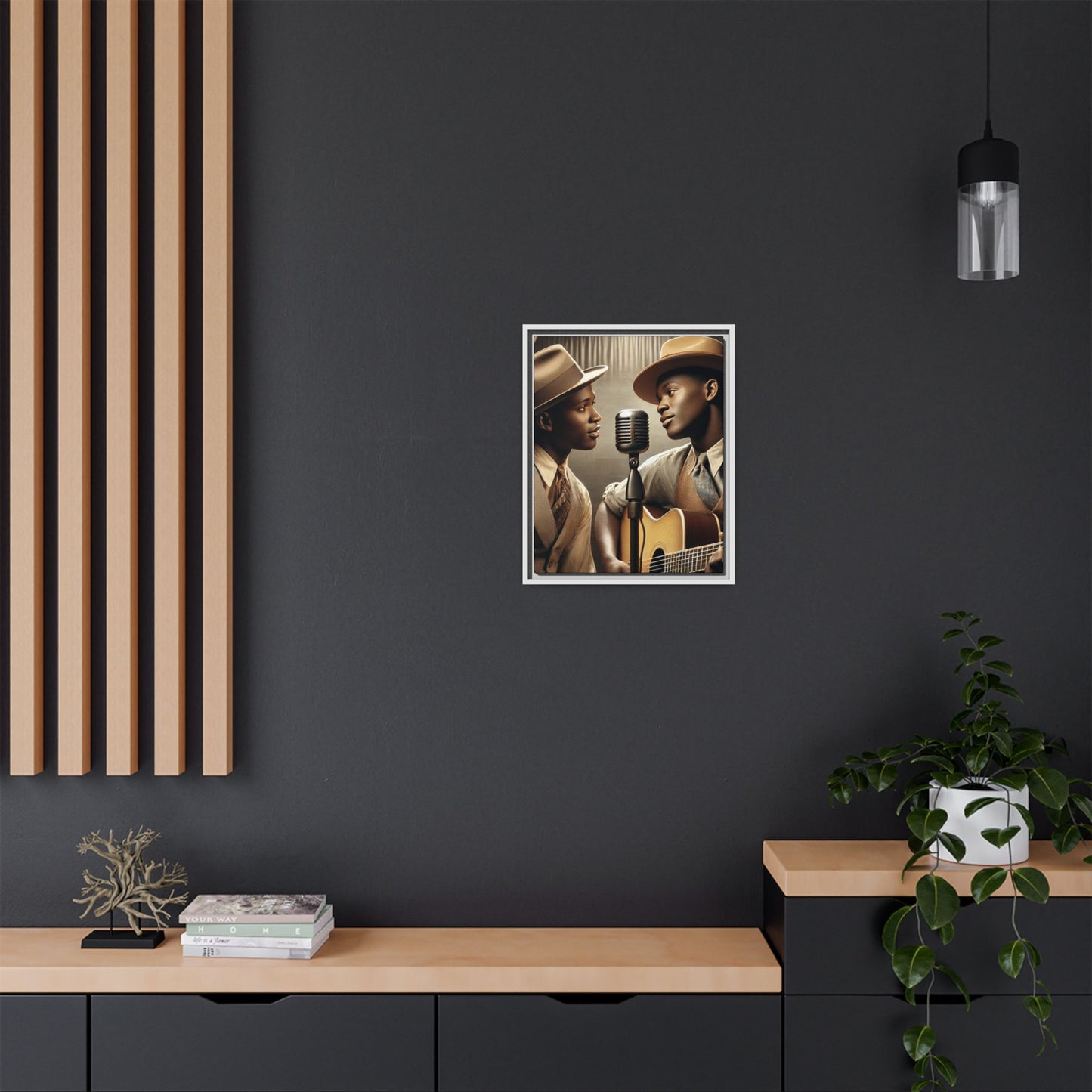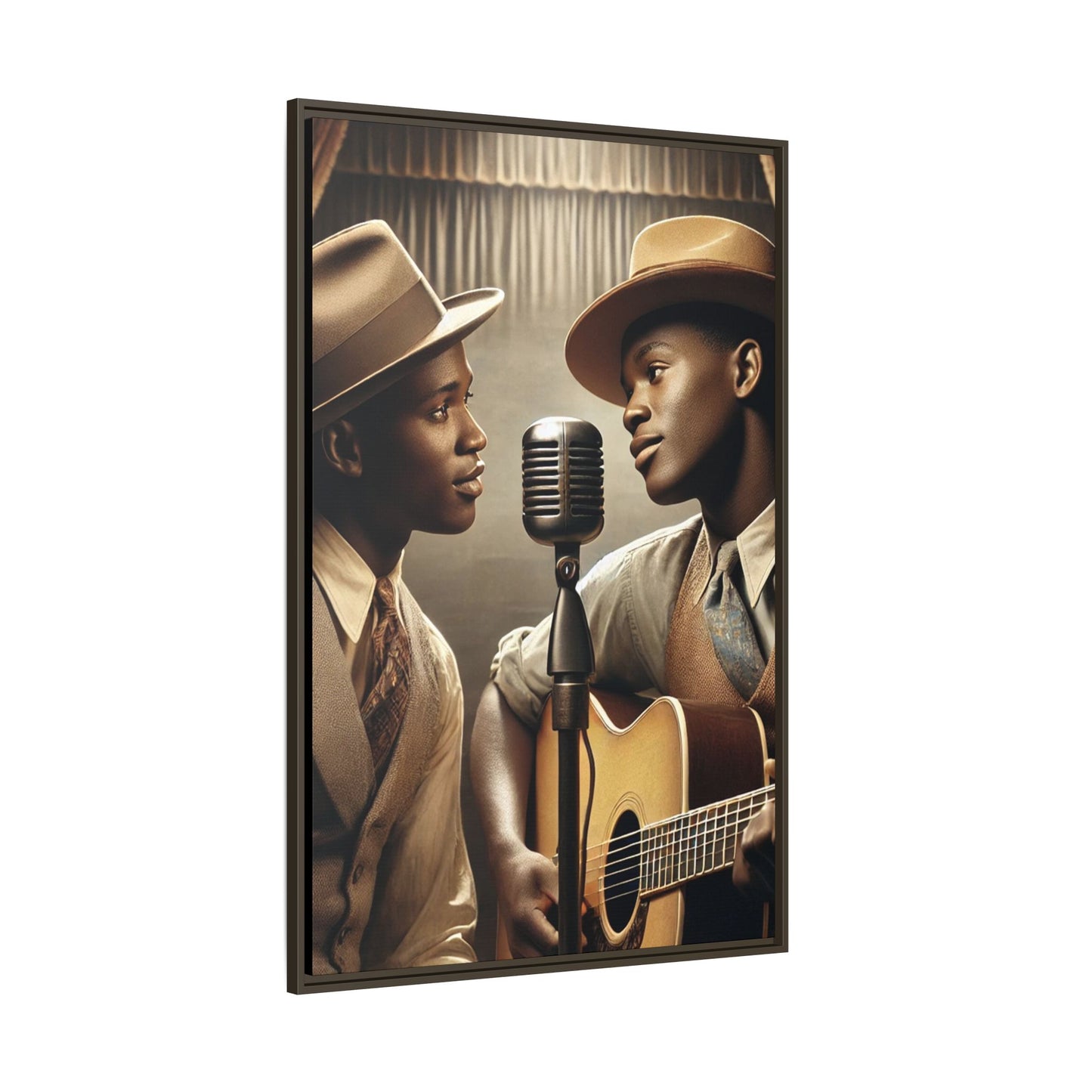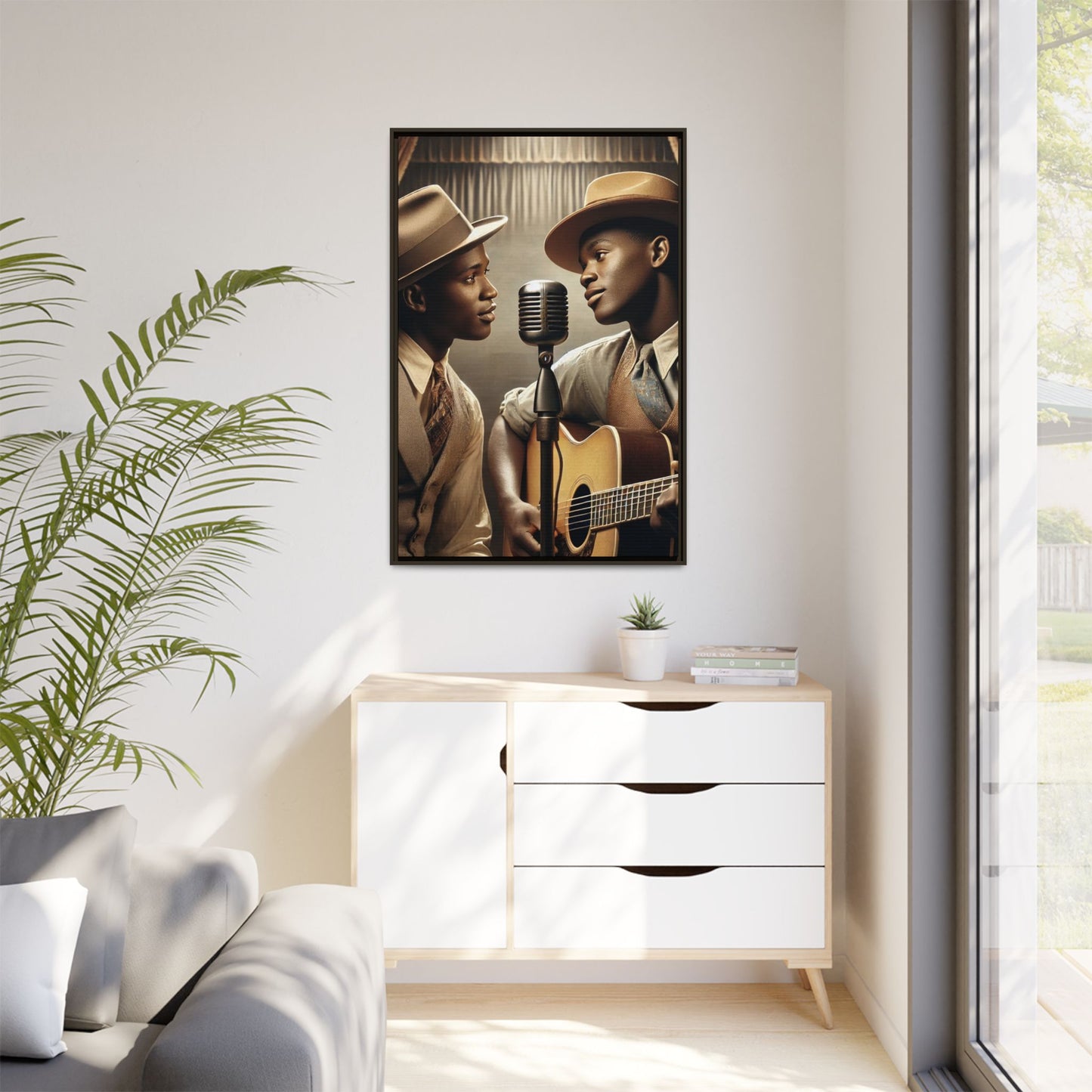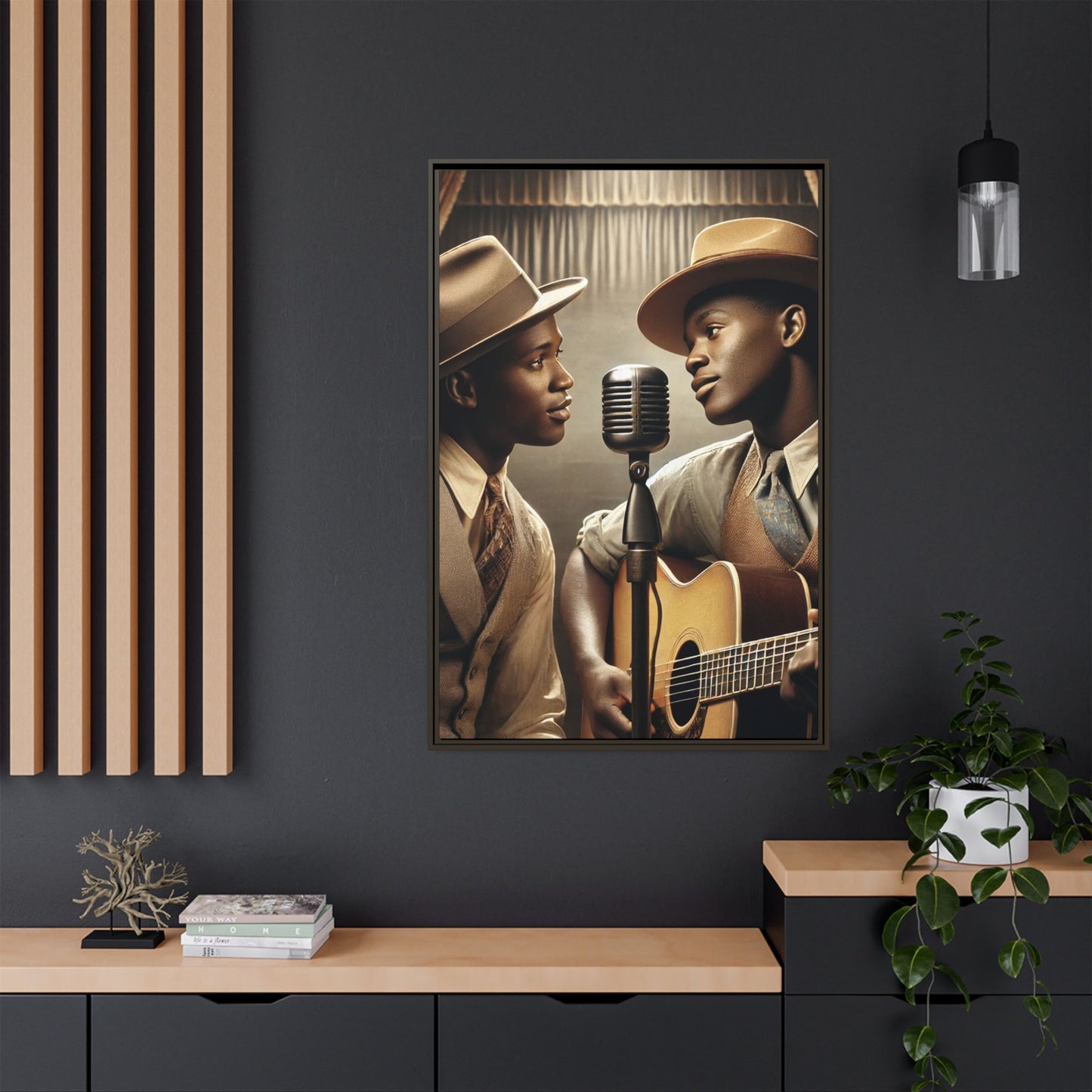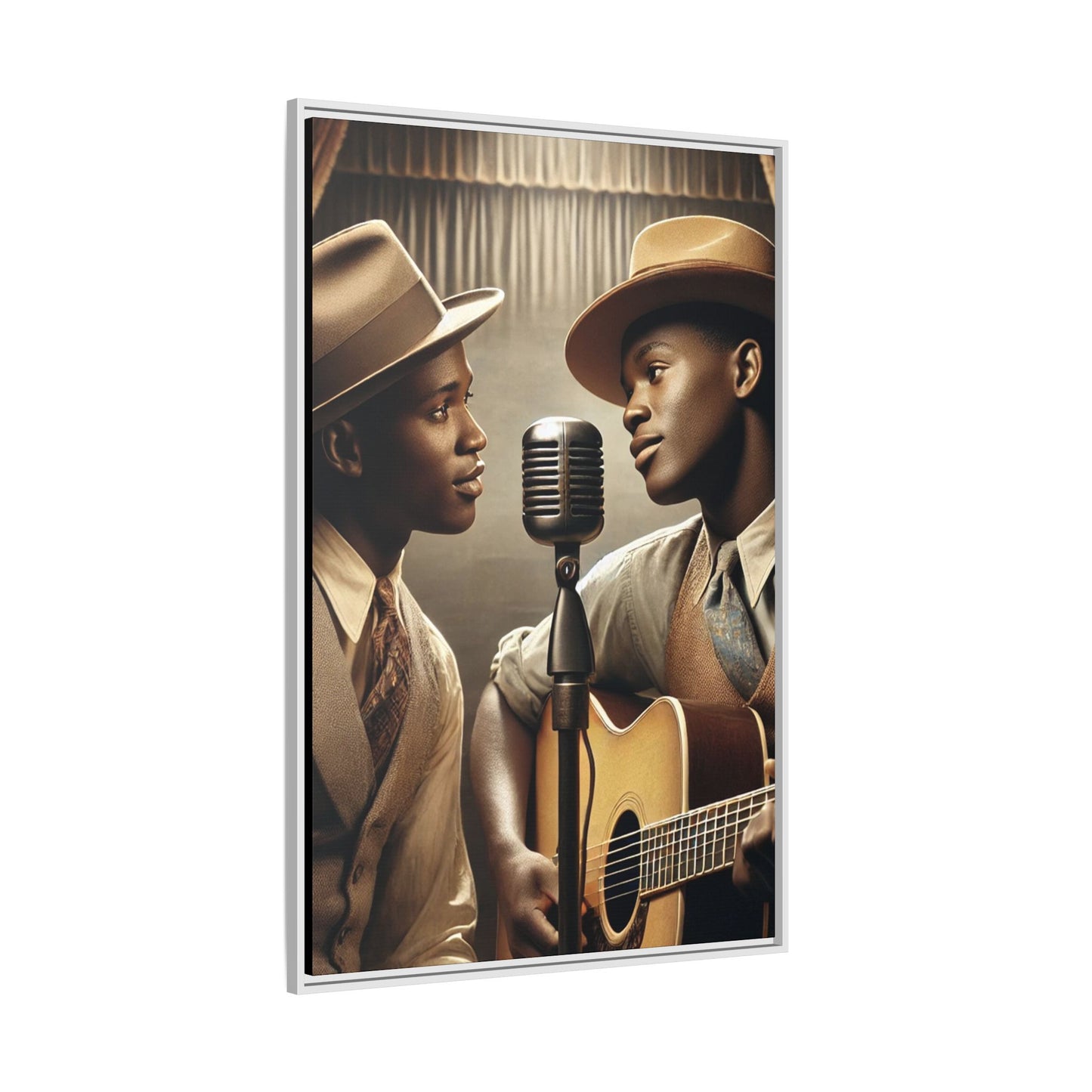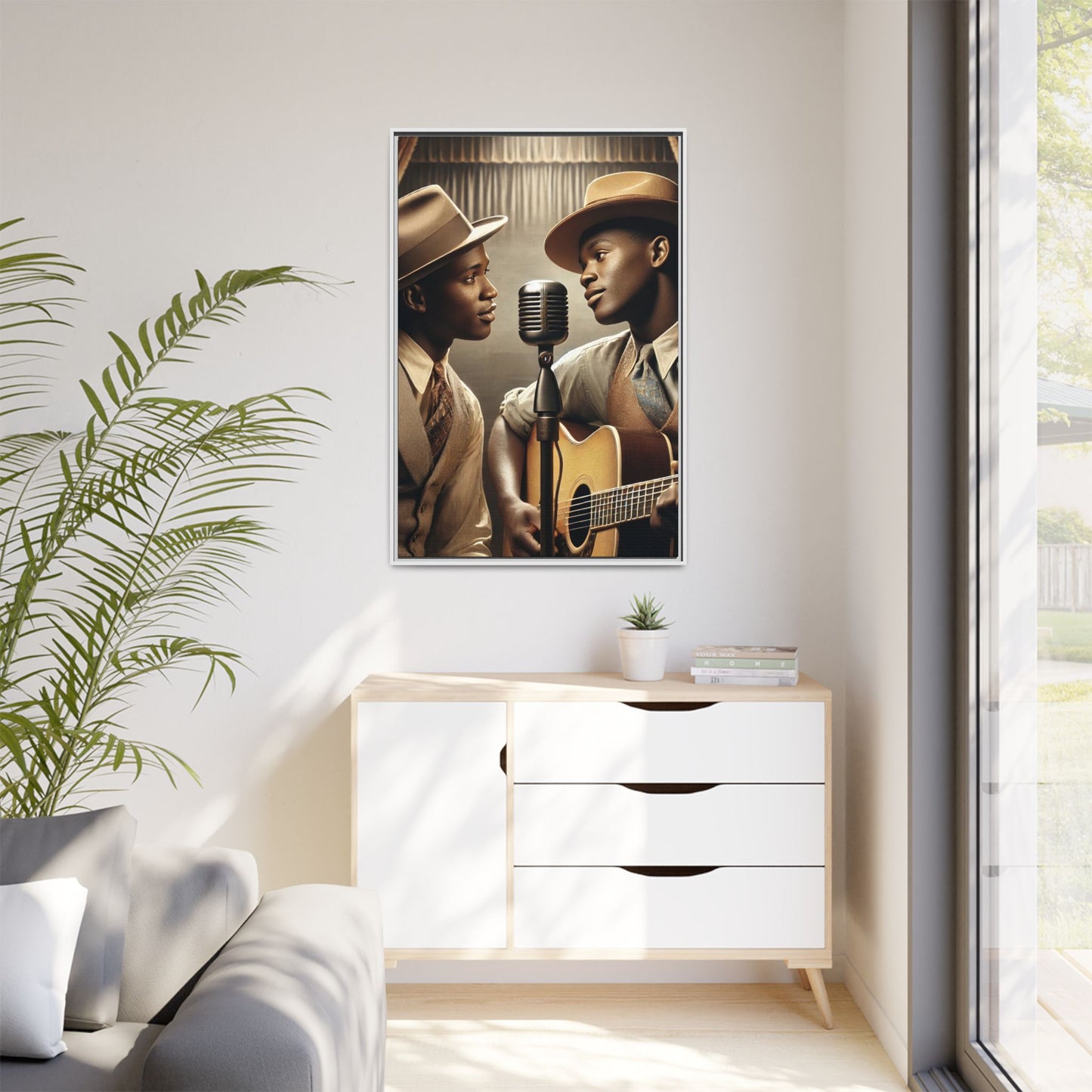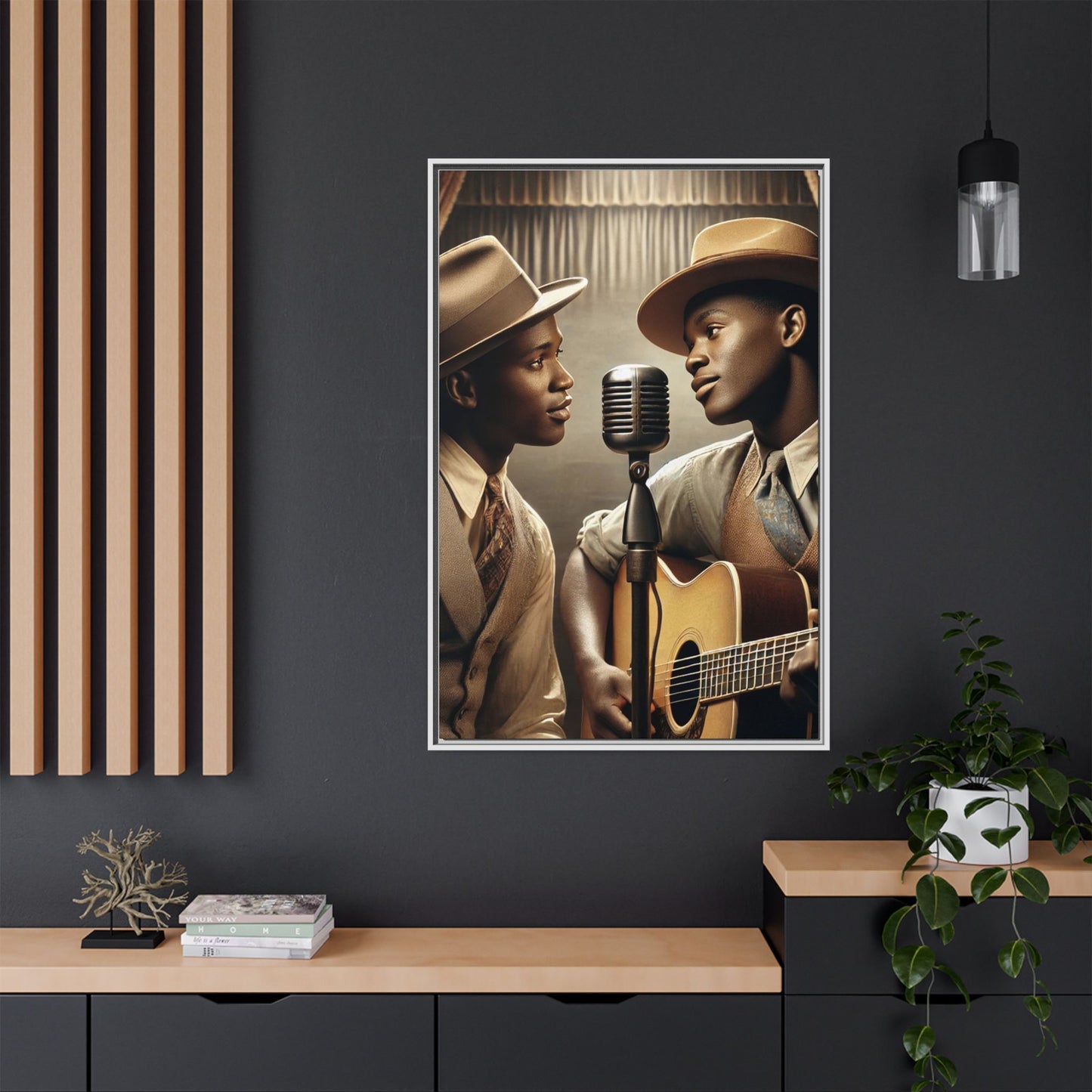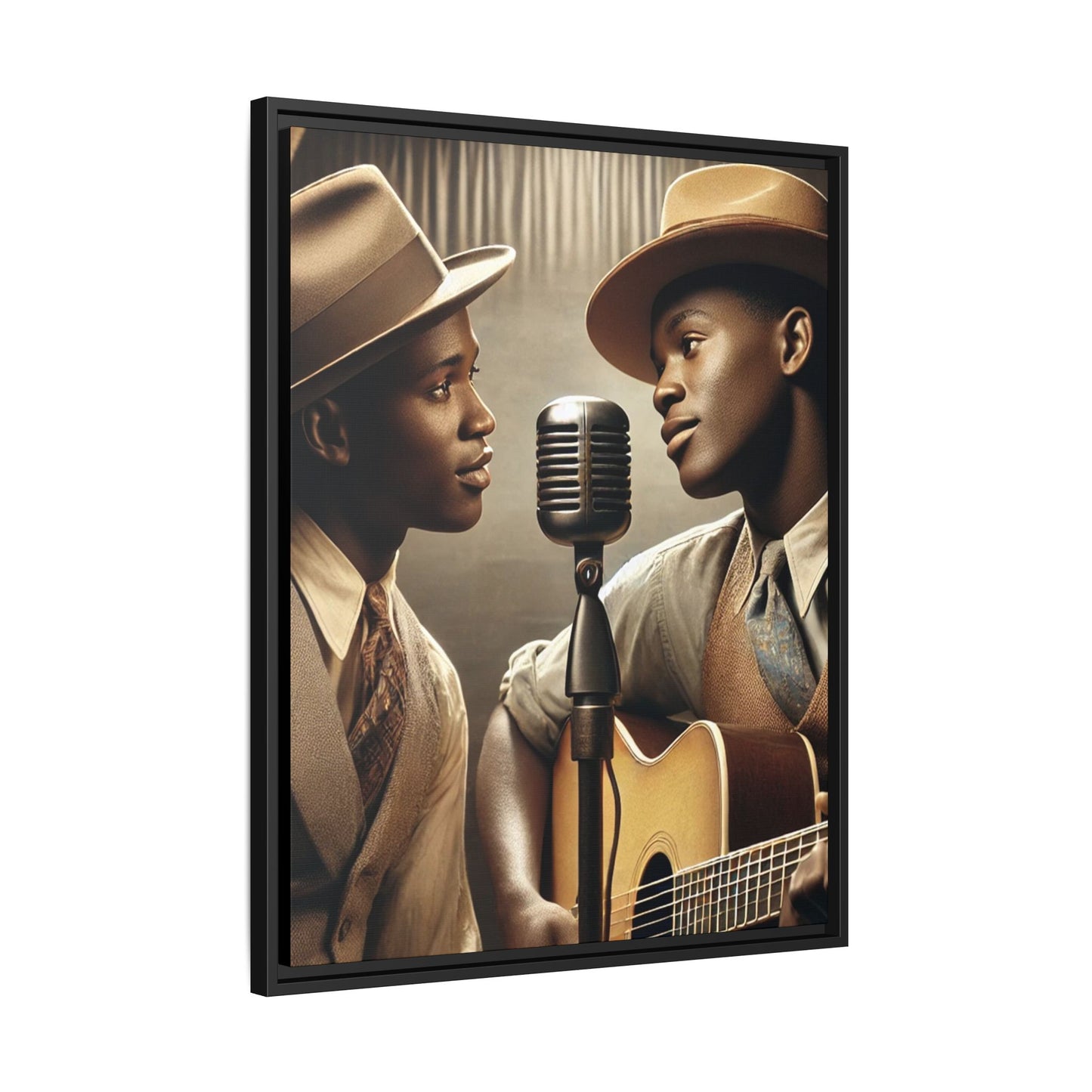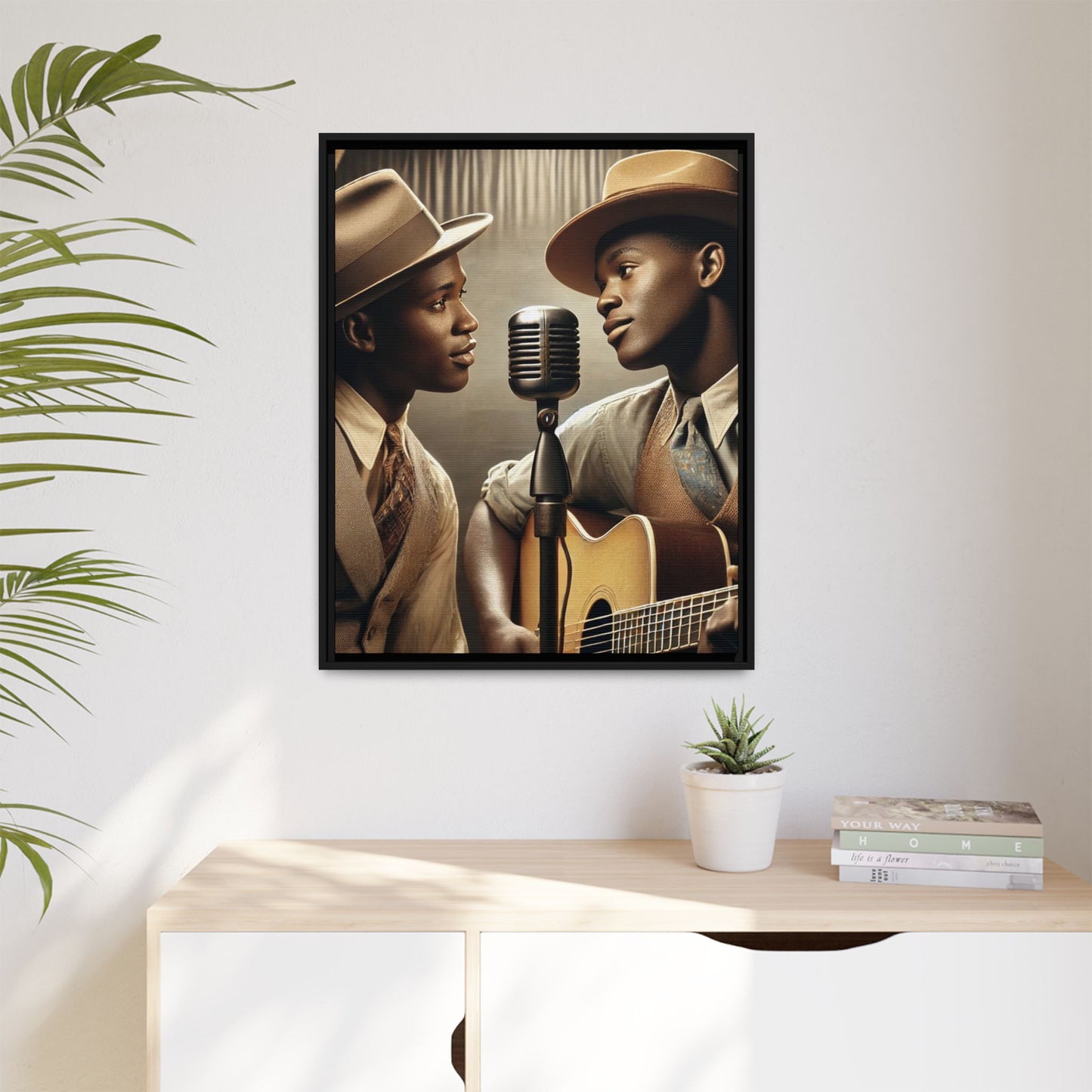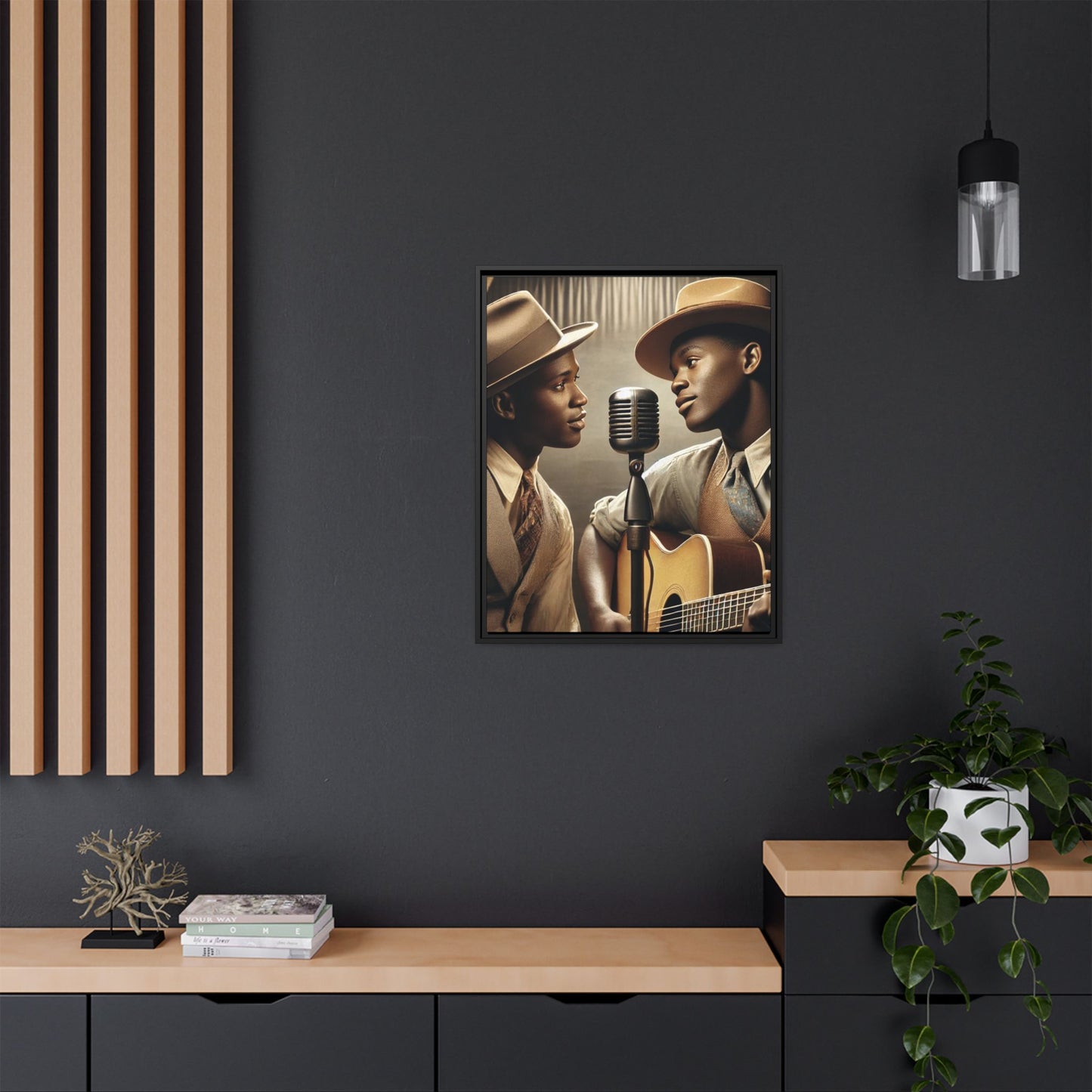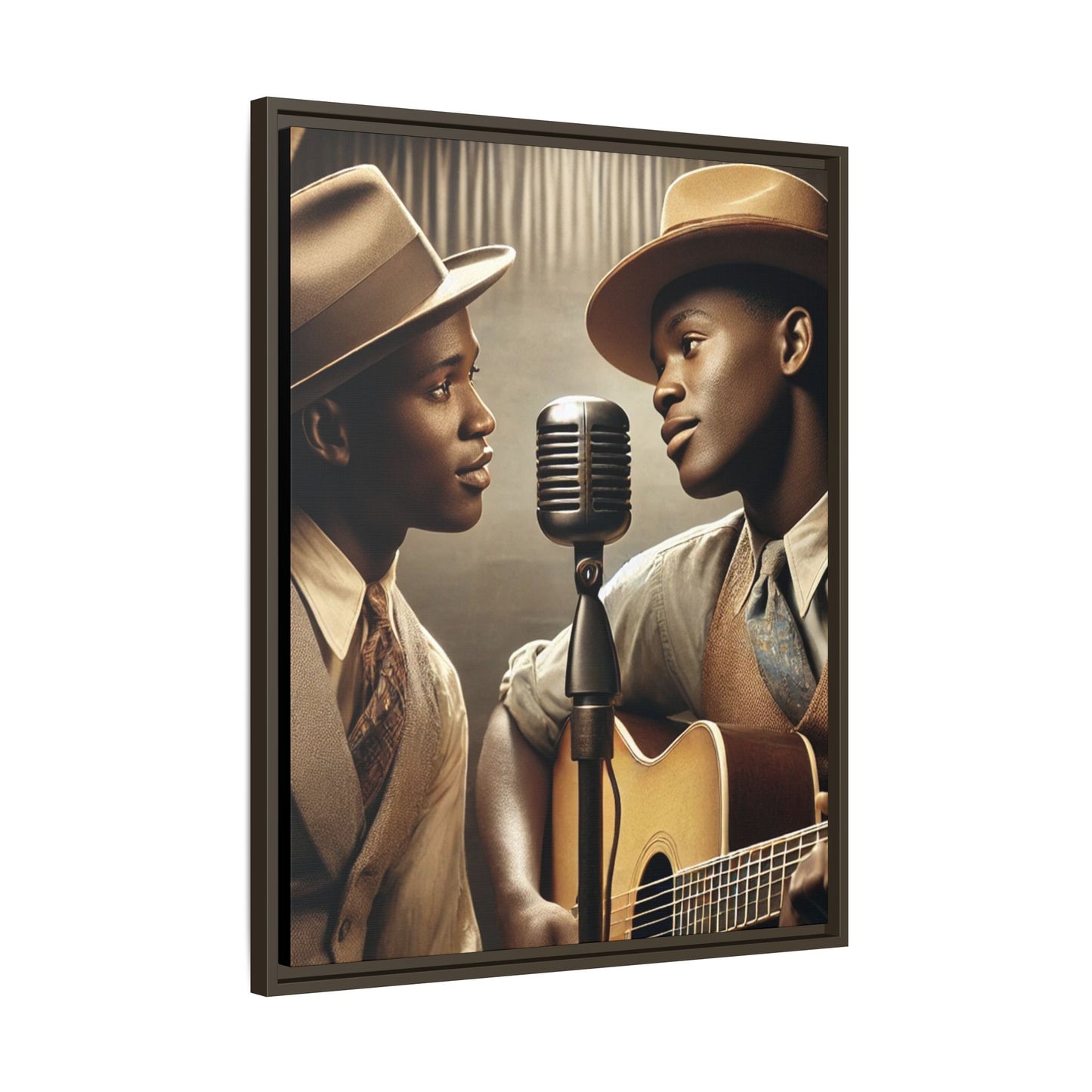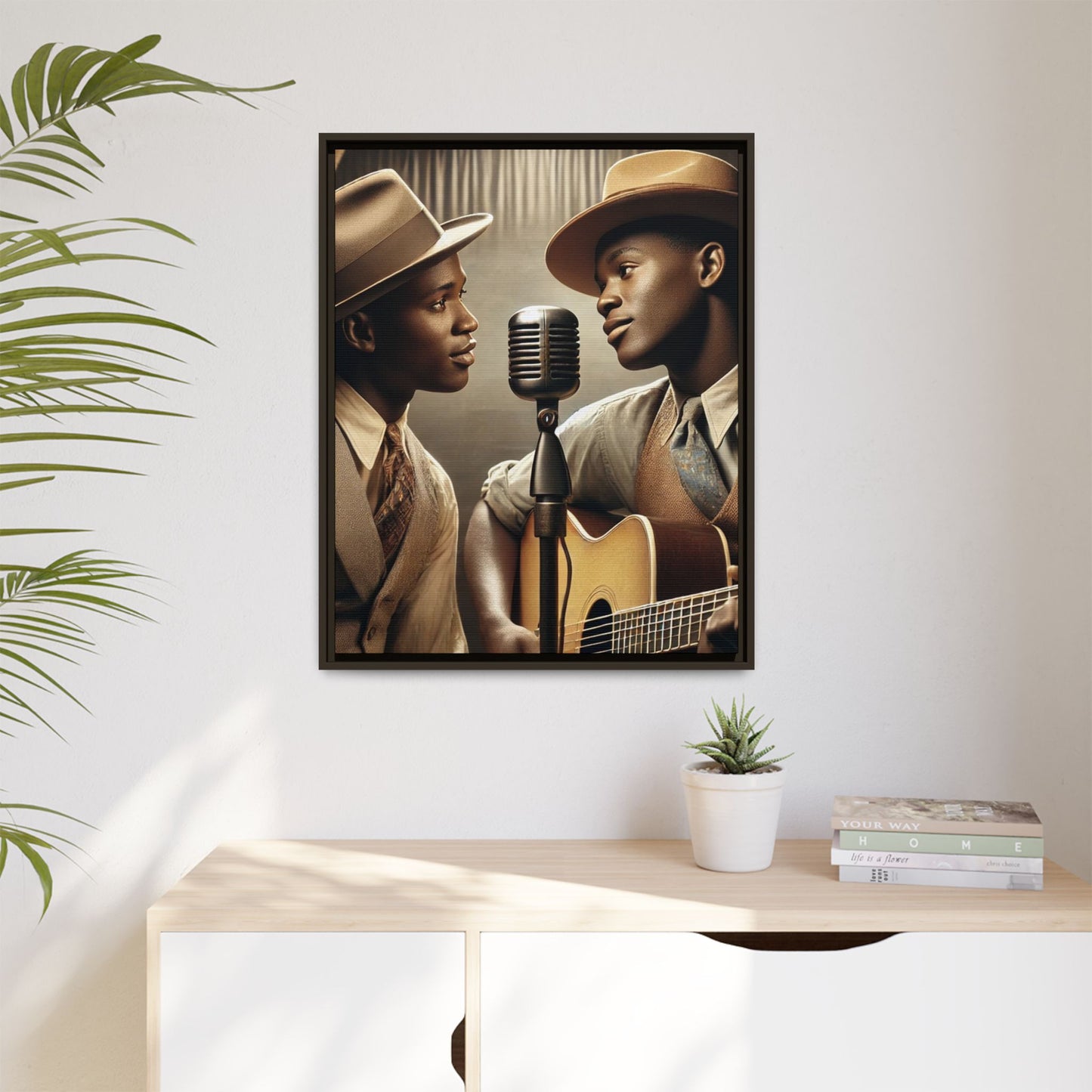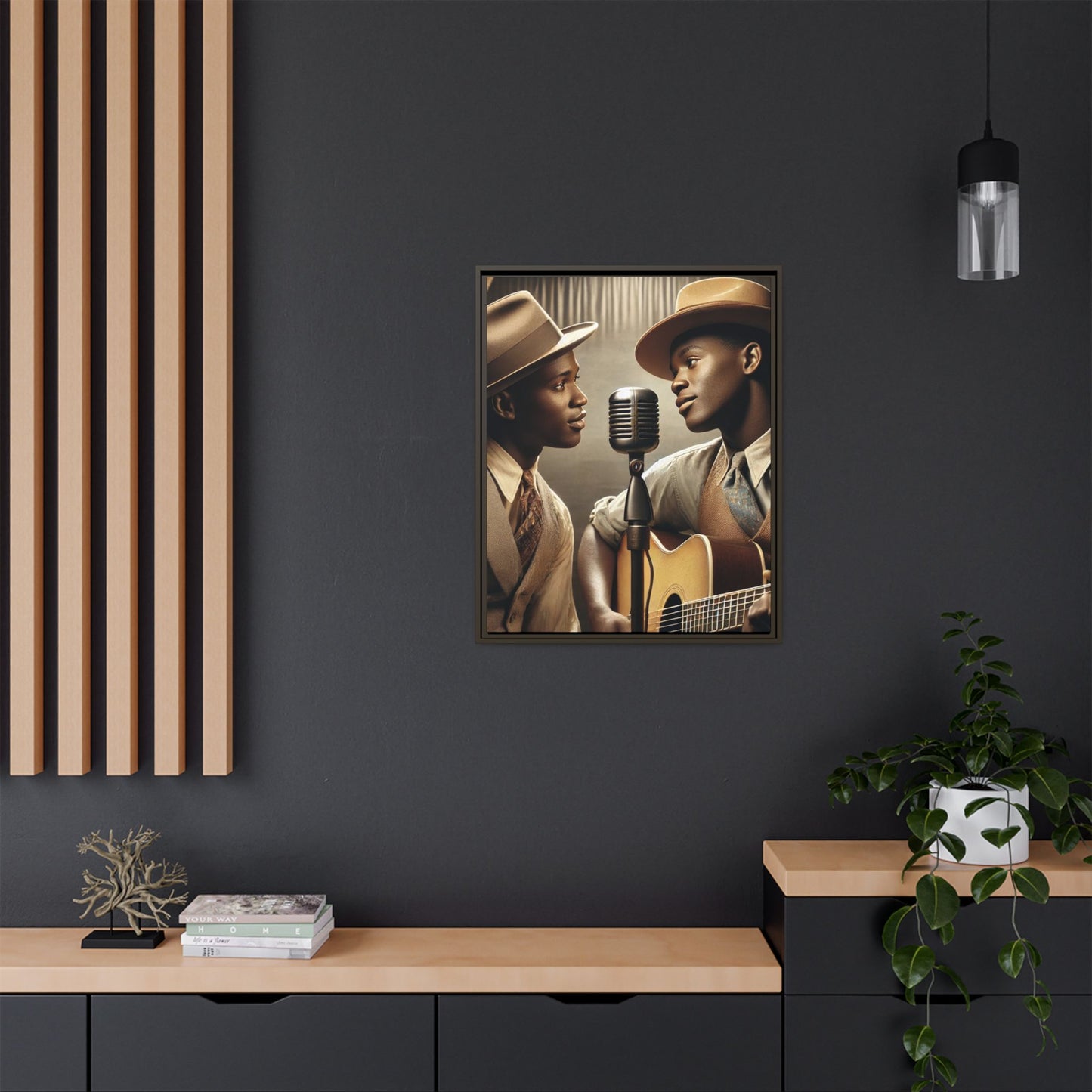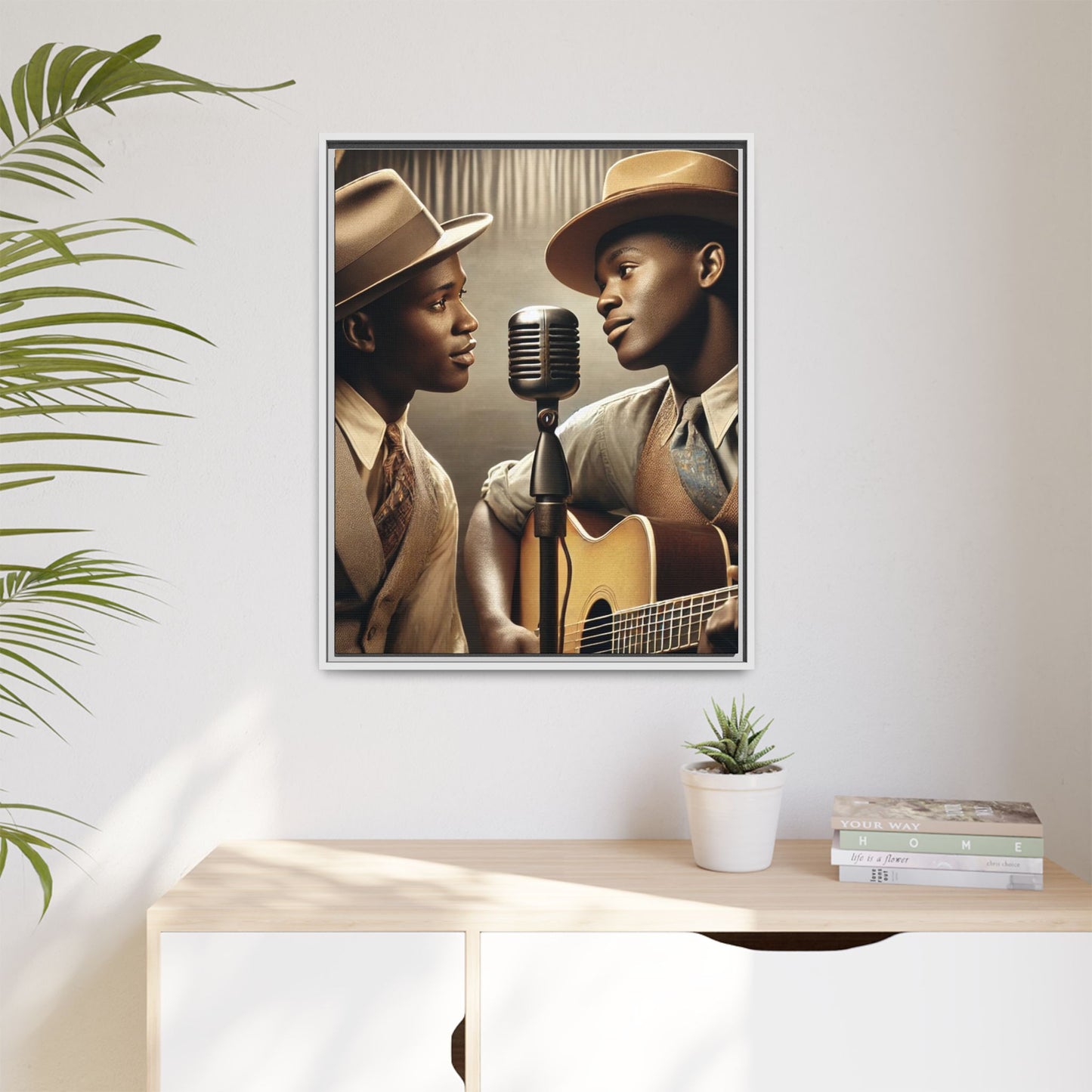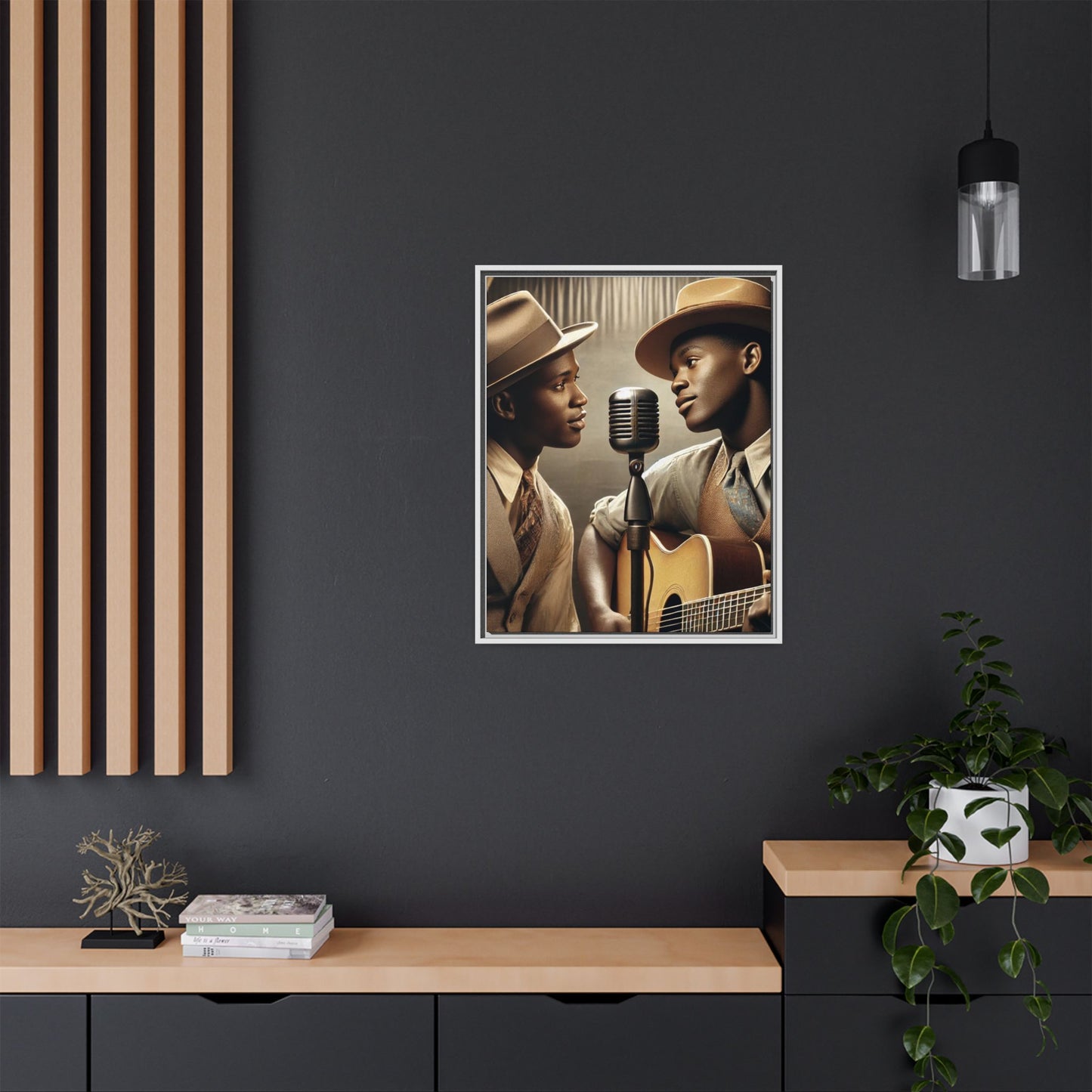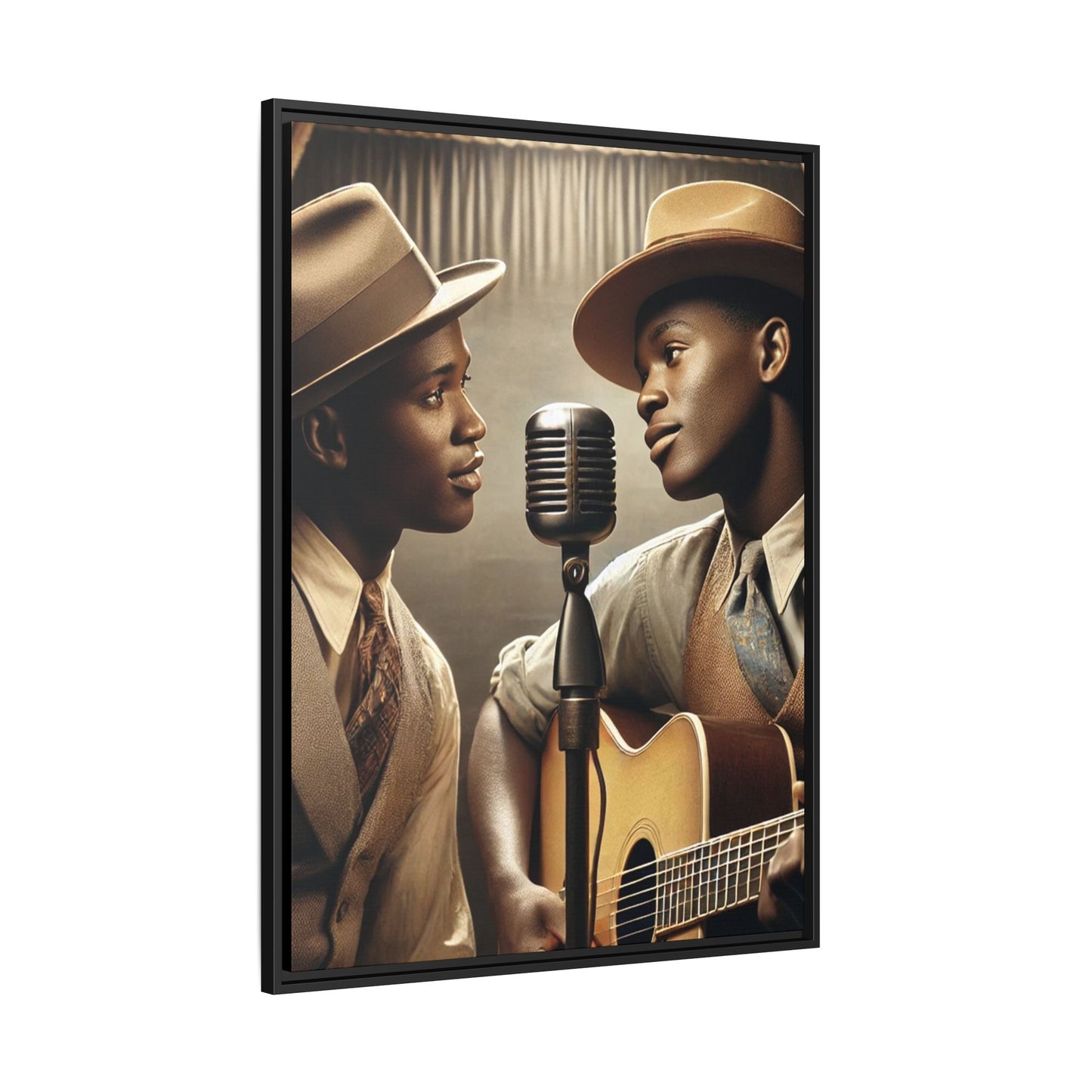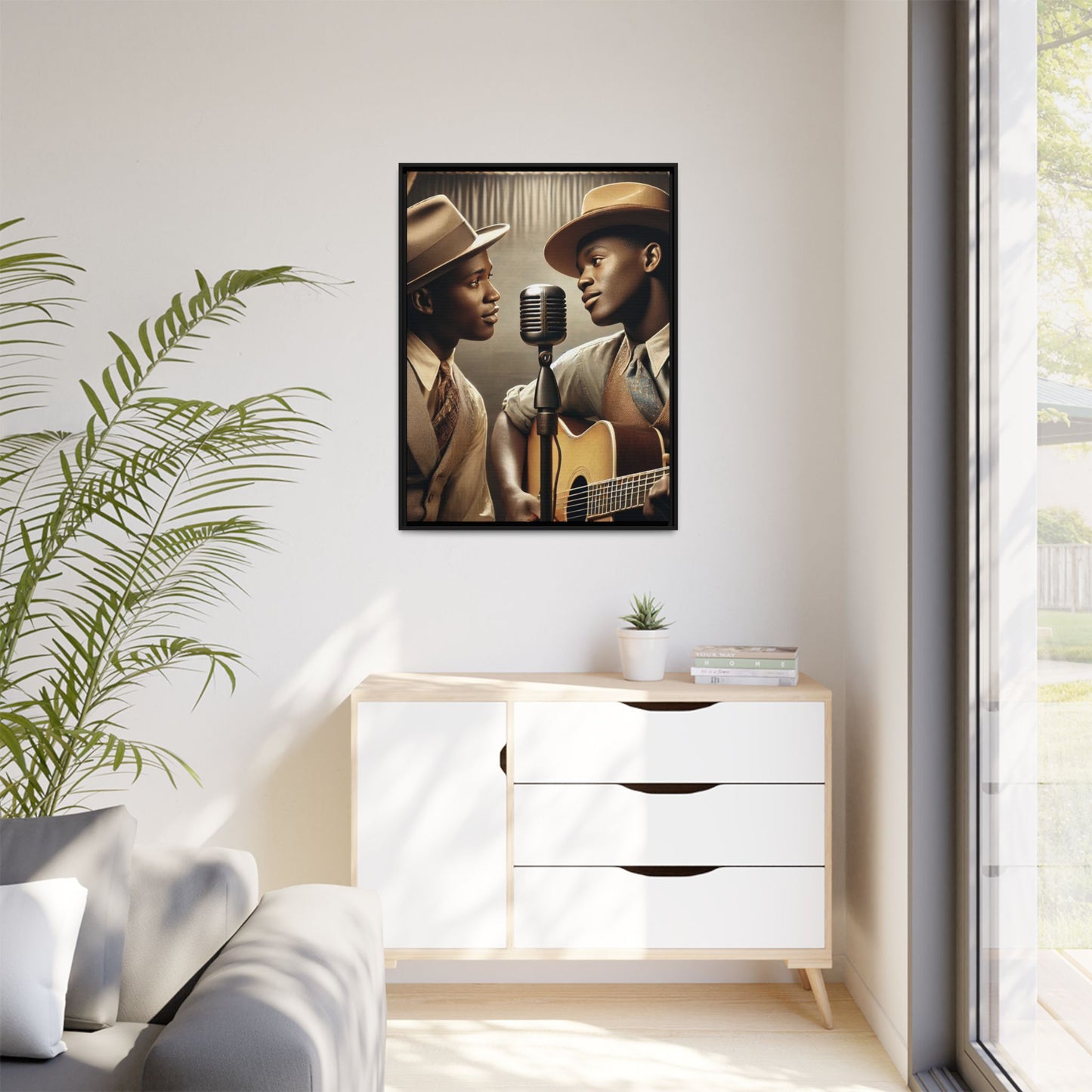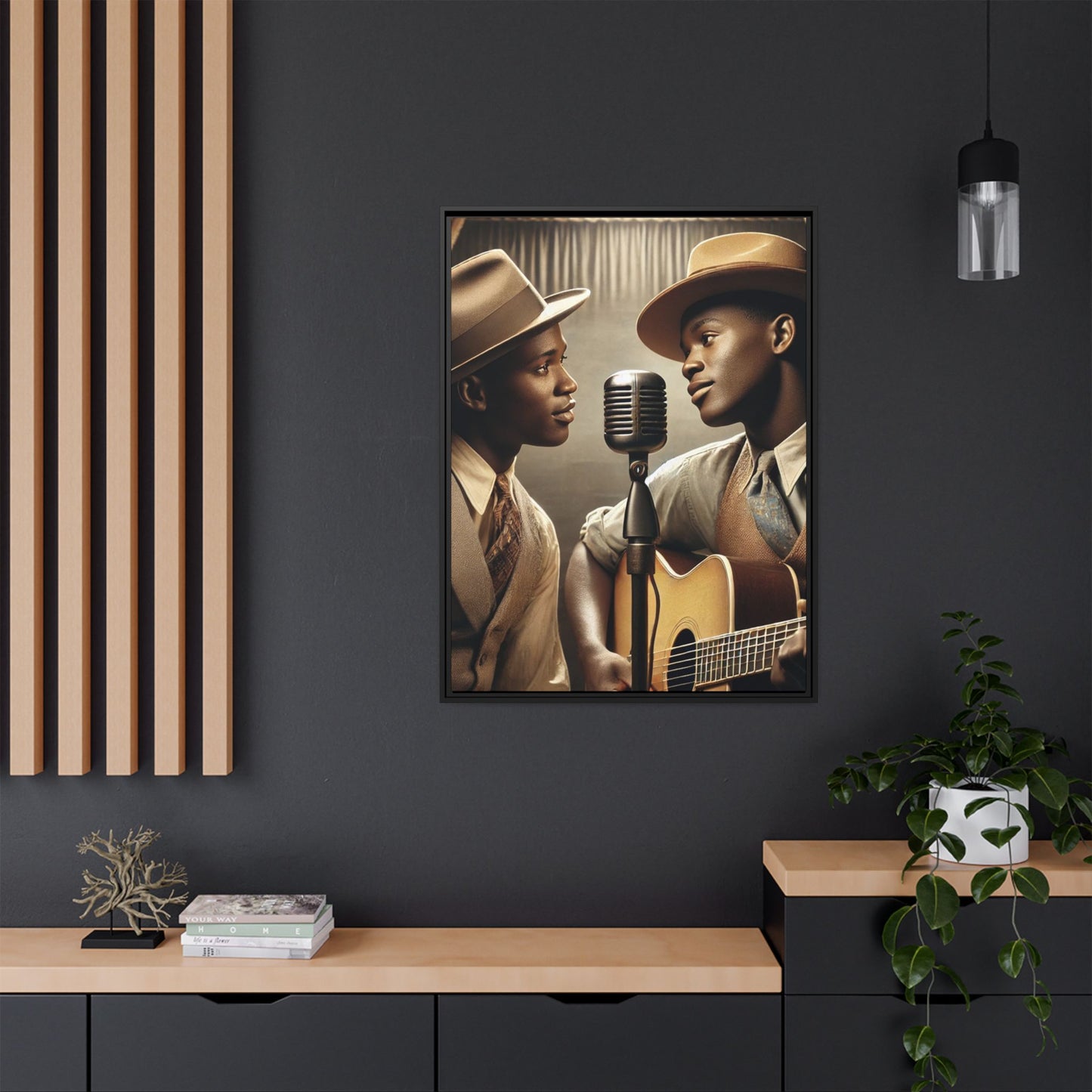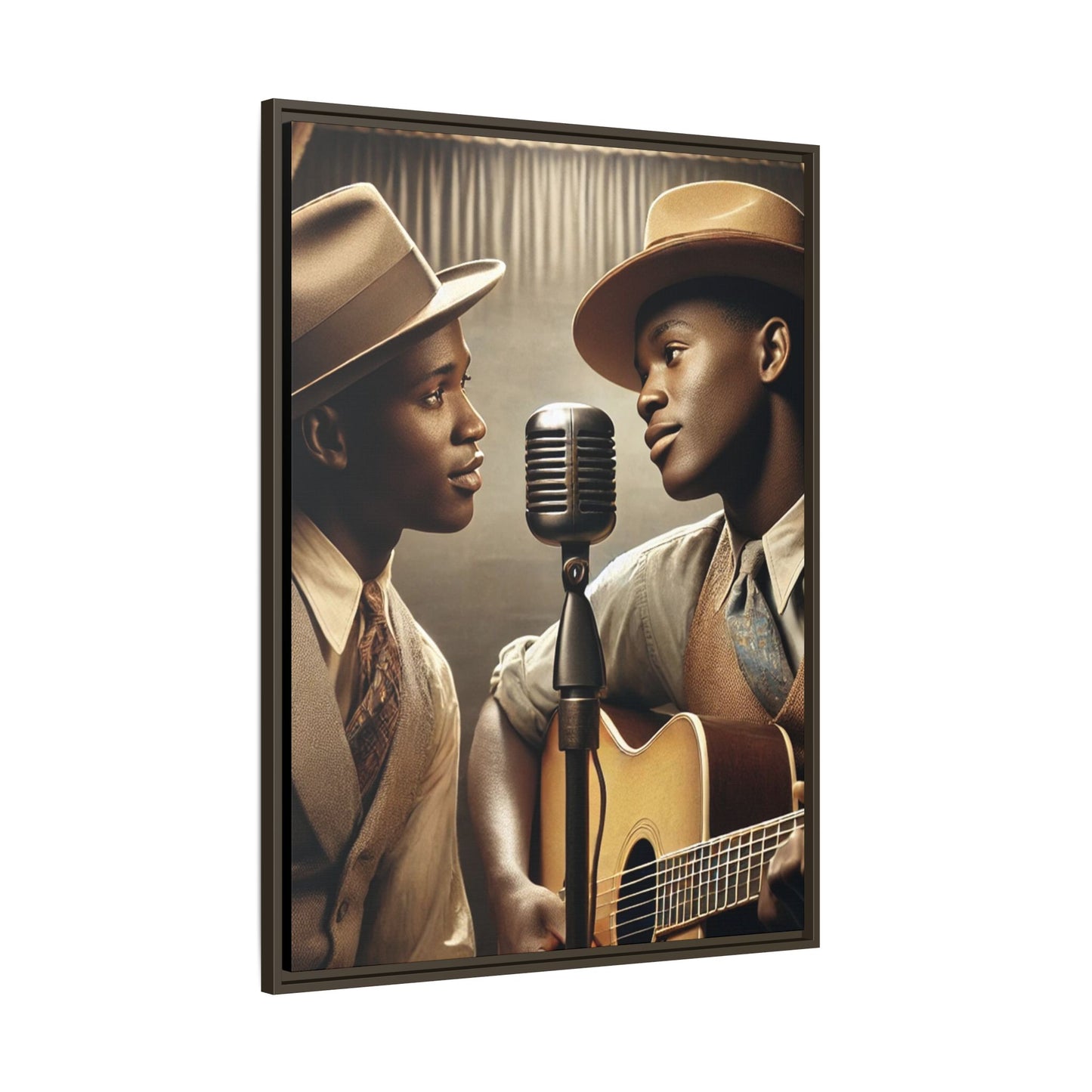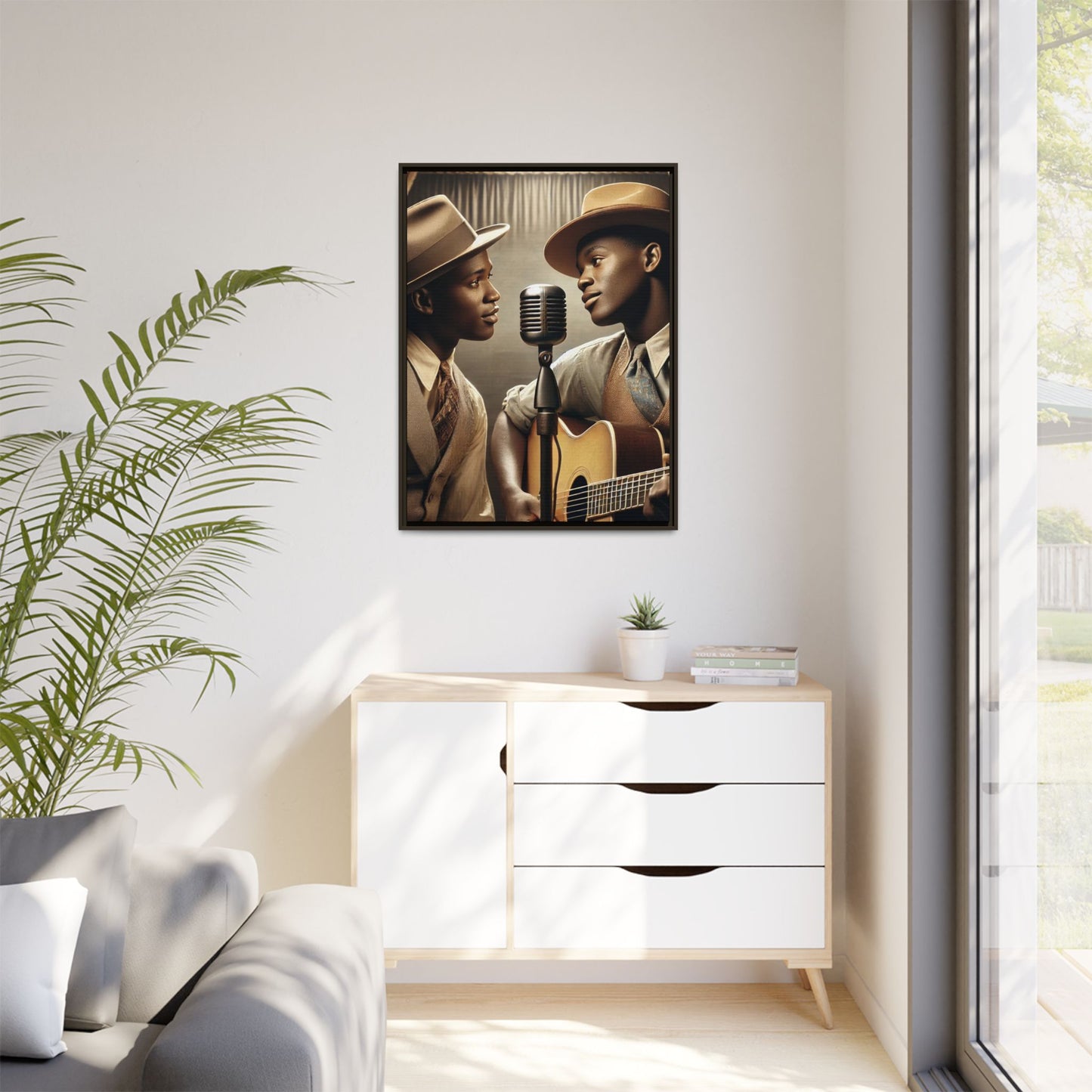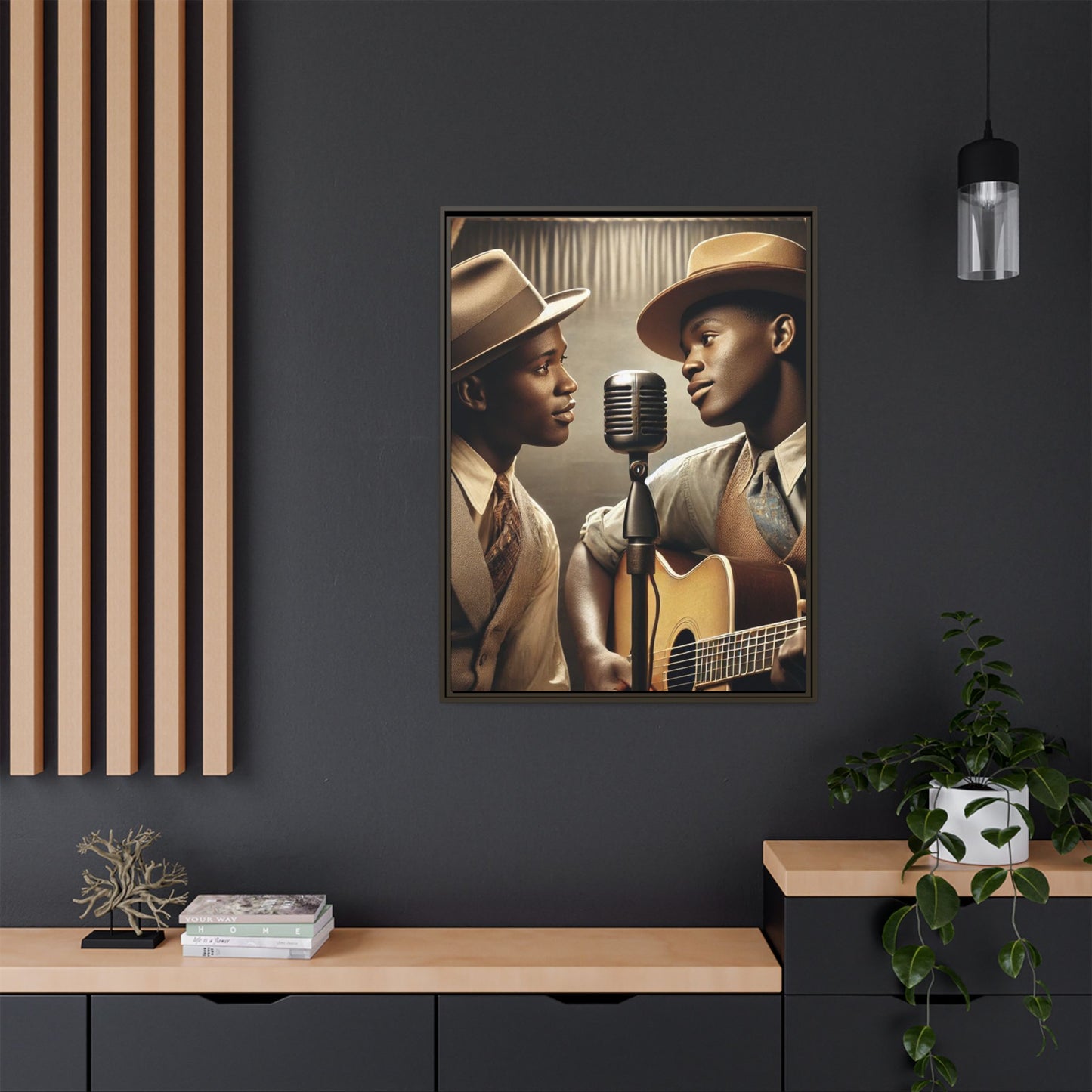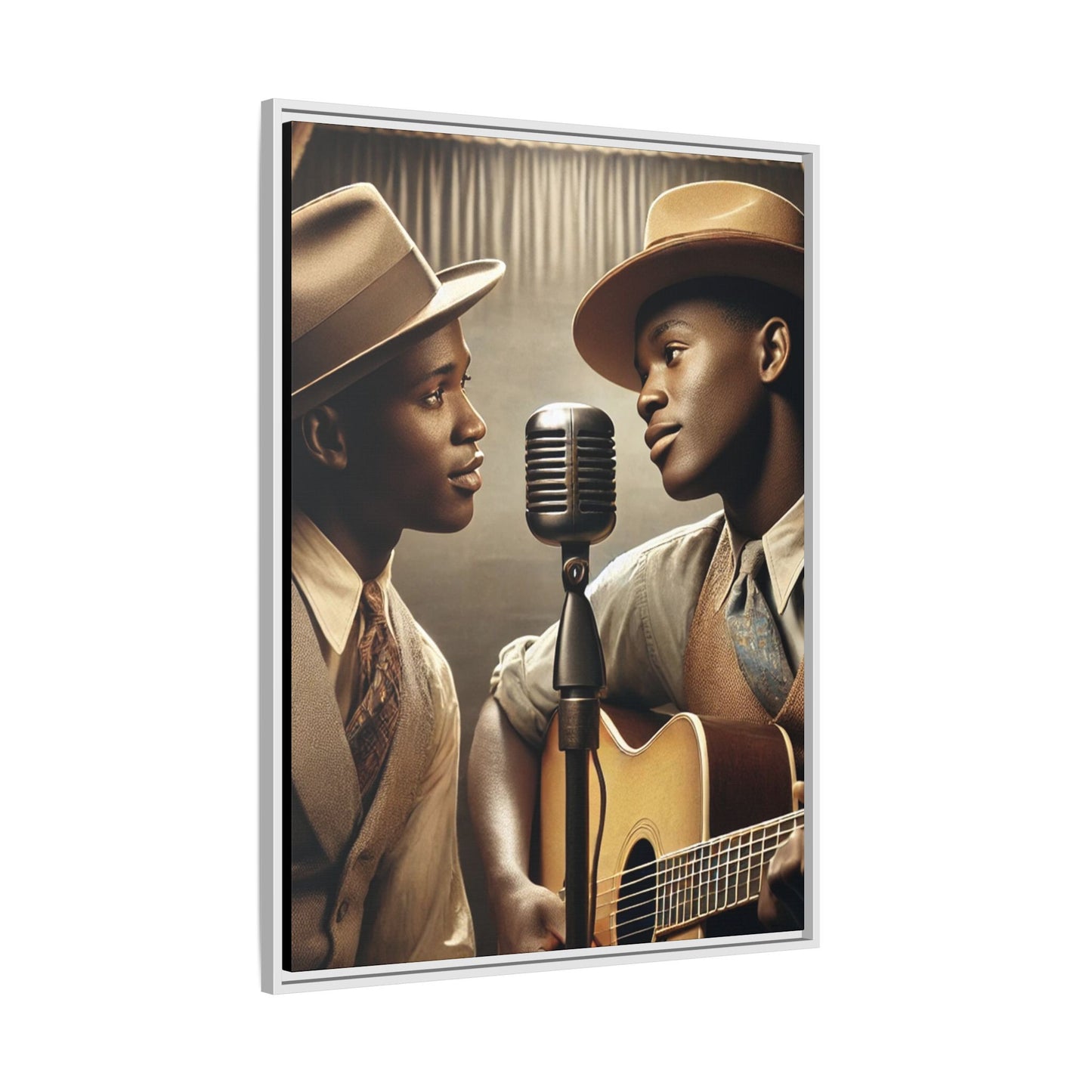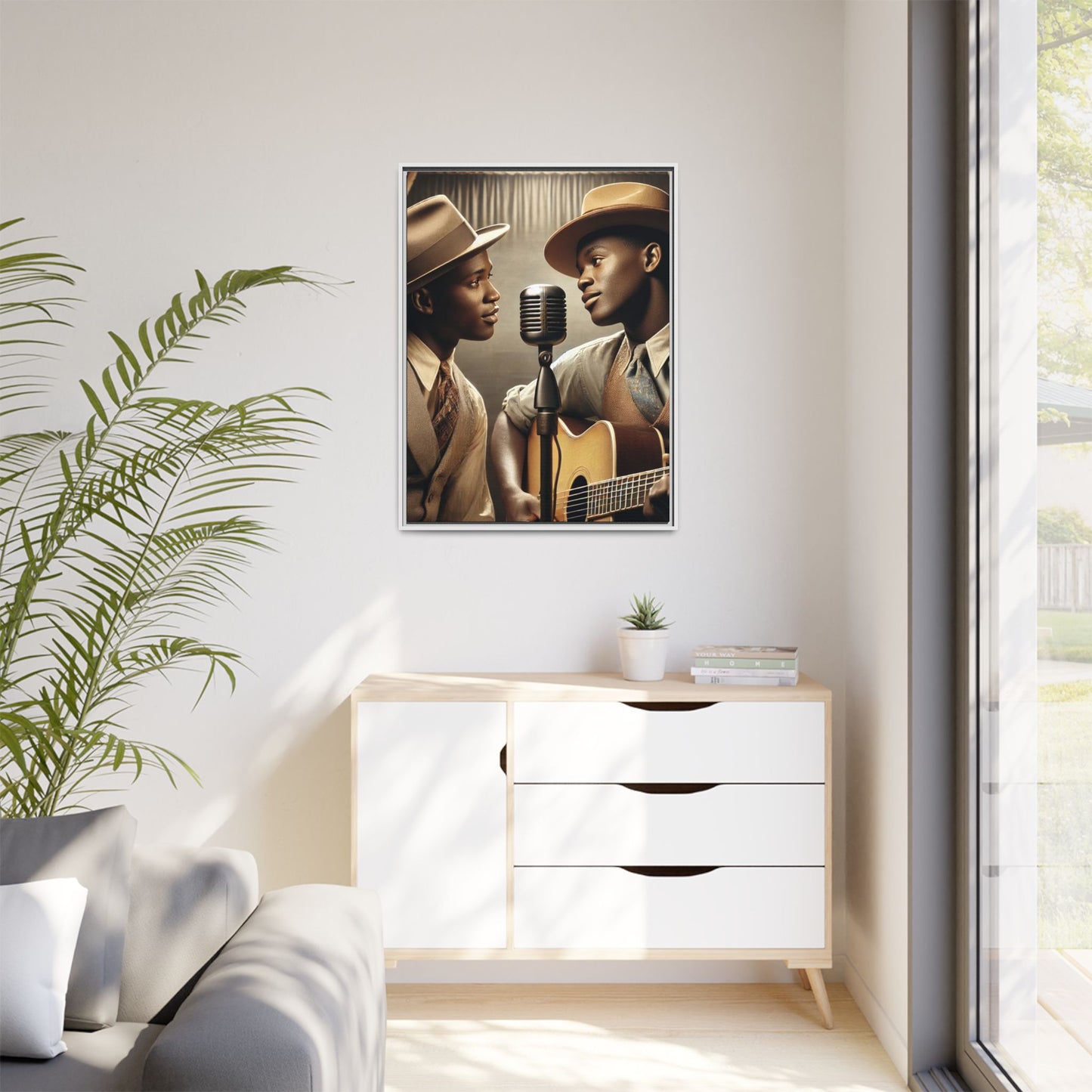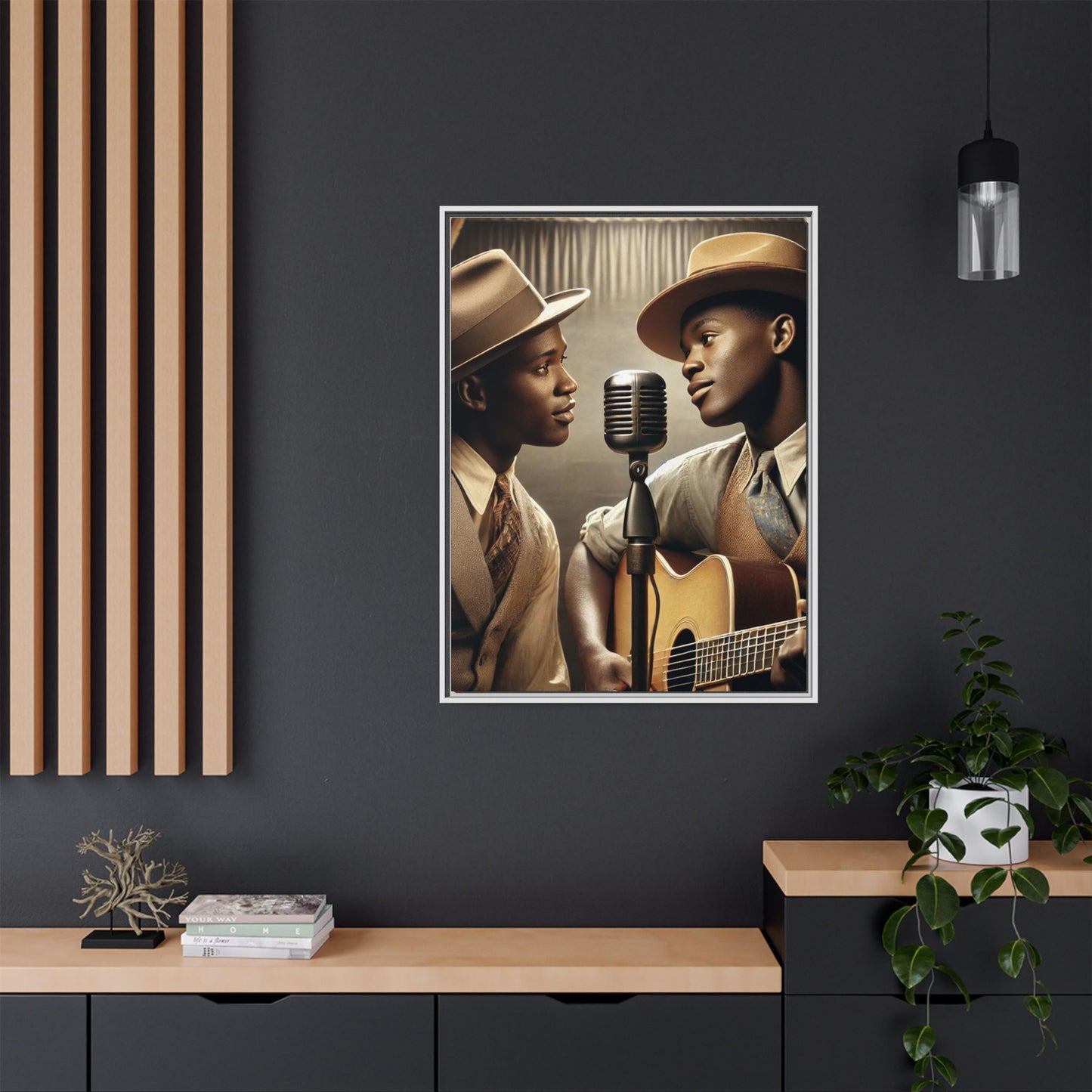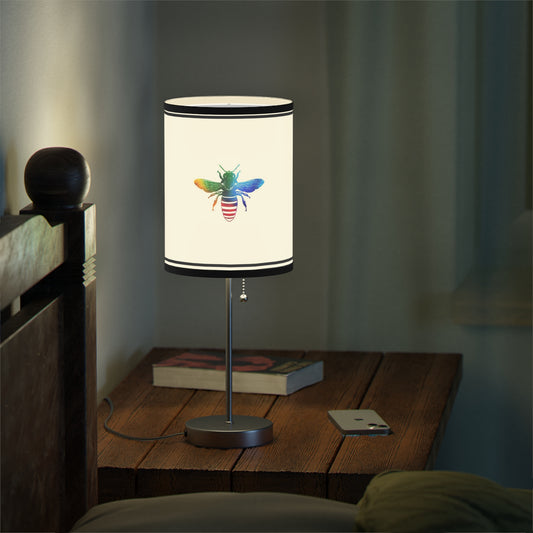This artwork captures a tender and intimate moment between an African-American queer couple recording a song in a 1930s-style recording studio. Dressed in vintage attire, each man wears a fedora and tie, exuding the elegance and charm of the era. They sit close together, one holding a guitar, their faces turned toward each other with expressions of admiration and connection. Between them stands an old-fashioned microphone, a central piece that adds an authentic touch to the setting.
The warm, sepia tones and soft lighting evoke a sense of nostalgia, transporting the viewer to a bygone era of jazz, blues, and heartfelt music. Their gaze and proximity suggest both a romantic and collaborative bond, as if the song they're recording reflects their shared journey and emotions. The backdrop of curtains and minimal studio decor enhances the intimacy of the scene, allowing the focus to remain on their expressions and the vintage recording atmosphere.
This artwork beautifully honors the intersection of love, art, and resilience, celebrating queer representation within the historical context of African-American music culture. It conveys a sense of timeless passion and harmony, reflecting themes of unity and creativity in a setting that feels both deeply personal and culturally significant.
This case study series examines the life and work of Midwestern artist Grant Wood. Known for his role in the Regionalist art movement, Wood’s paintings capture the spirit of rural American life with a distinct style inspired by Gothic and Renaissance art. His most iconic works, like American Gothic, reflect a meticulous attention to detail and a flat, decorative approach, showcasing earthy, muted colors—greens, browns, and blues—that echo the landscapes and life of the Midwest. These colors, punctuated occasionally with bright reds or yellows, create a grounded yet nostalgic atmosphere, resonating with the enduring American spirit.
This study is also a tribute to Wood as a queer artist—a truth that he may have kept concealed due to the social and cultural norms of his time. While the term gay didn’t gain mainstream use until the 1960s, queer has since become an inclusive, positive label within the LGBTQ+ community. It embraces a spectrum of identities that defy traditional definitions of sexuality and gender, reflecting the diversity and resilience of those who navigate life outside conventional norms. Reclaiming the term allows us to acknowledge the full breadth of Wood’s identity as part of his legacy.
In exploring Wood’s work, this series imagines what his art might have looked like if he had the freedom to express his authentic self openly, without societal restrictions. It also raises questions about the impact of cultural bias on art preservation—wondering if some pieces that might have reflected same-sex relationships were perhaps destroyed or never created due to the fear of judgment. These case studies honor Grant Wood’s authenticity, celebrating his contributions as a trailblazer in American art and recognizing the need for broader representation in galleries and museums today.
Please note: Slight size variations of +/- 1/8" (3.2mm) may occur due to the production process.
- Cotton and polyester canvas composite with a special proprietary coating
- Sustainably sourced pinewood frame
- Available in multiple sizes and frame colors
- Horizontal, vertical, and square options available
- Sawtooth hanging hardware included.
